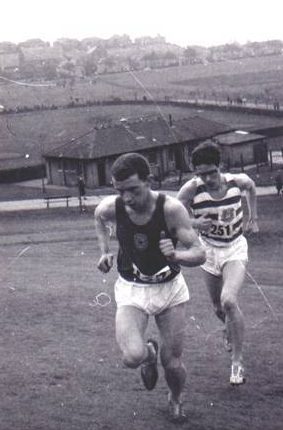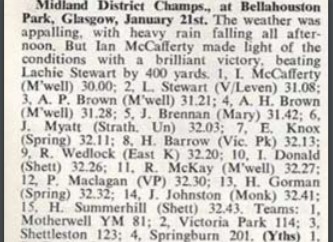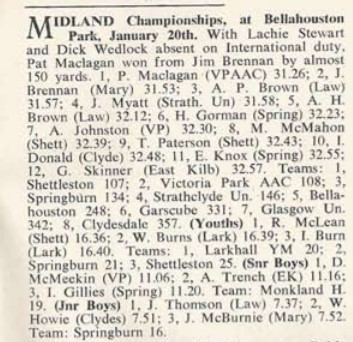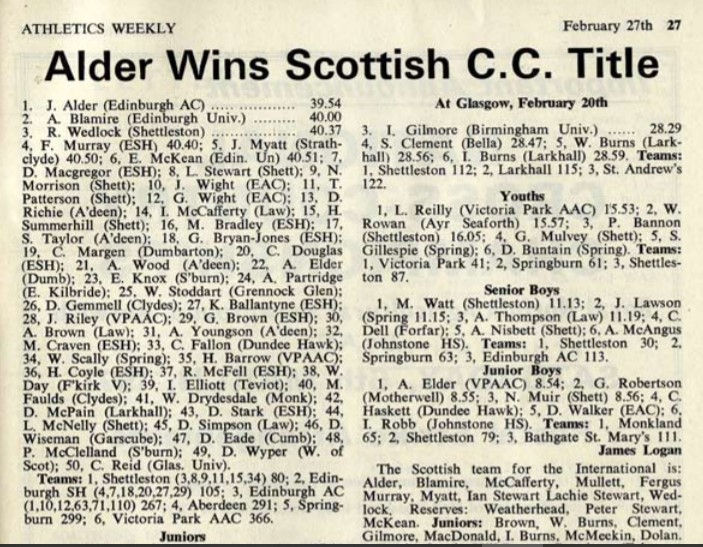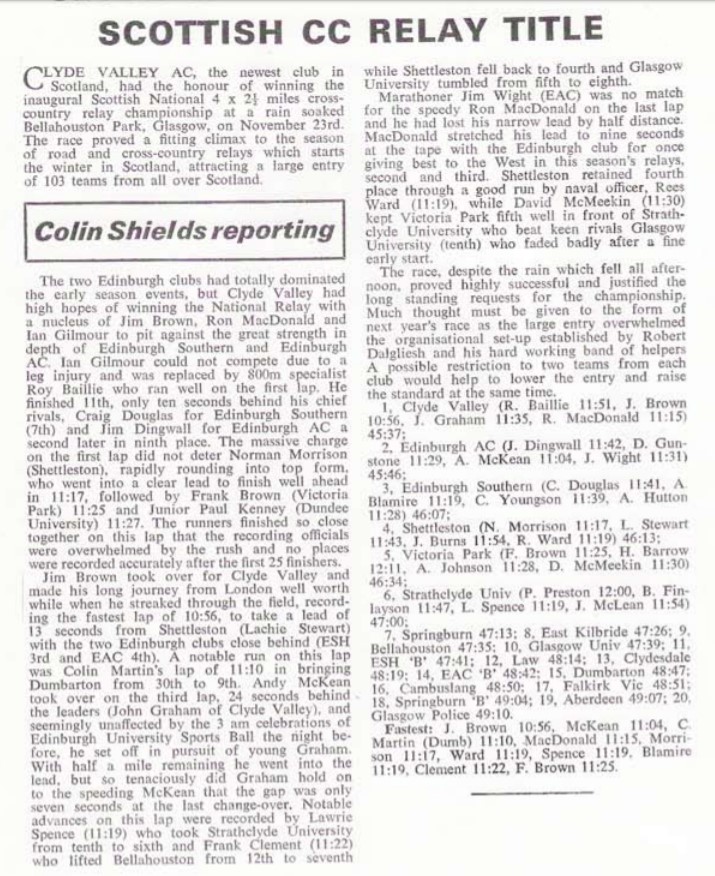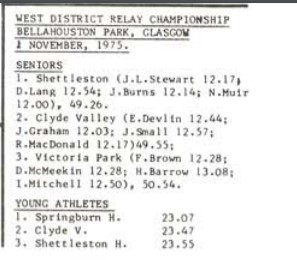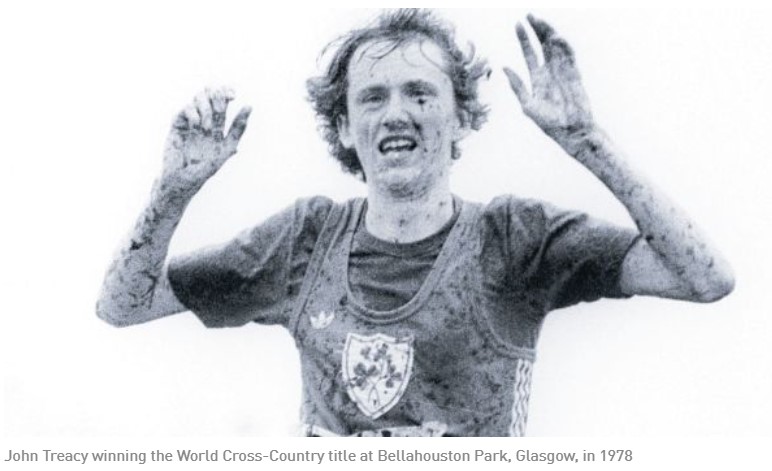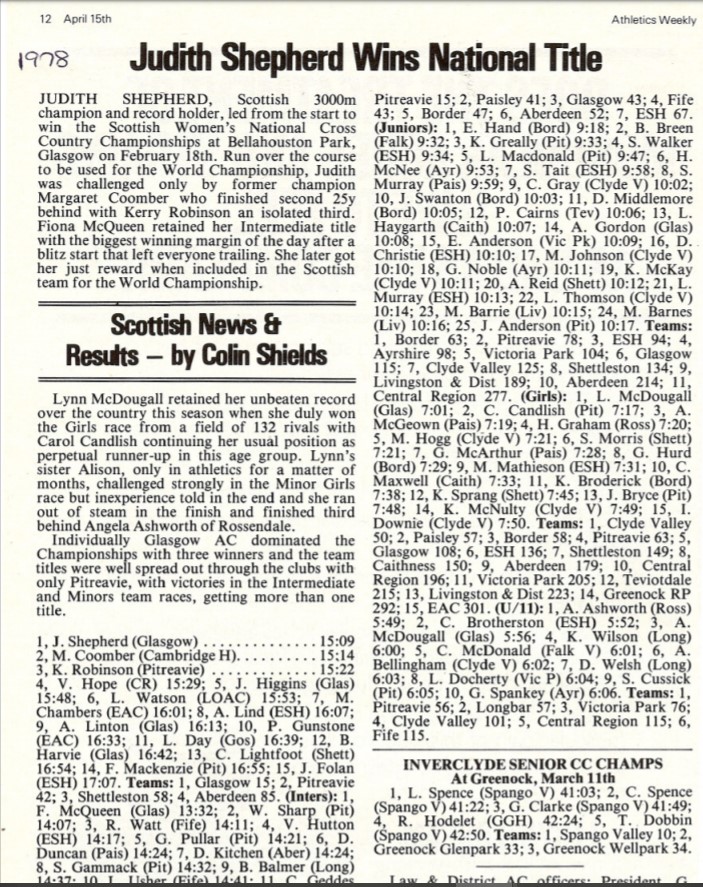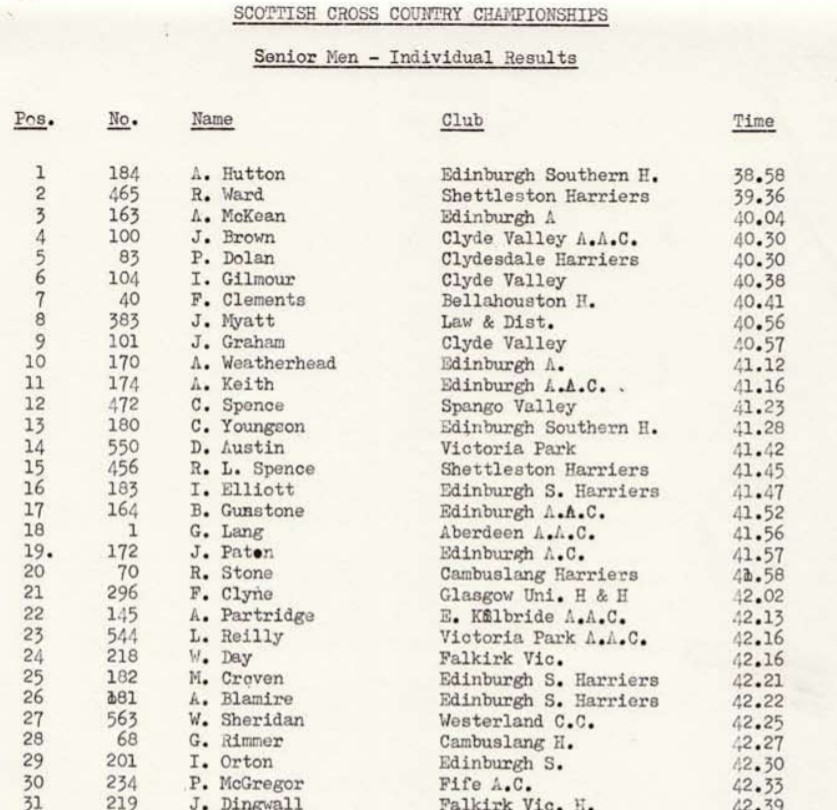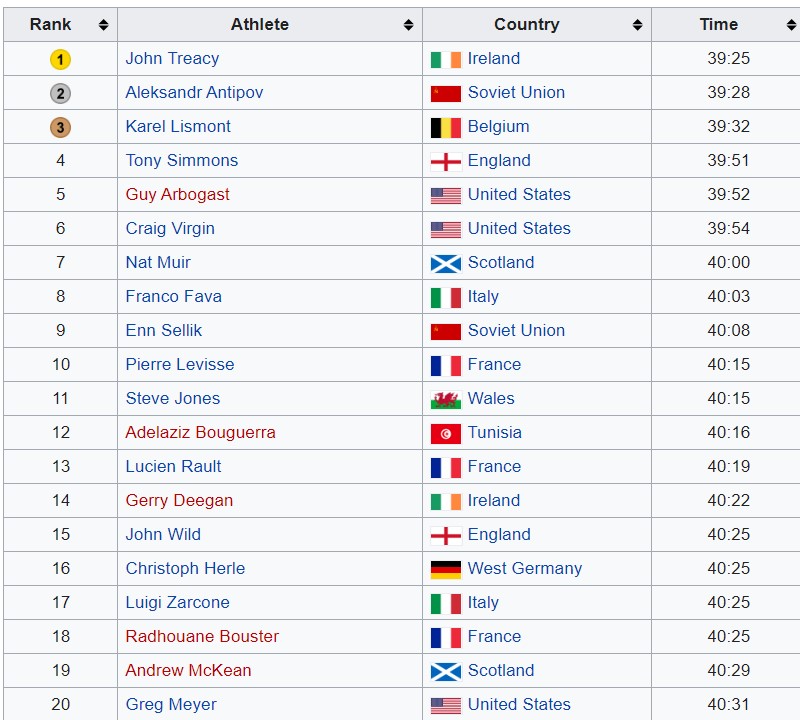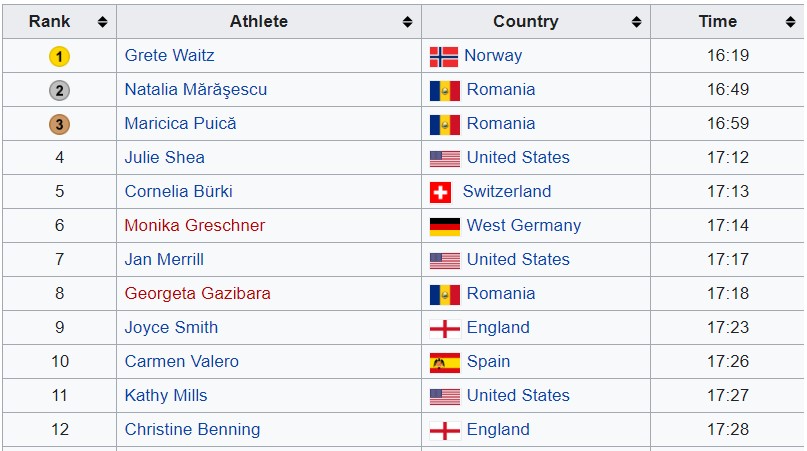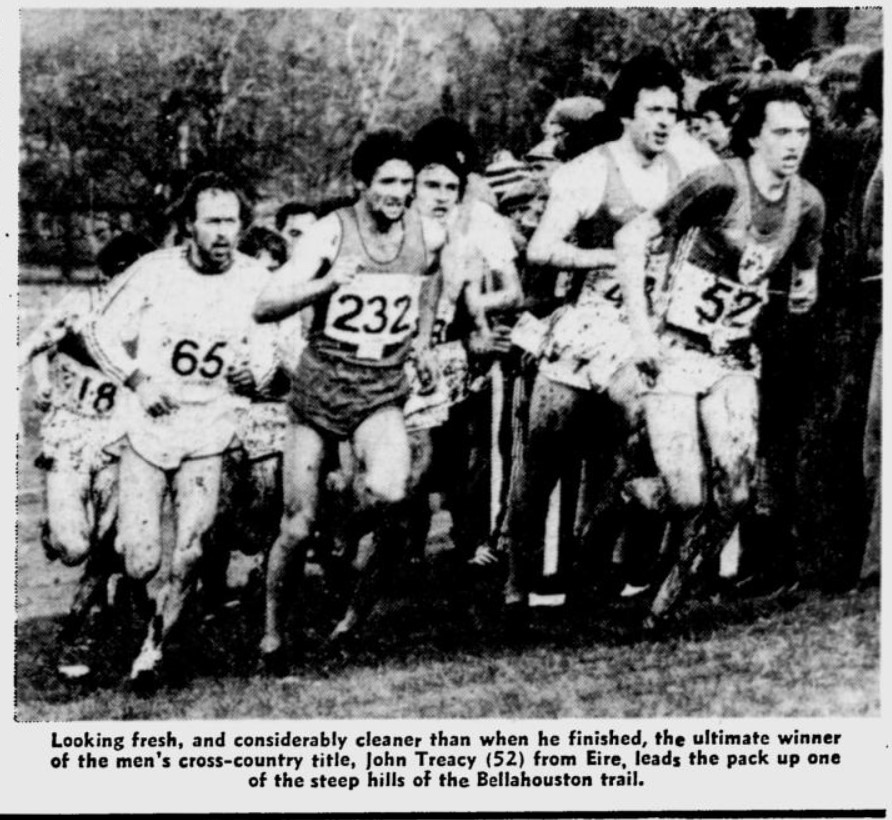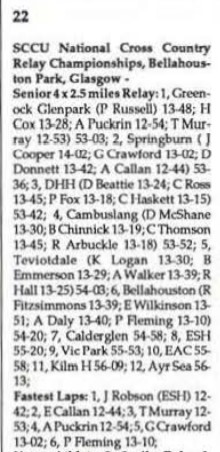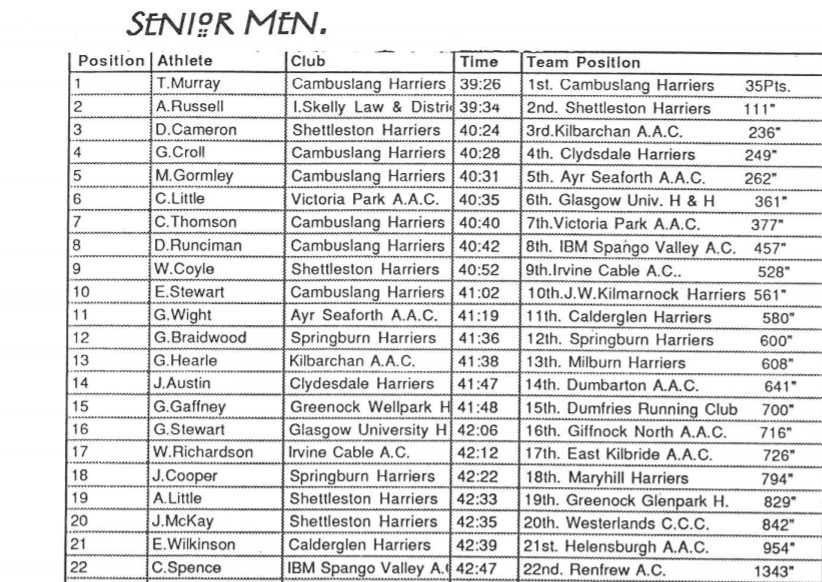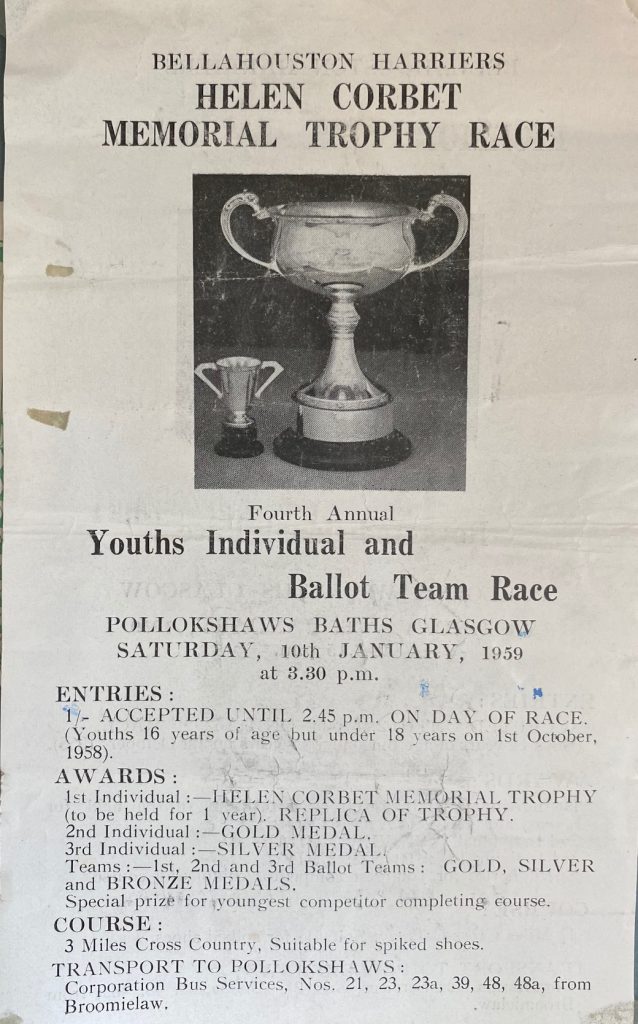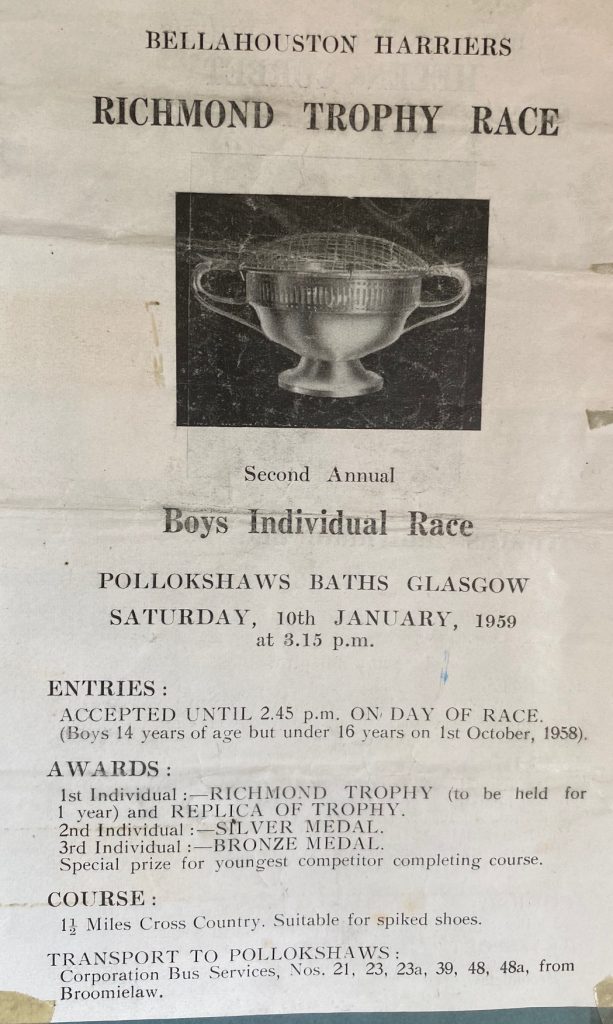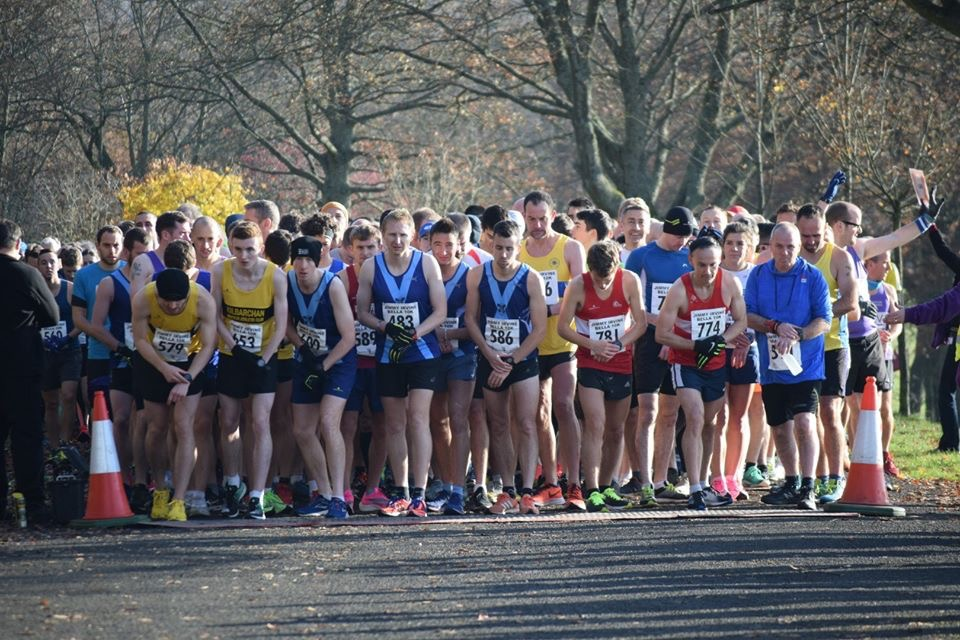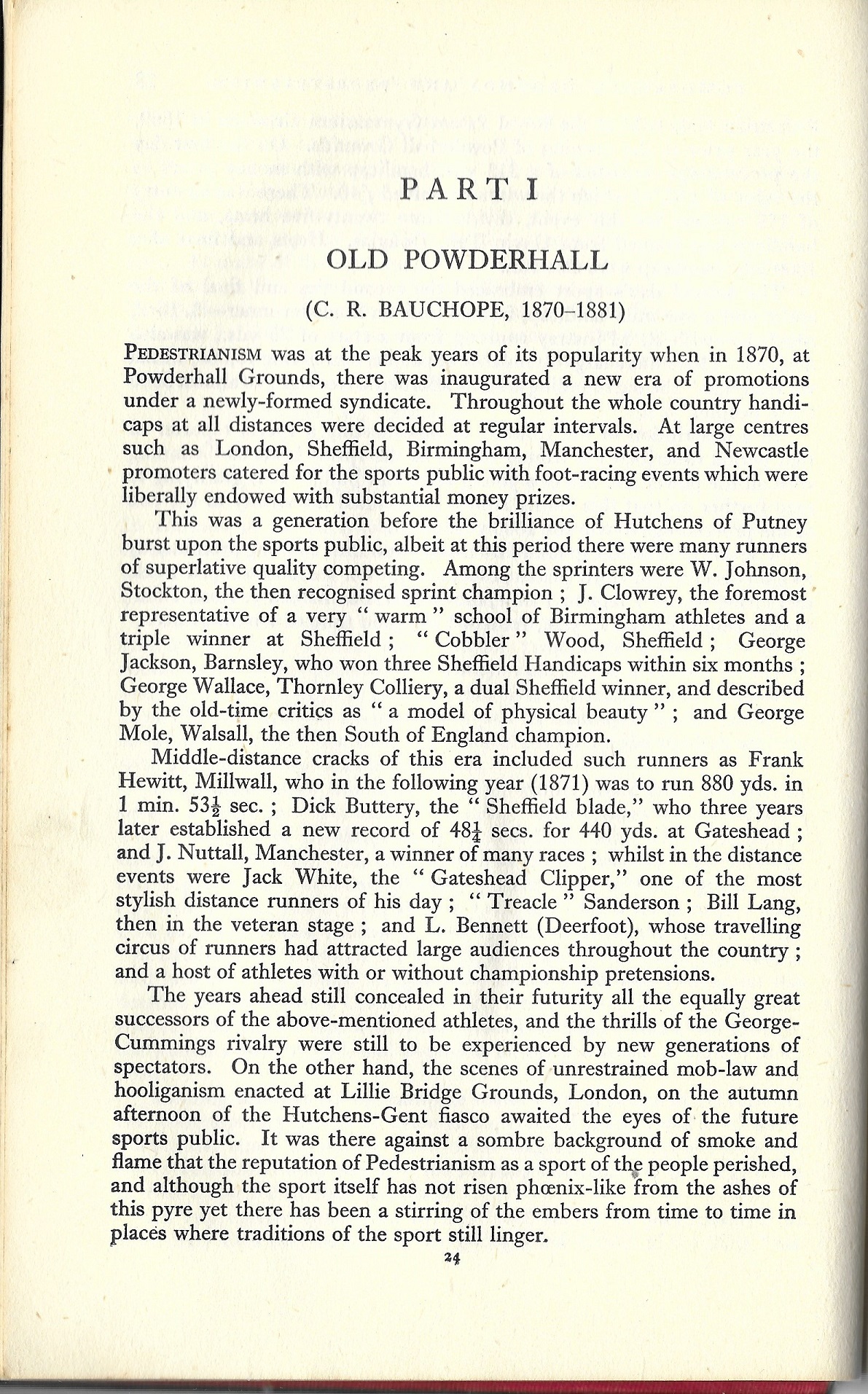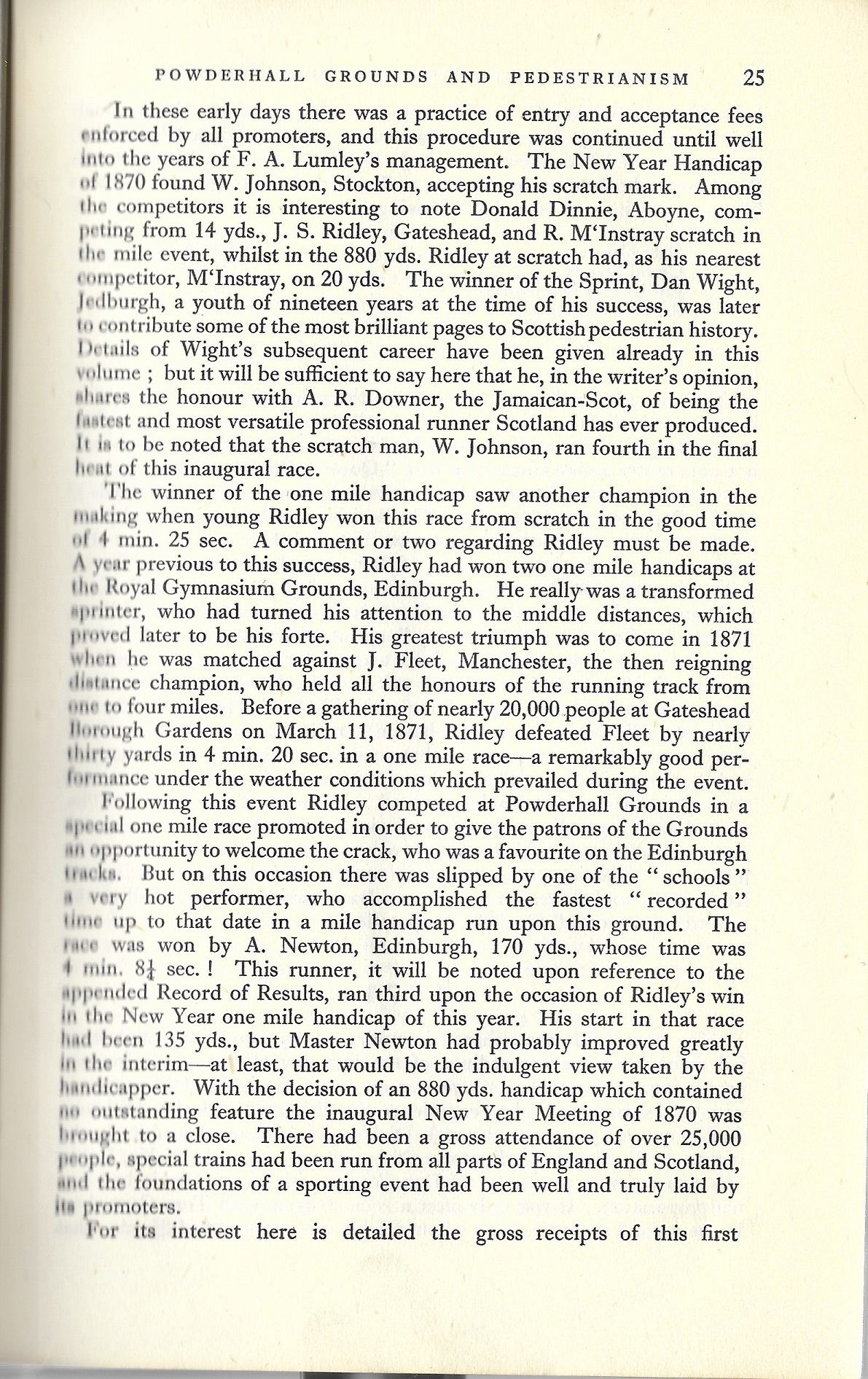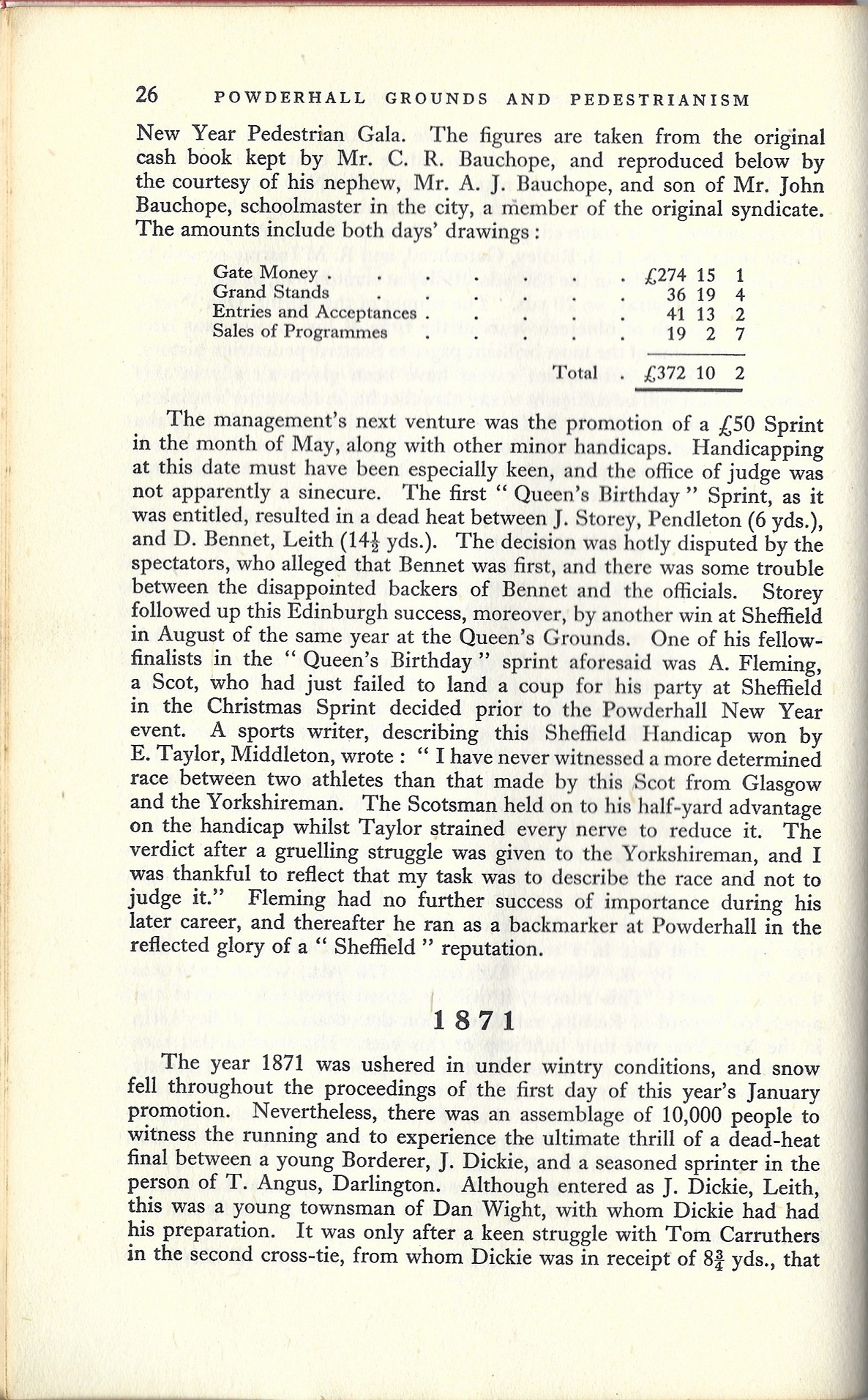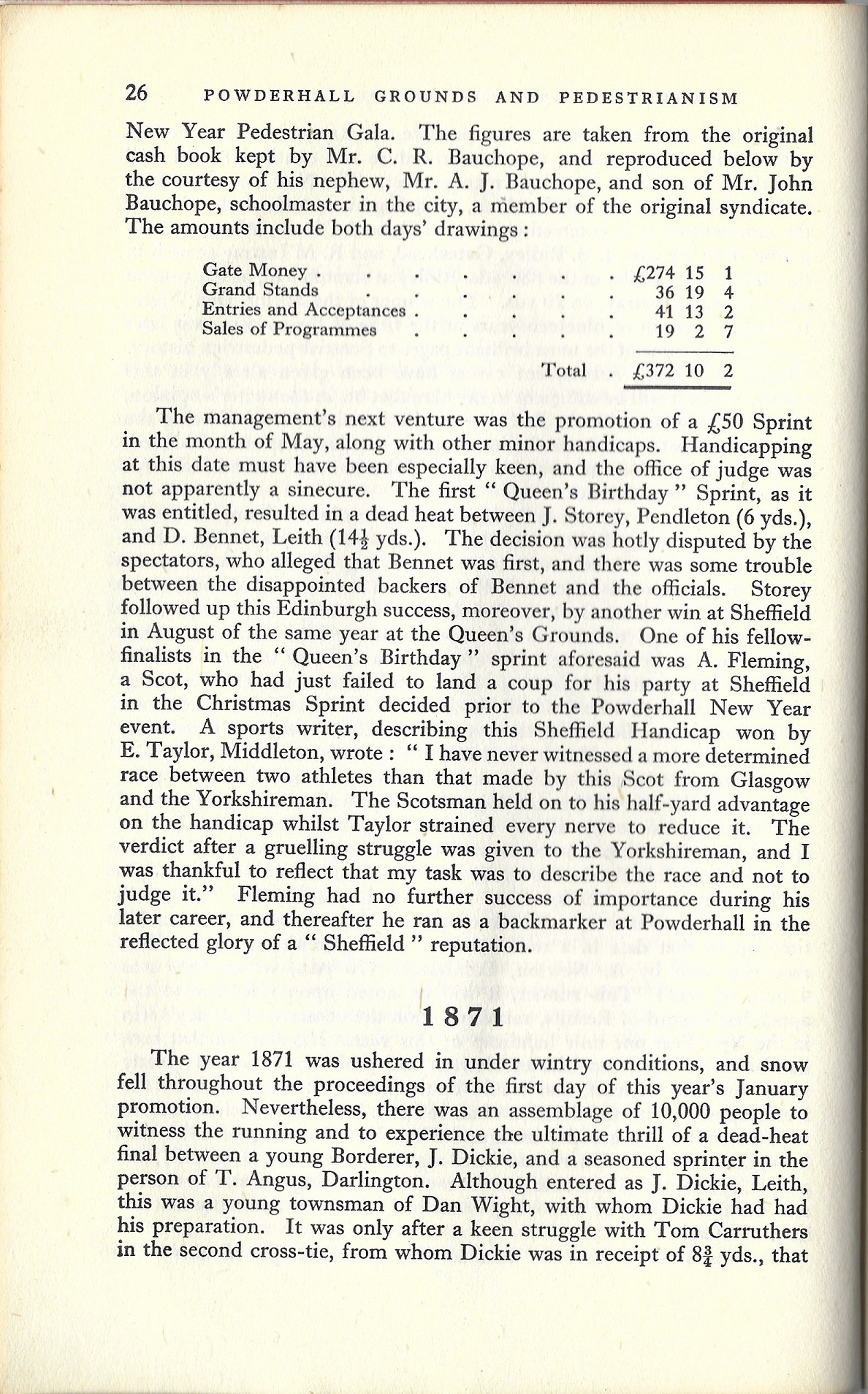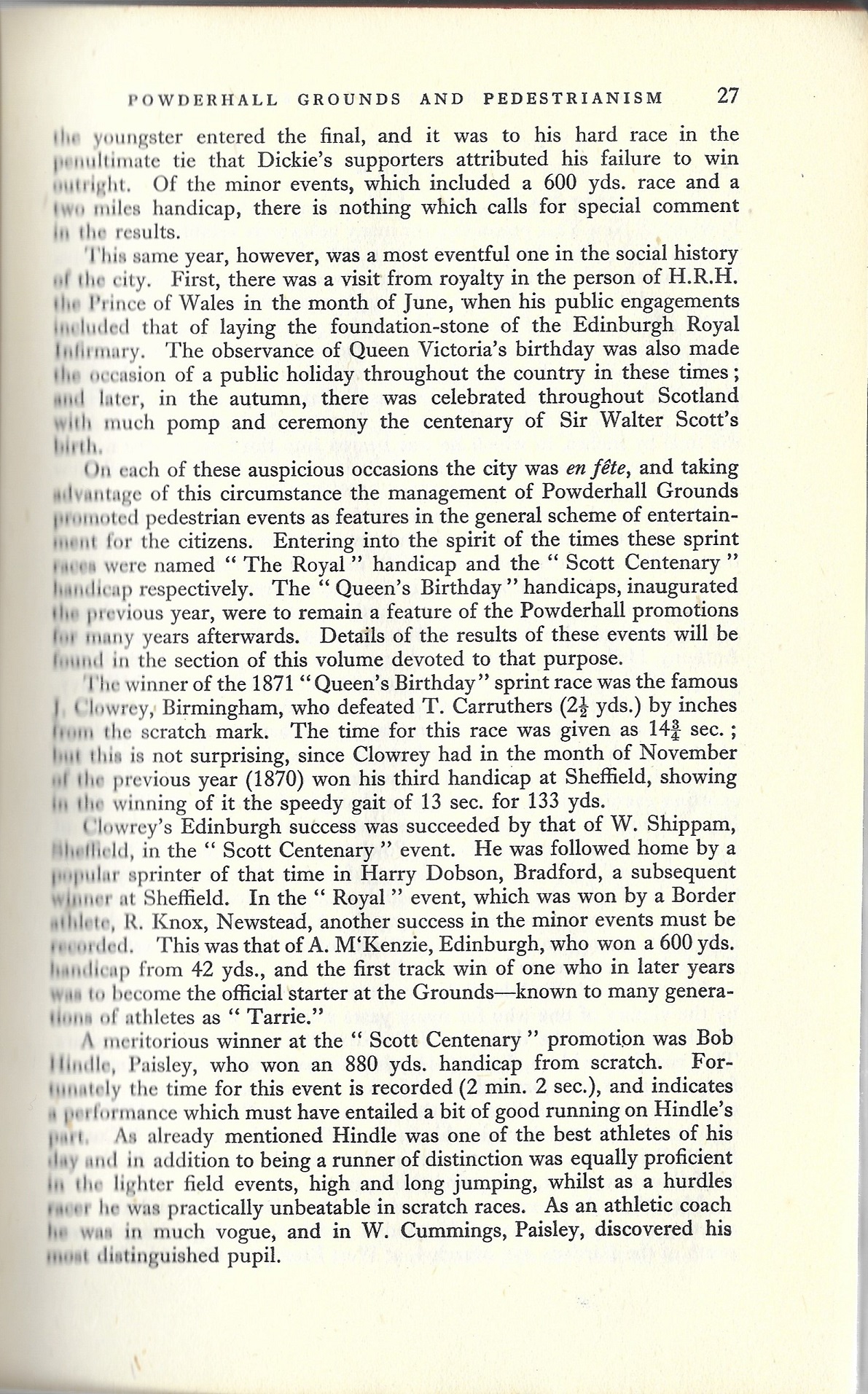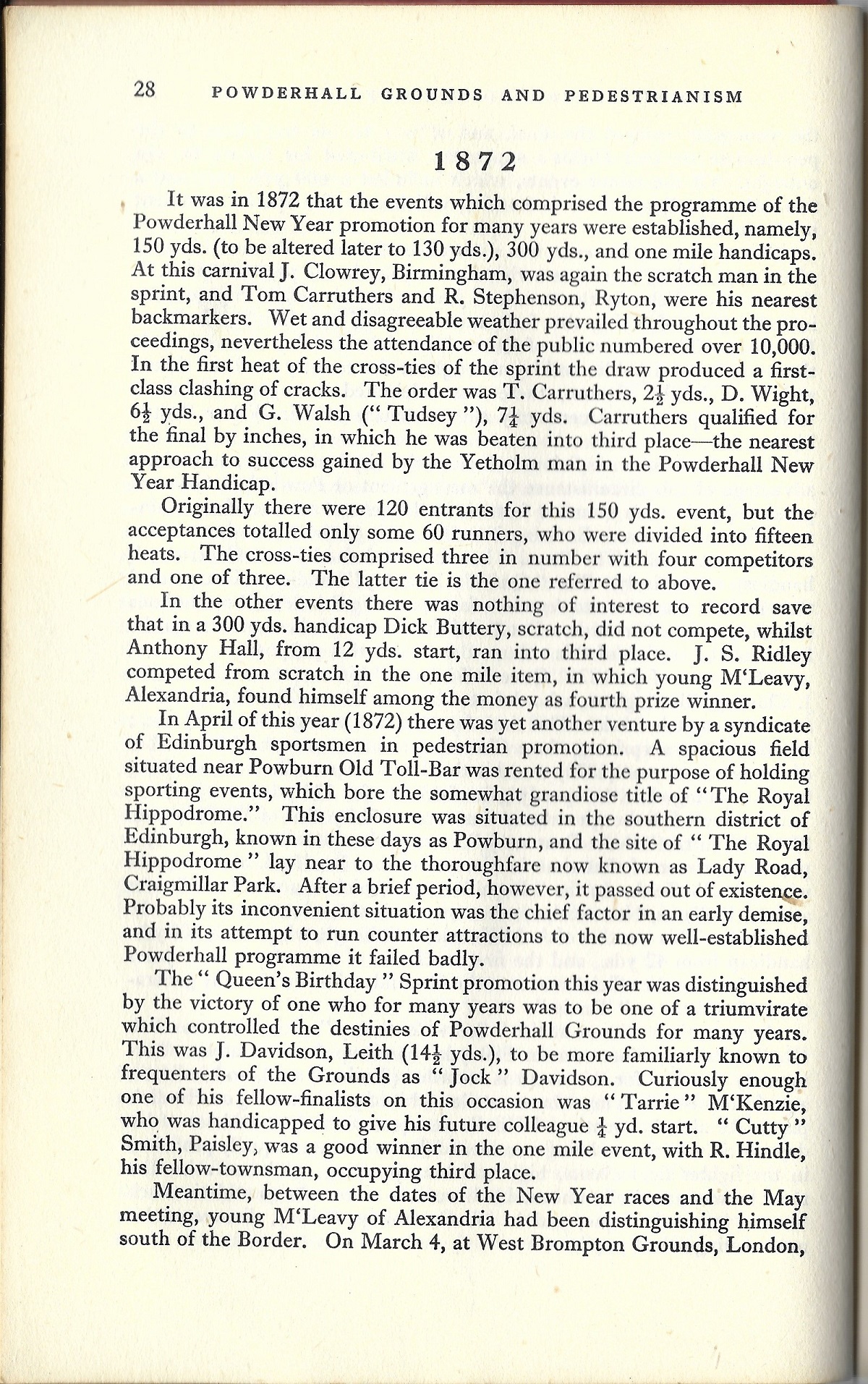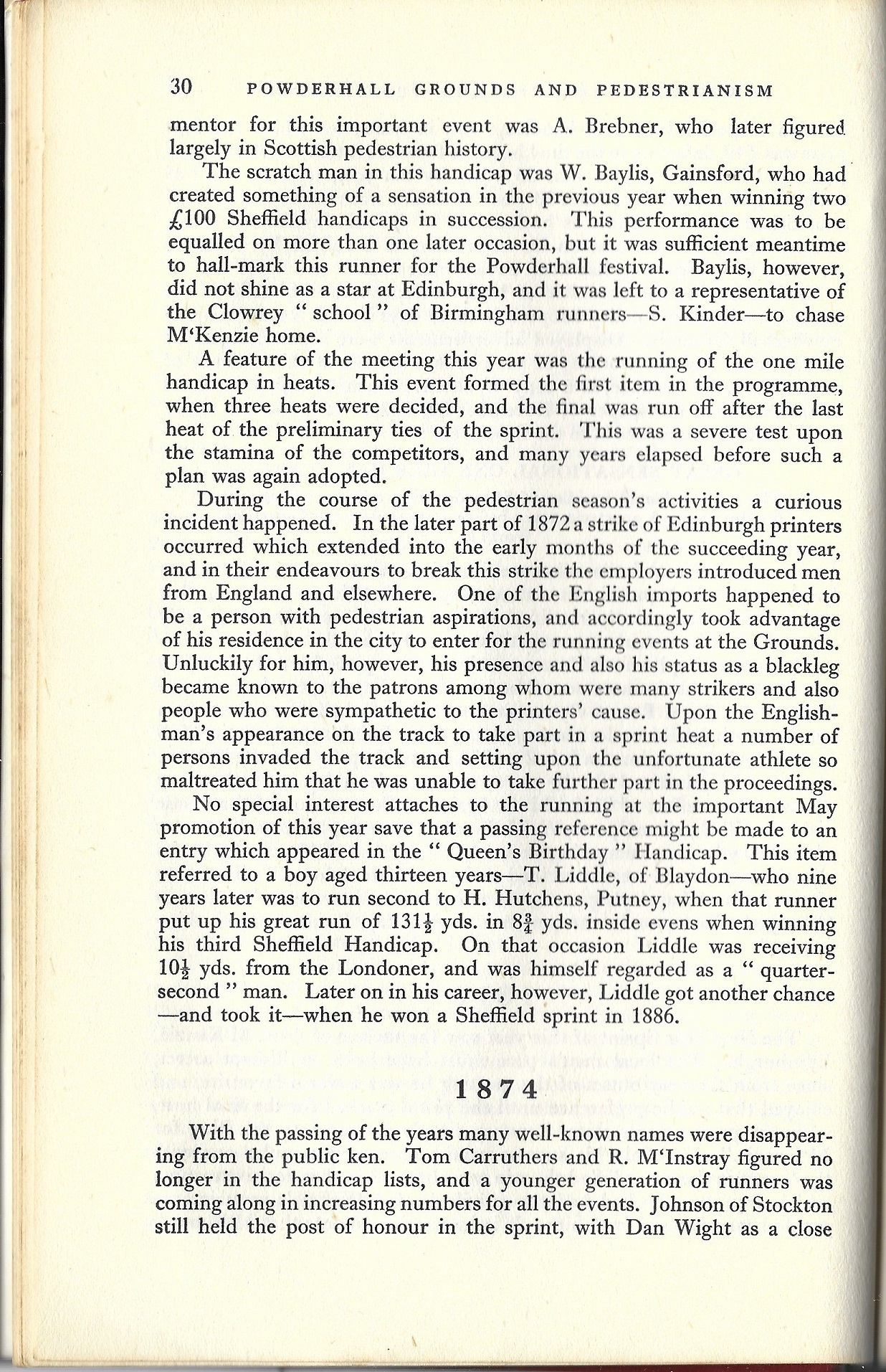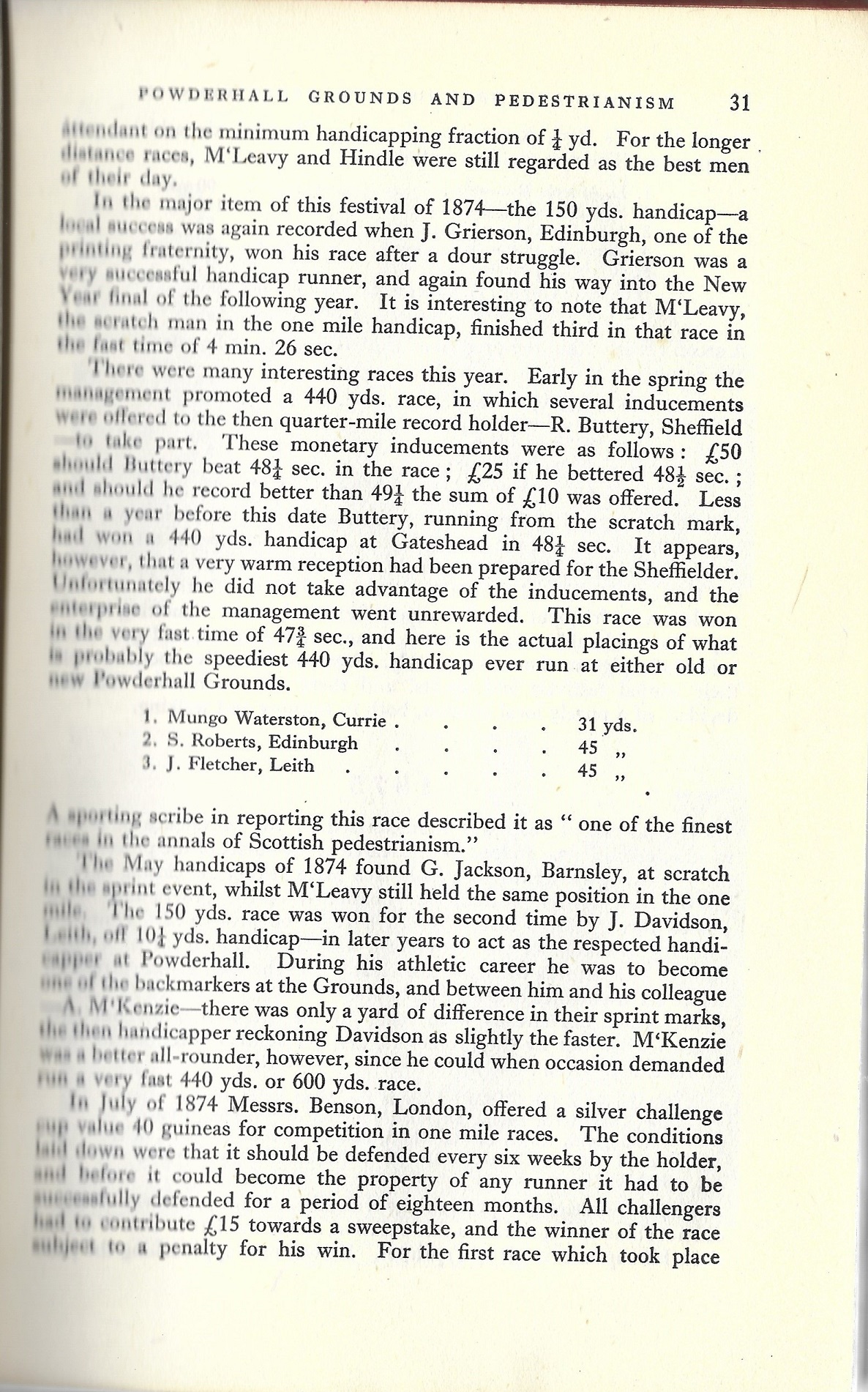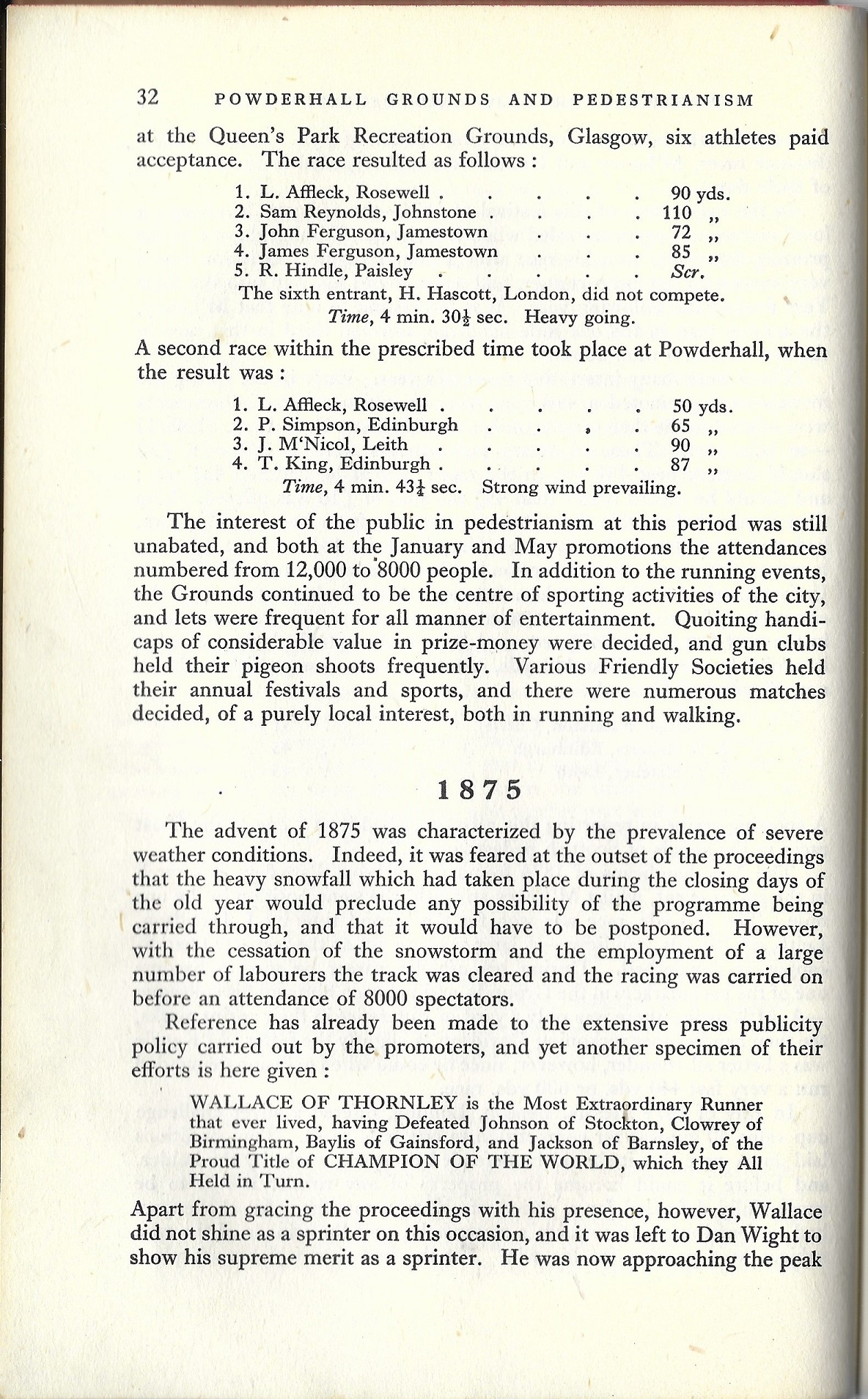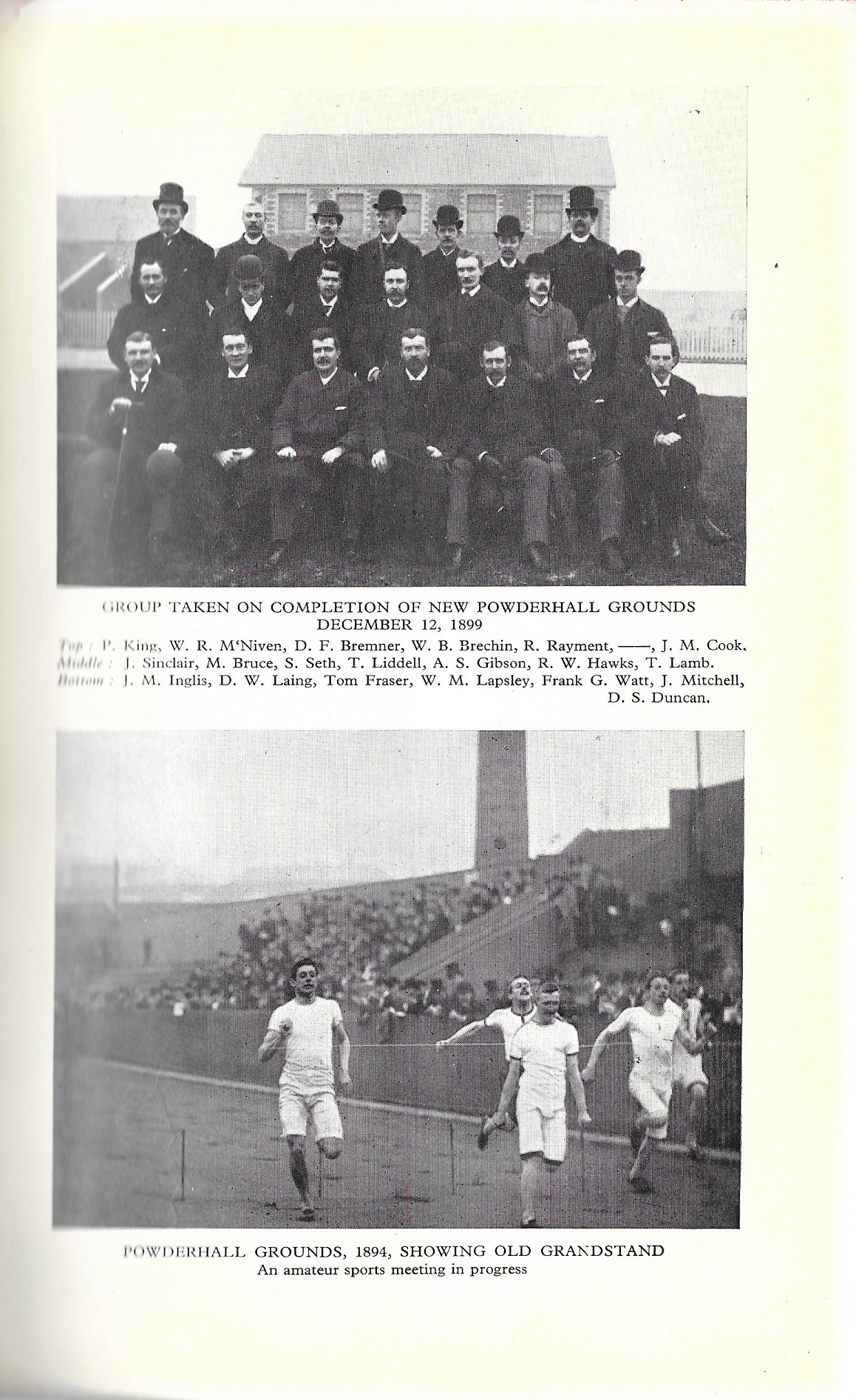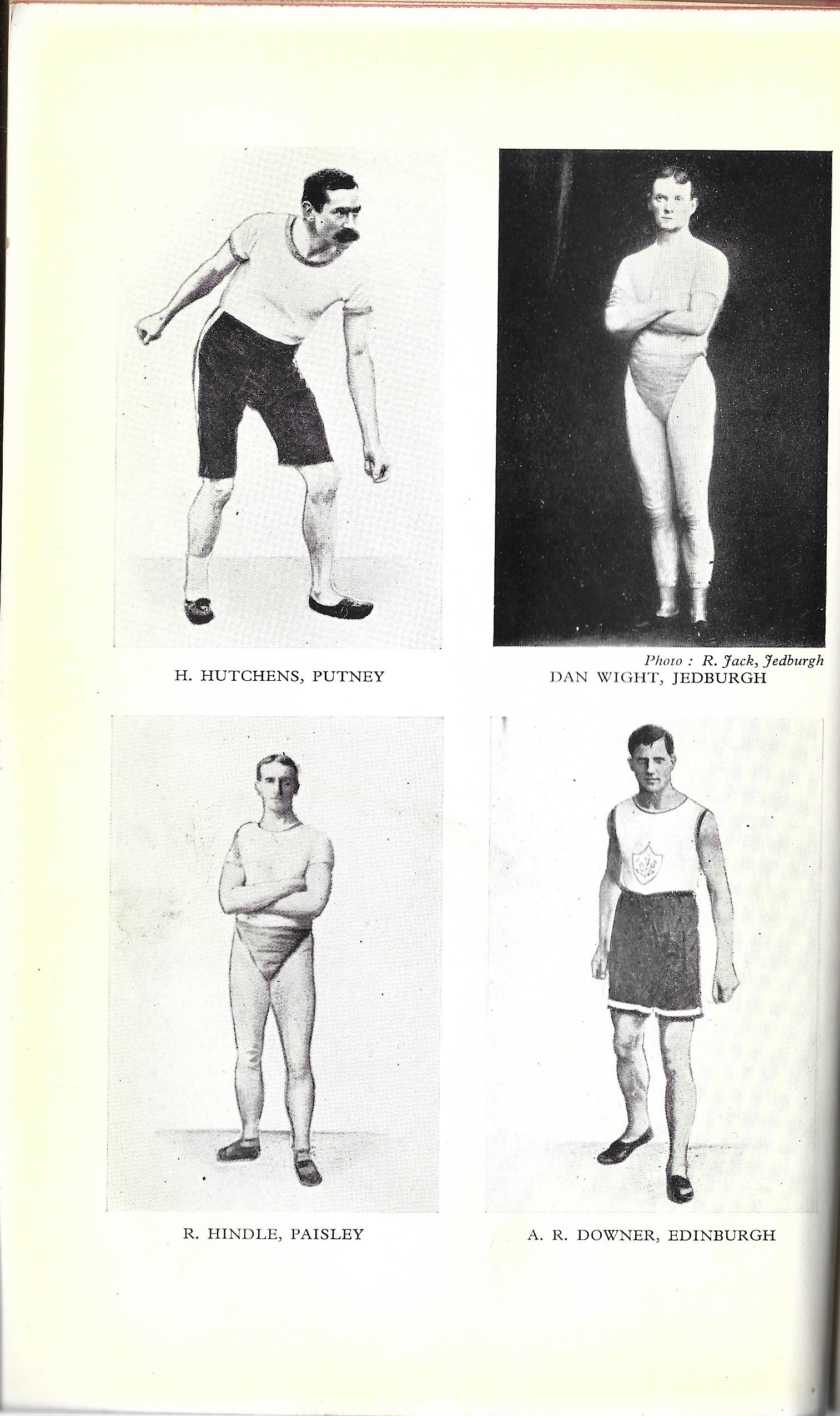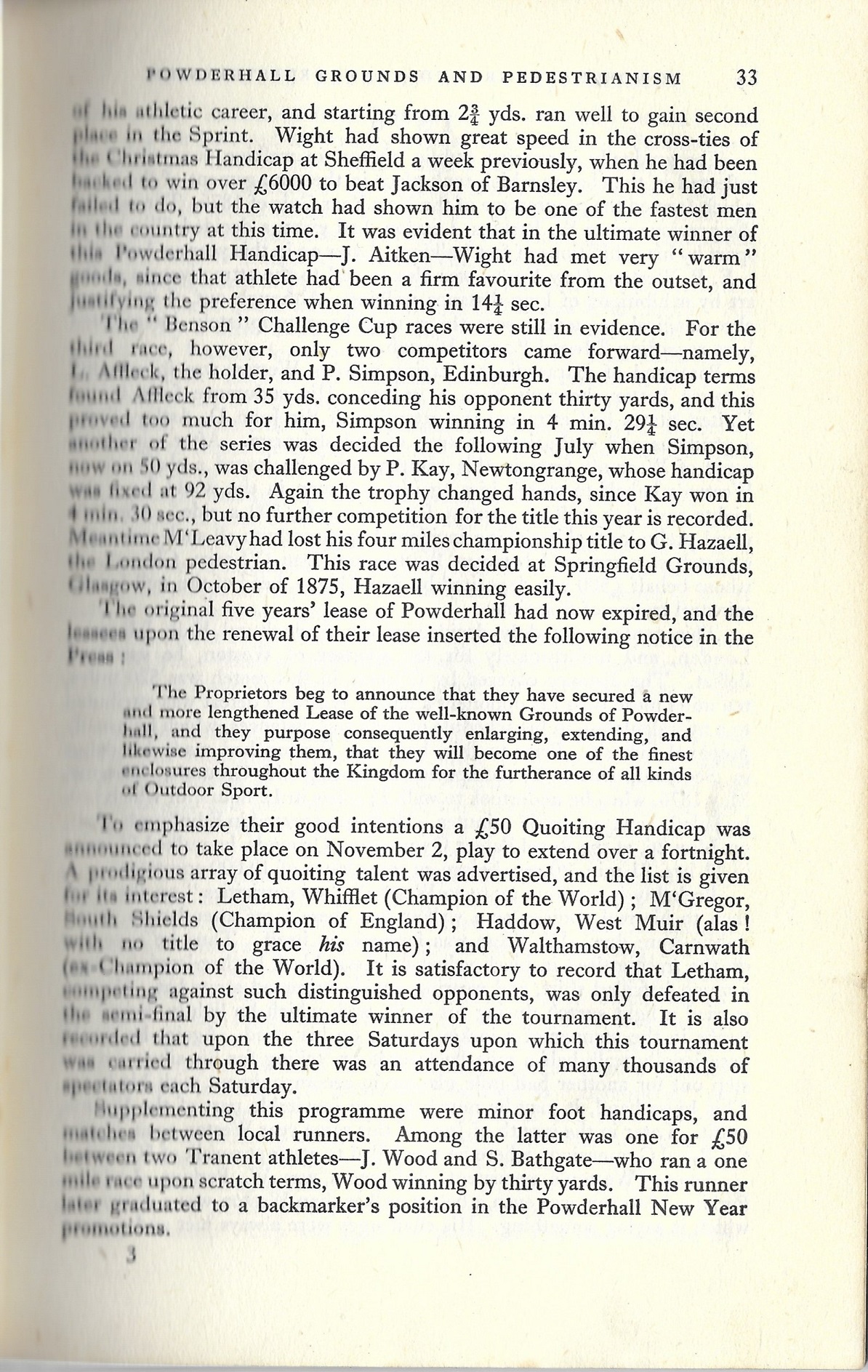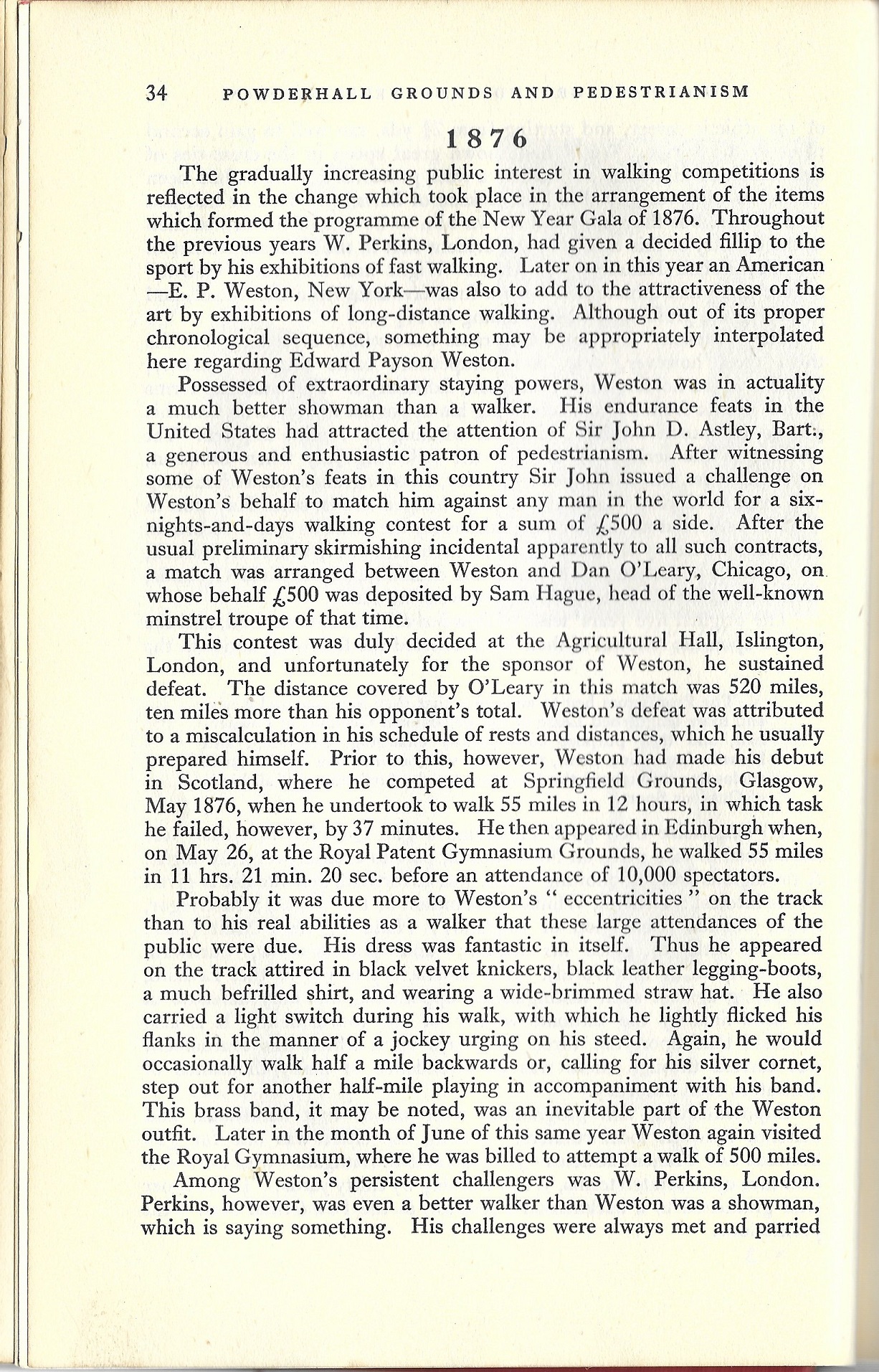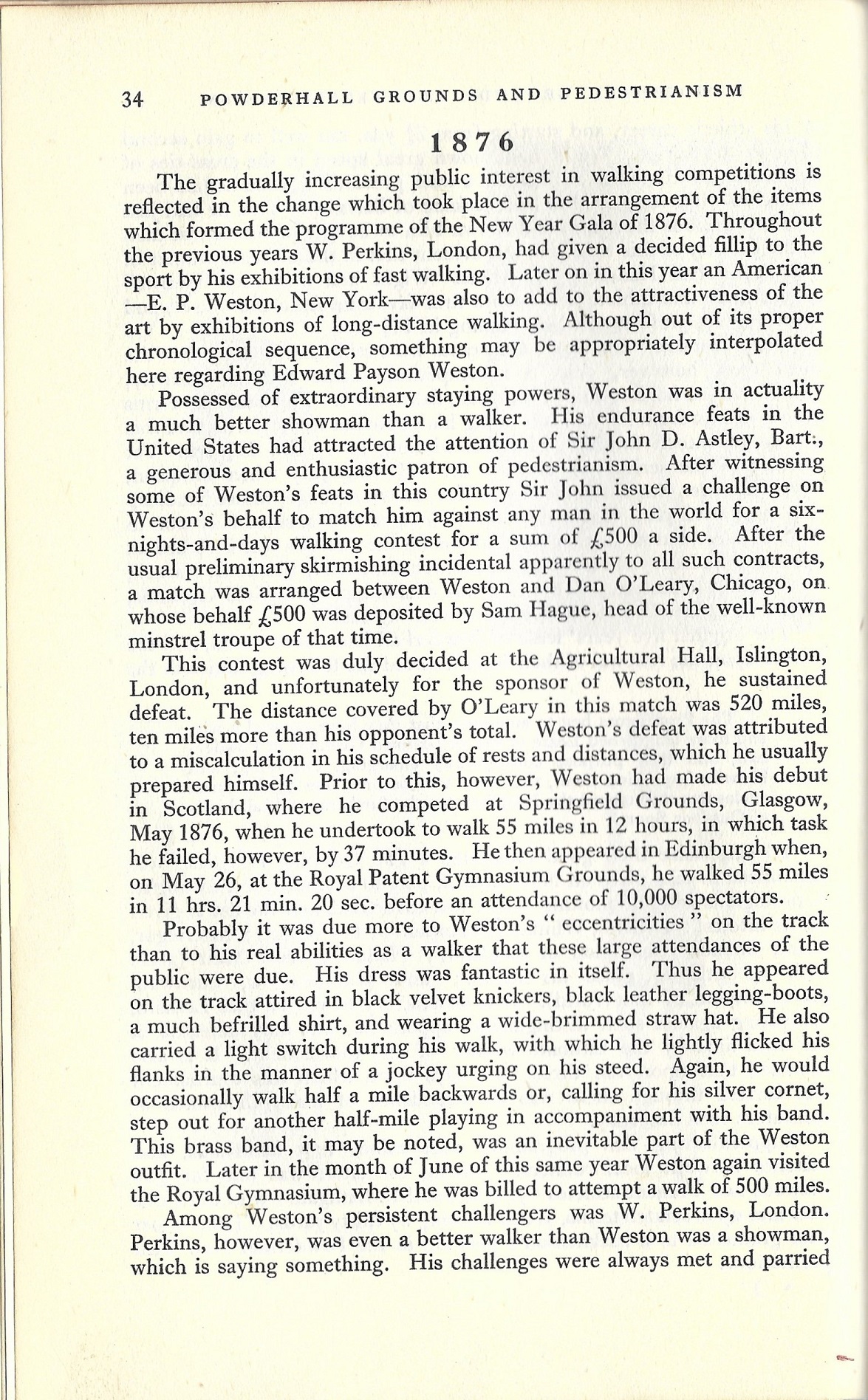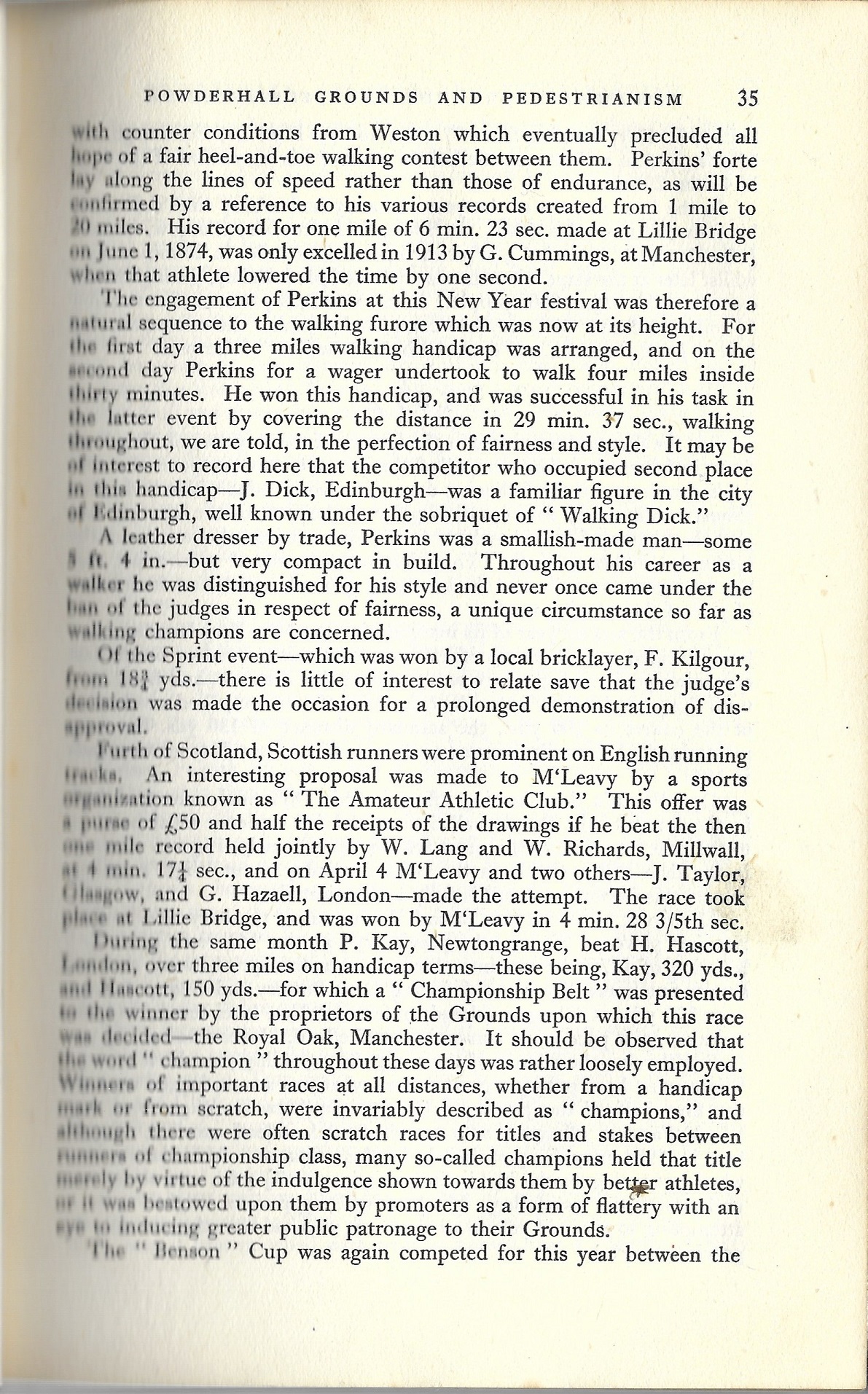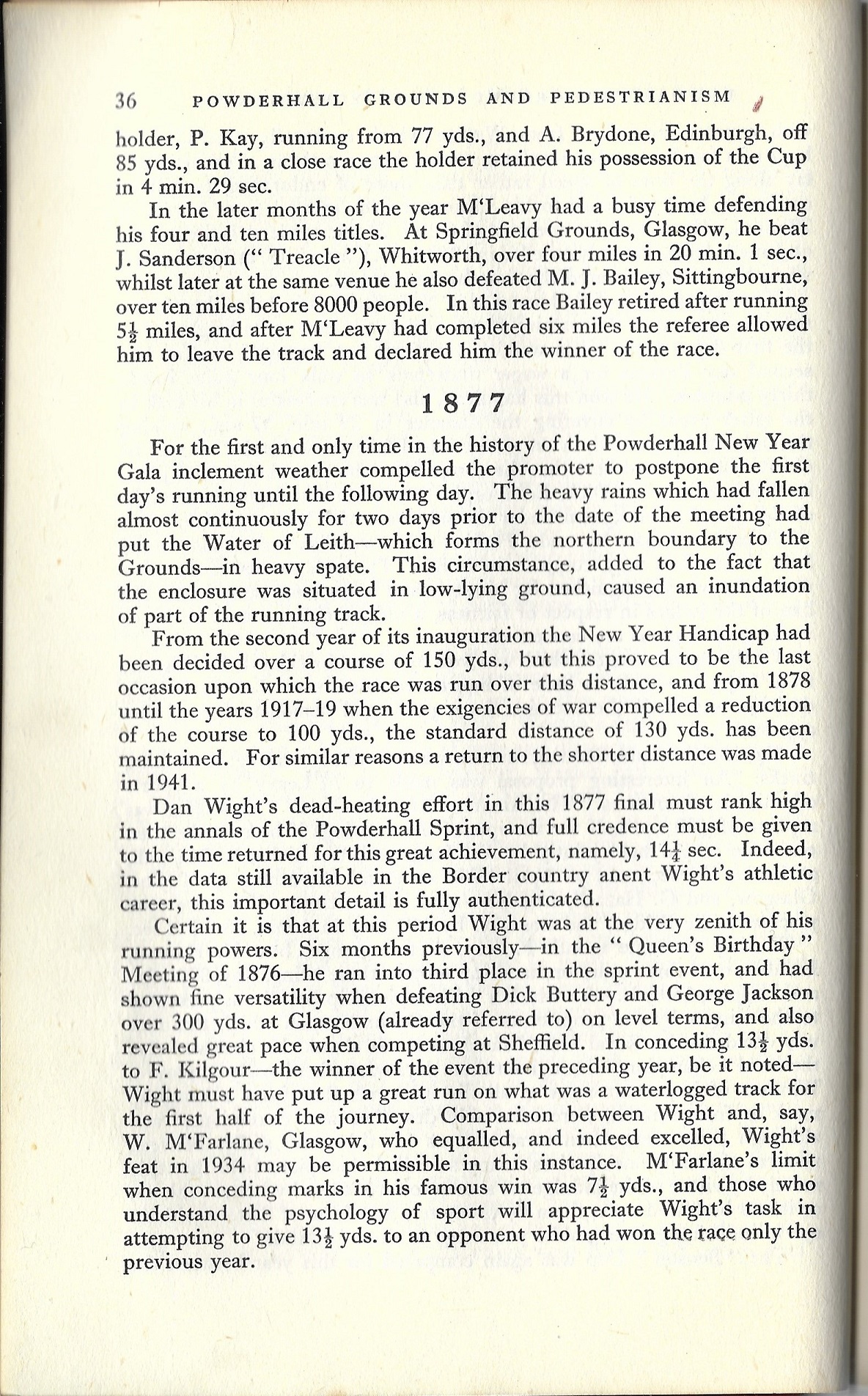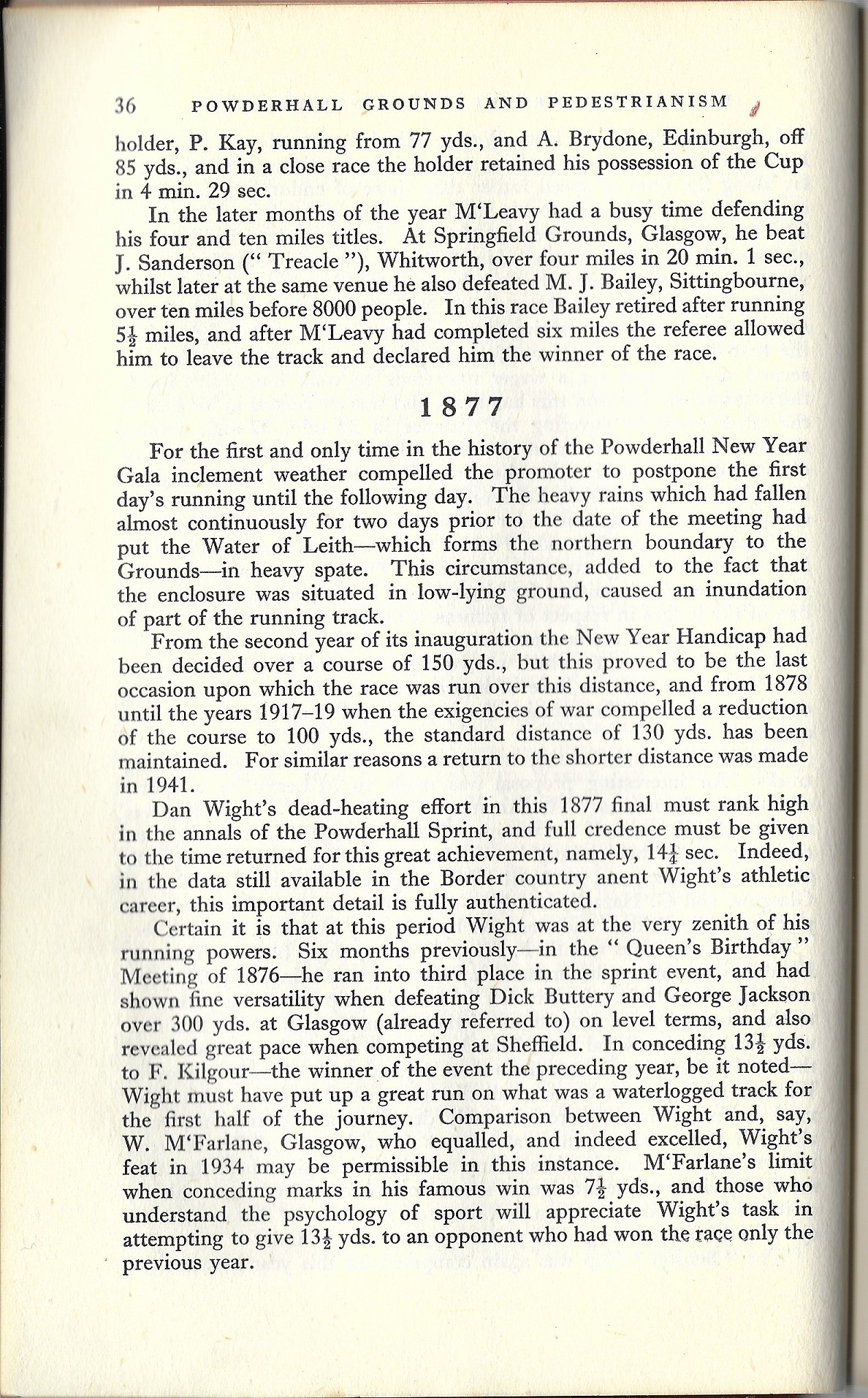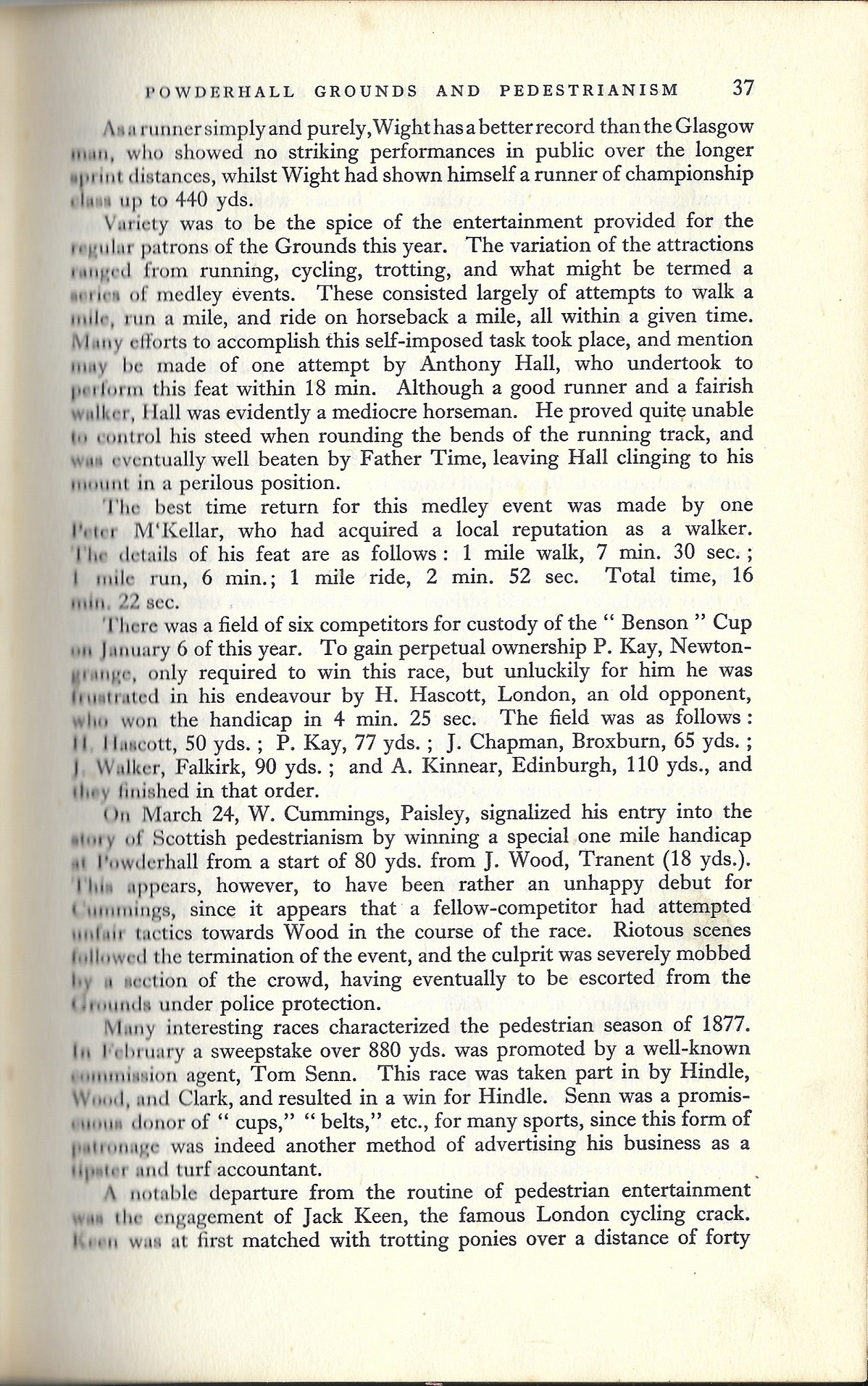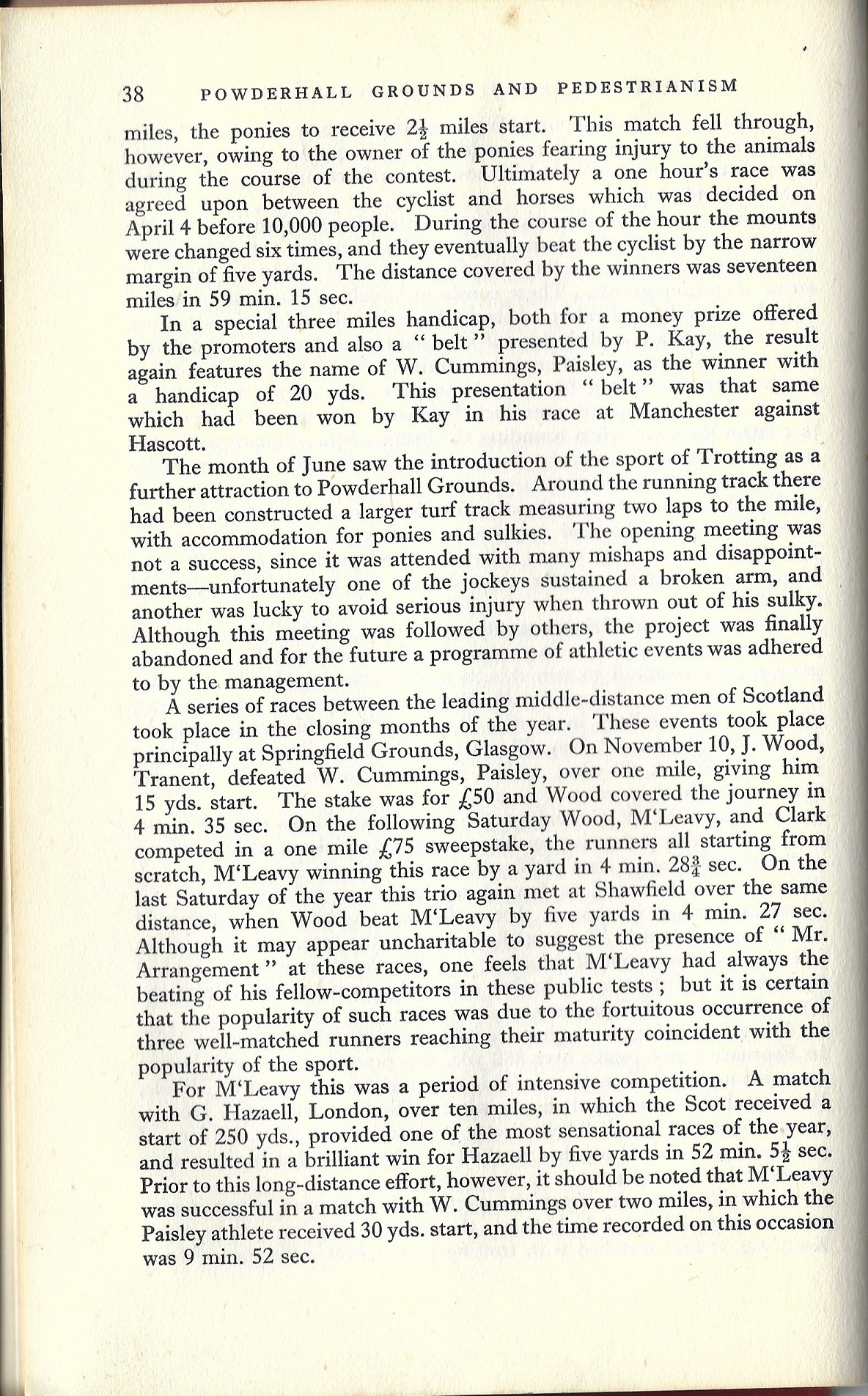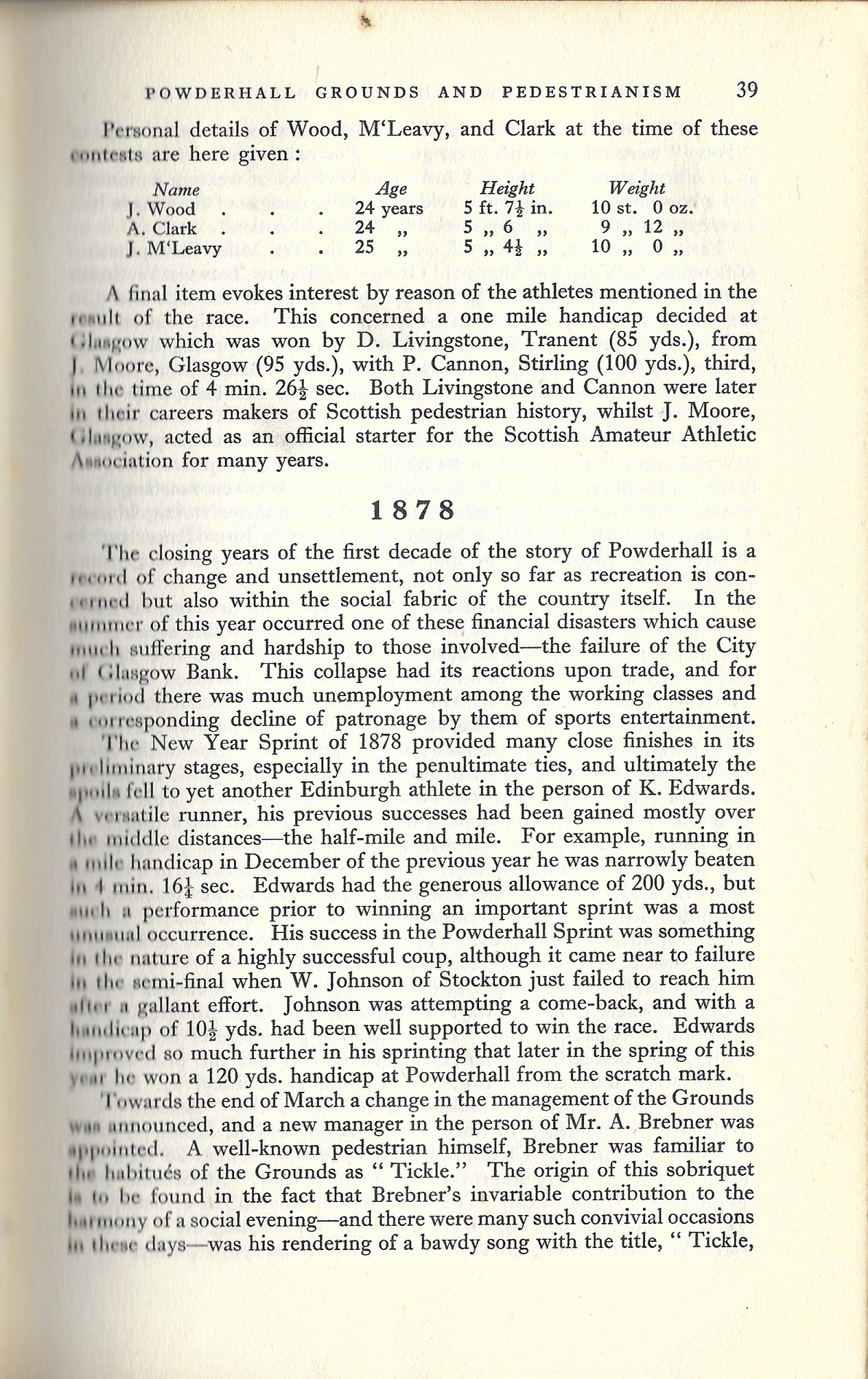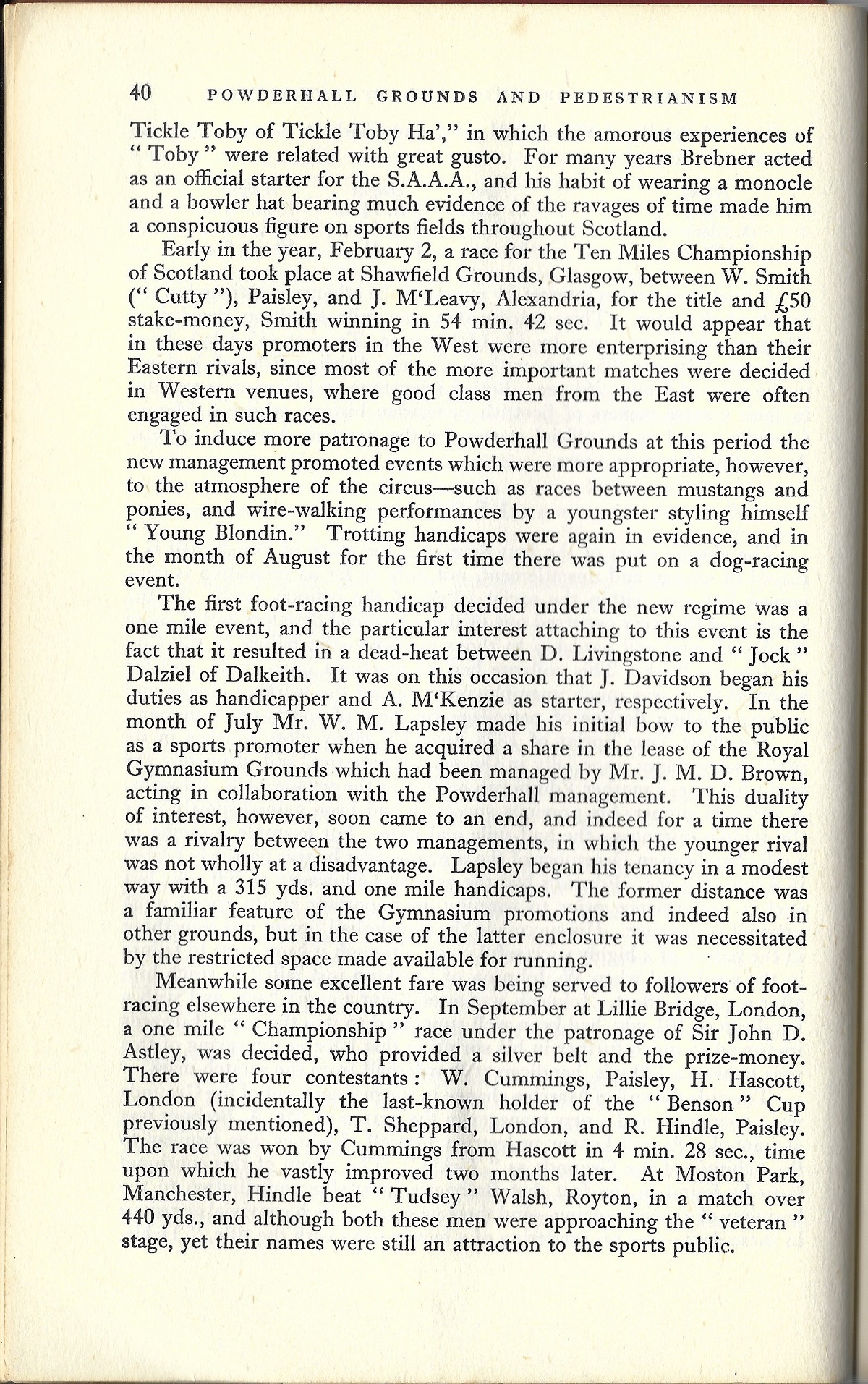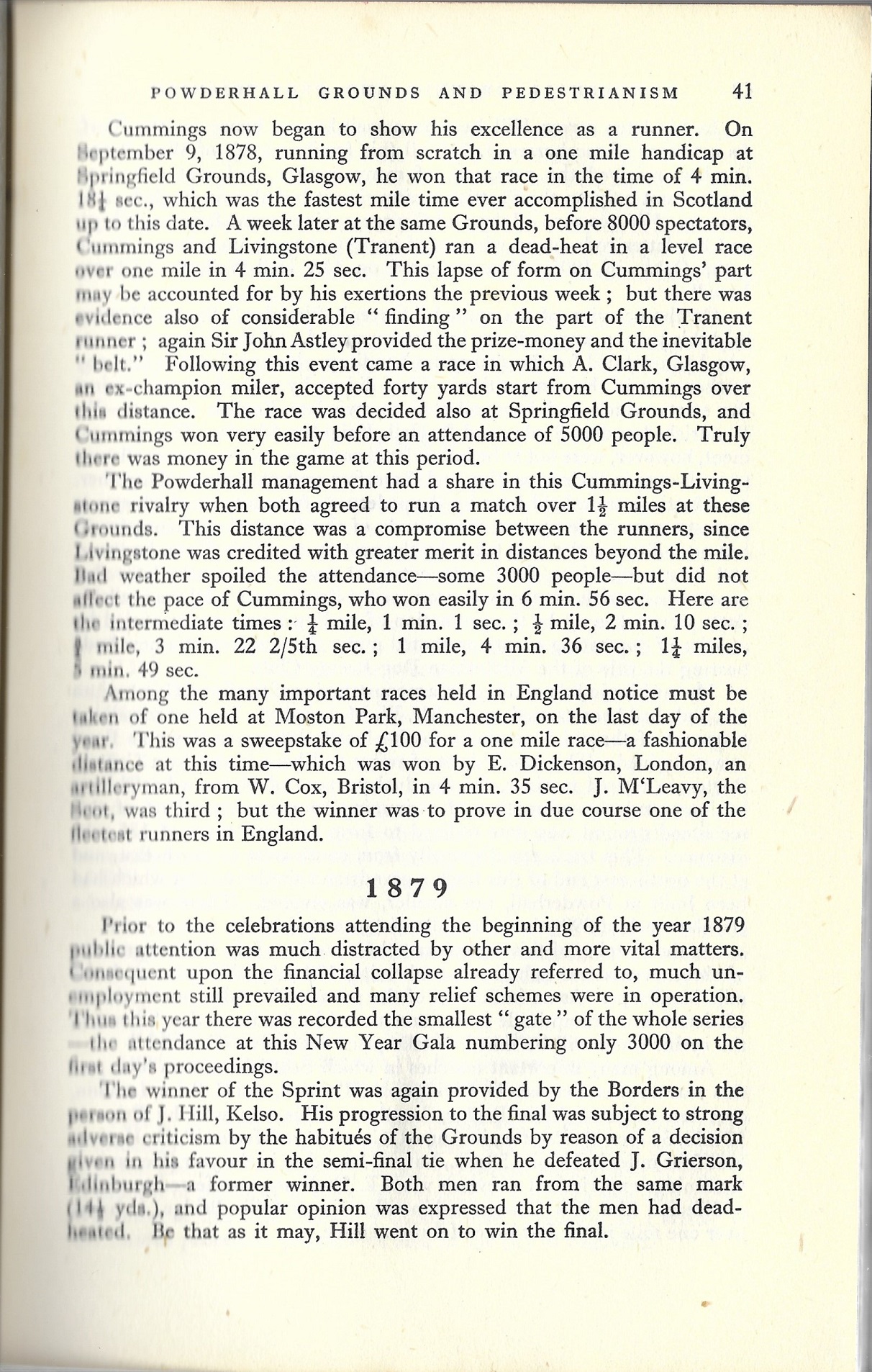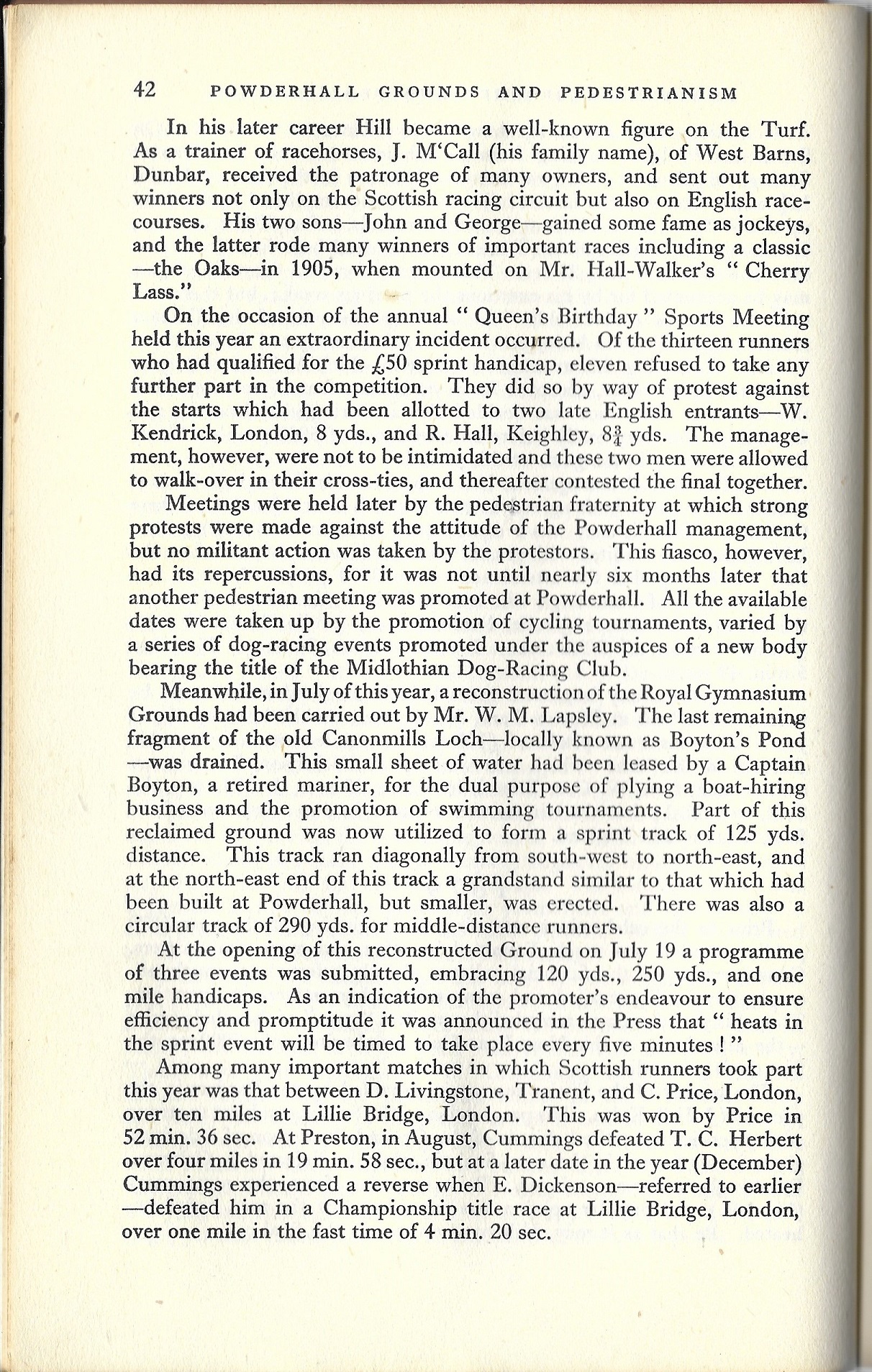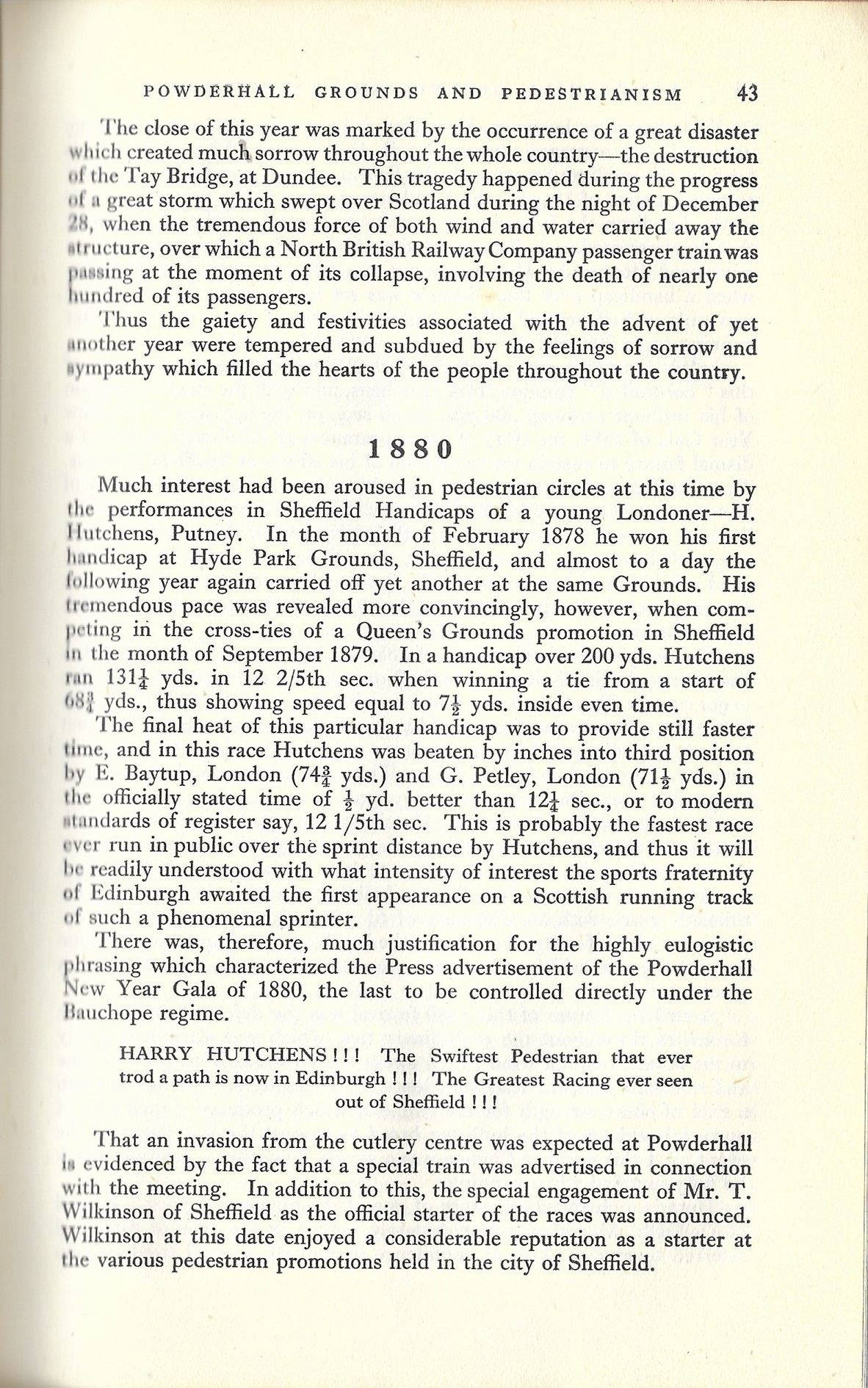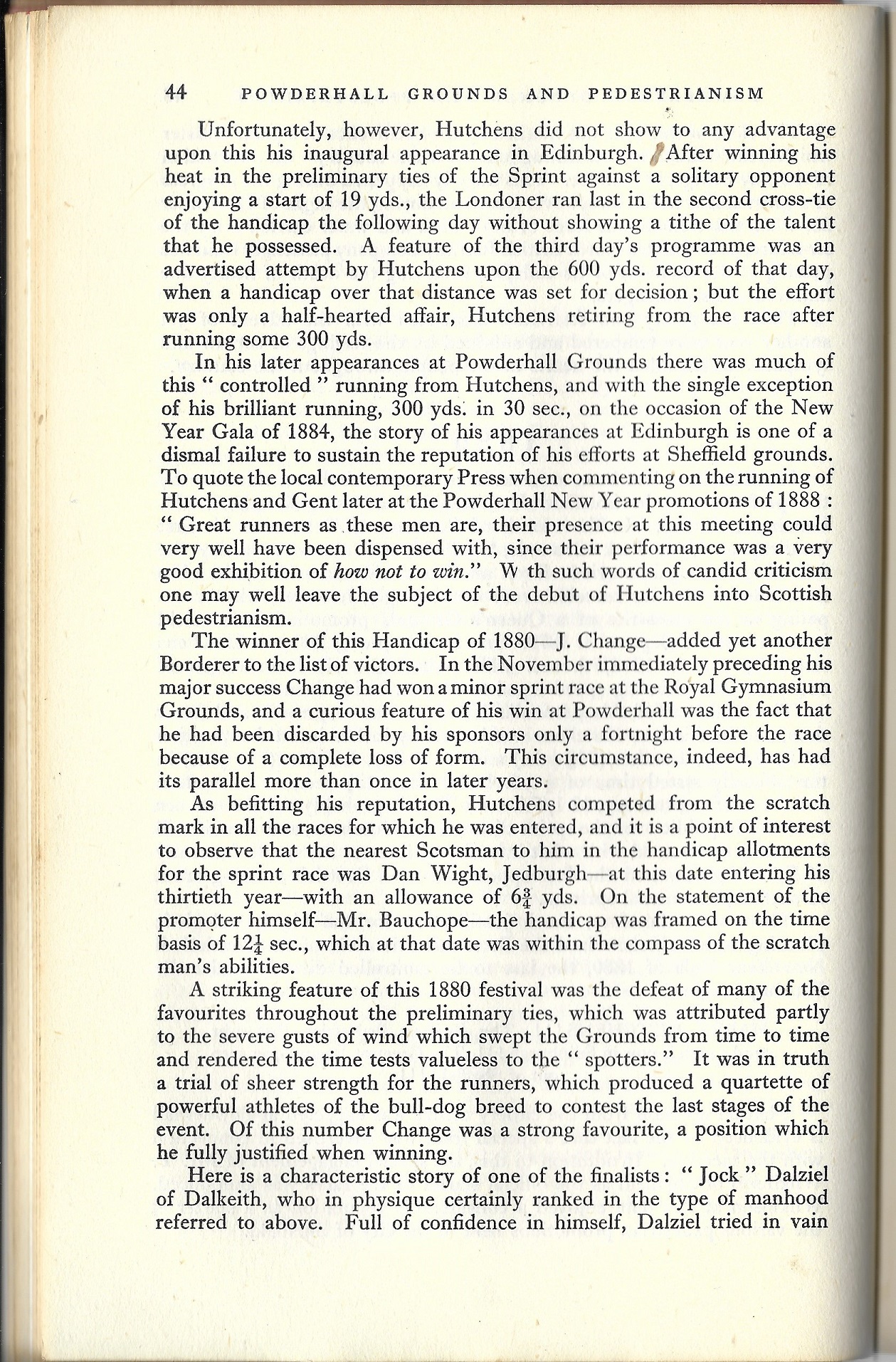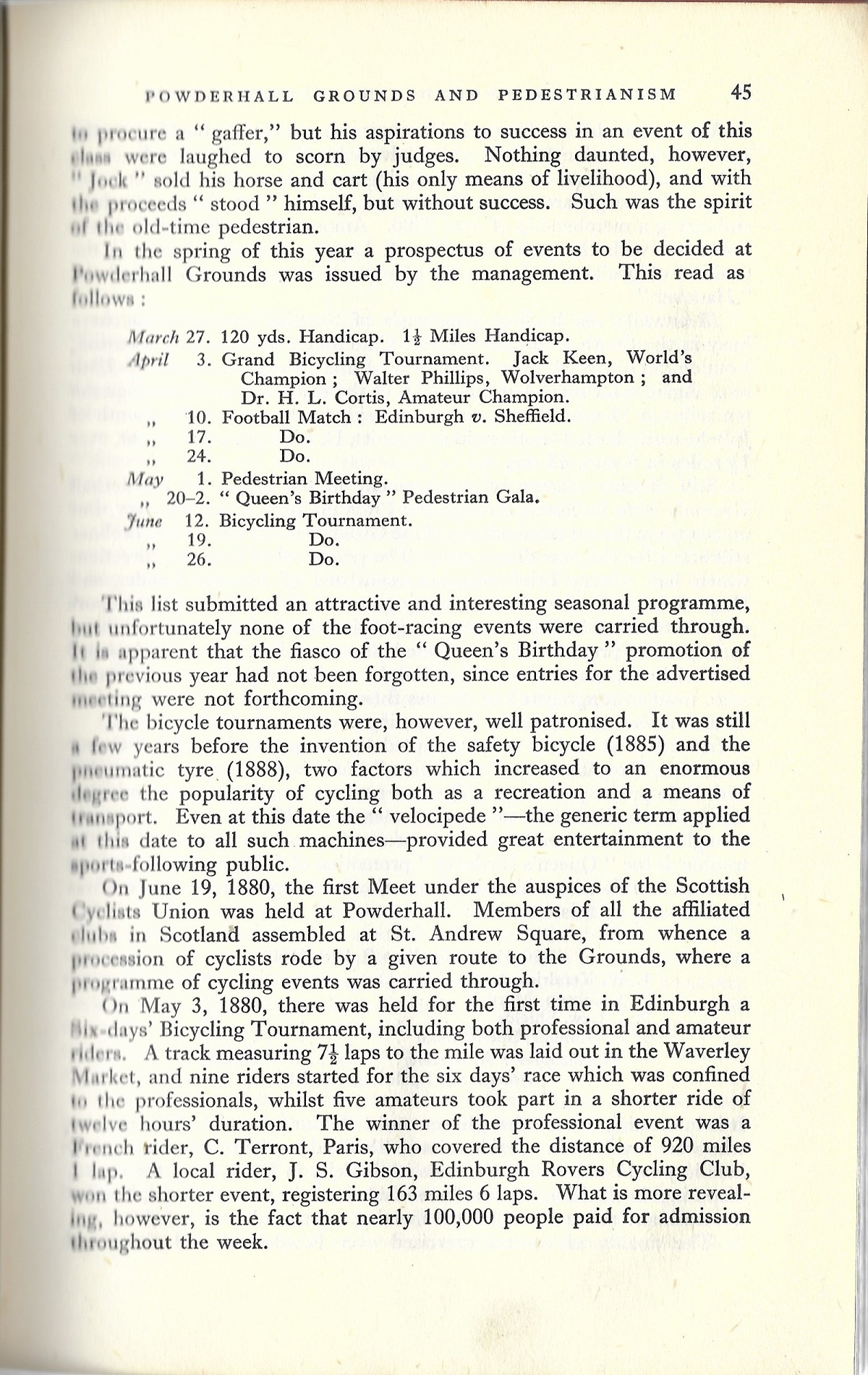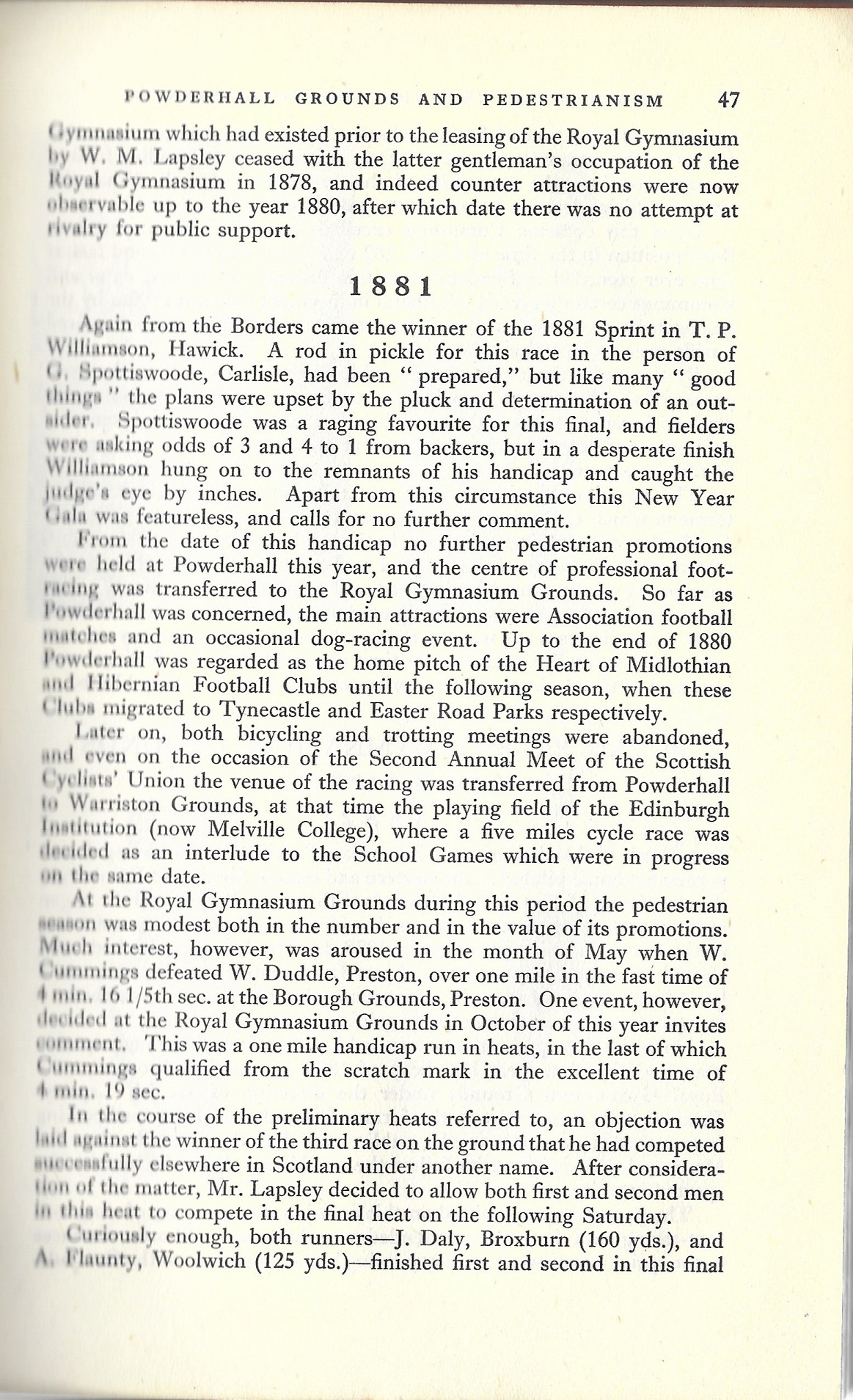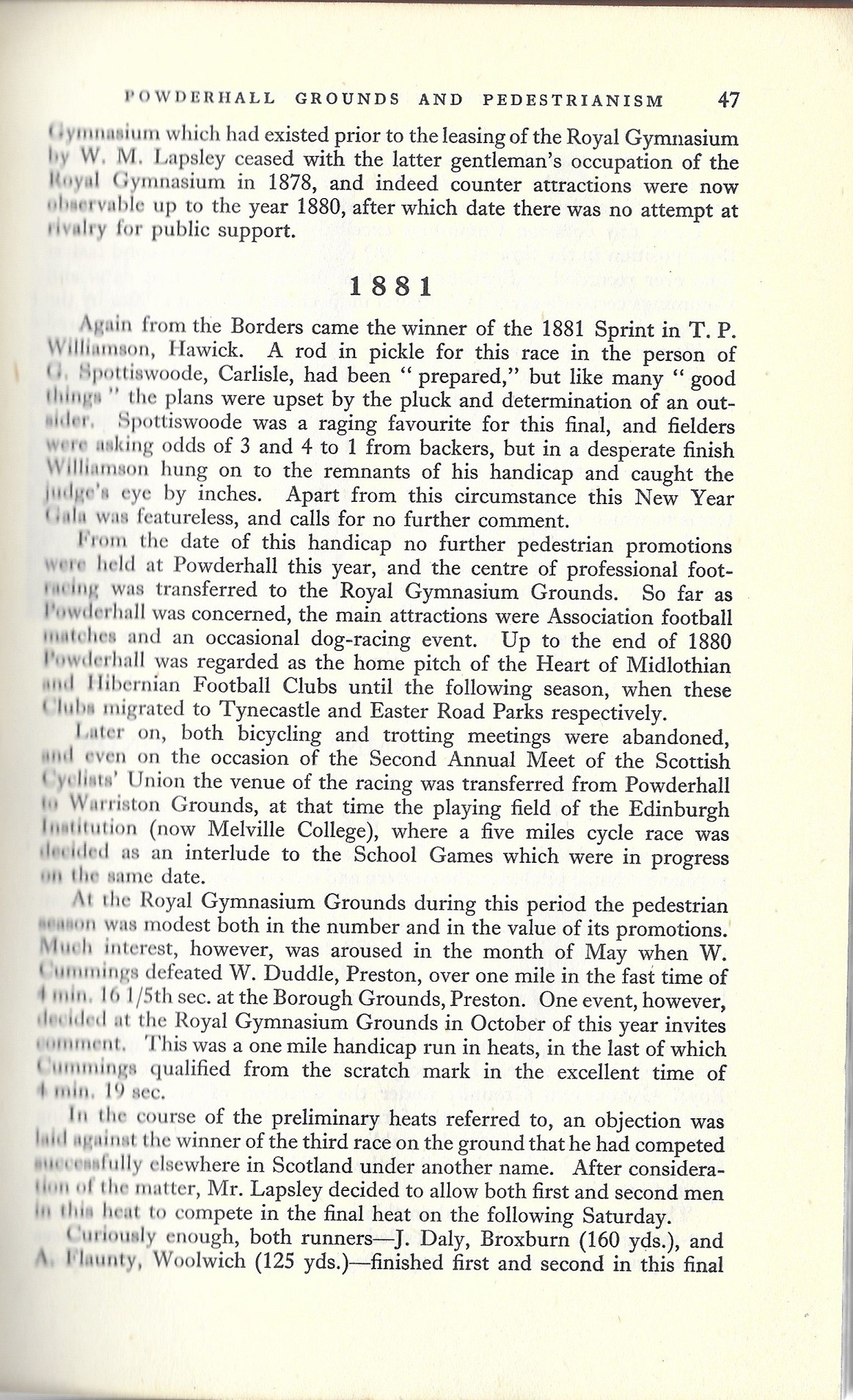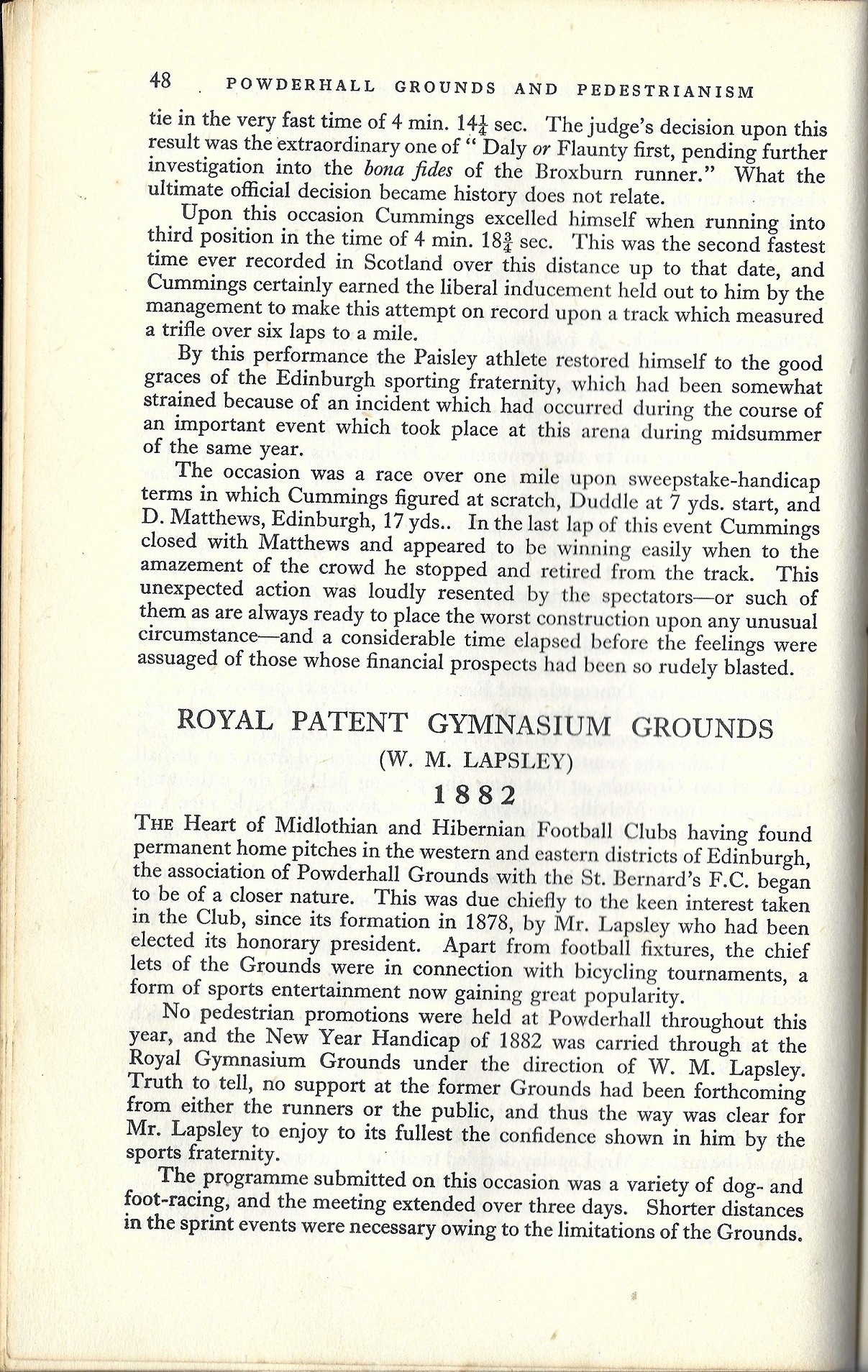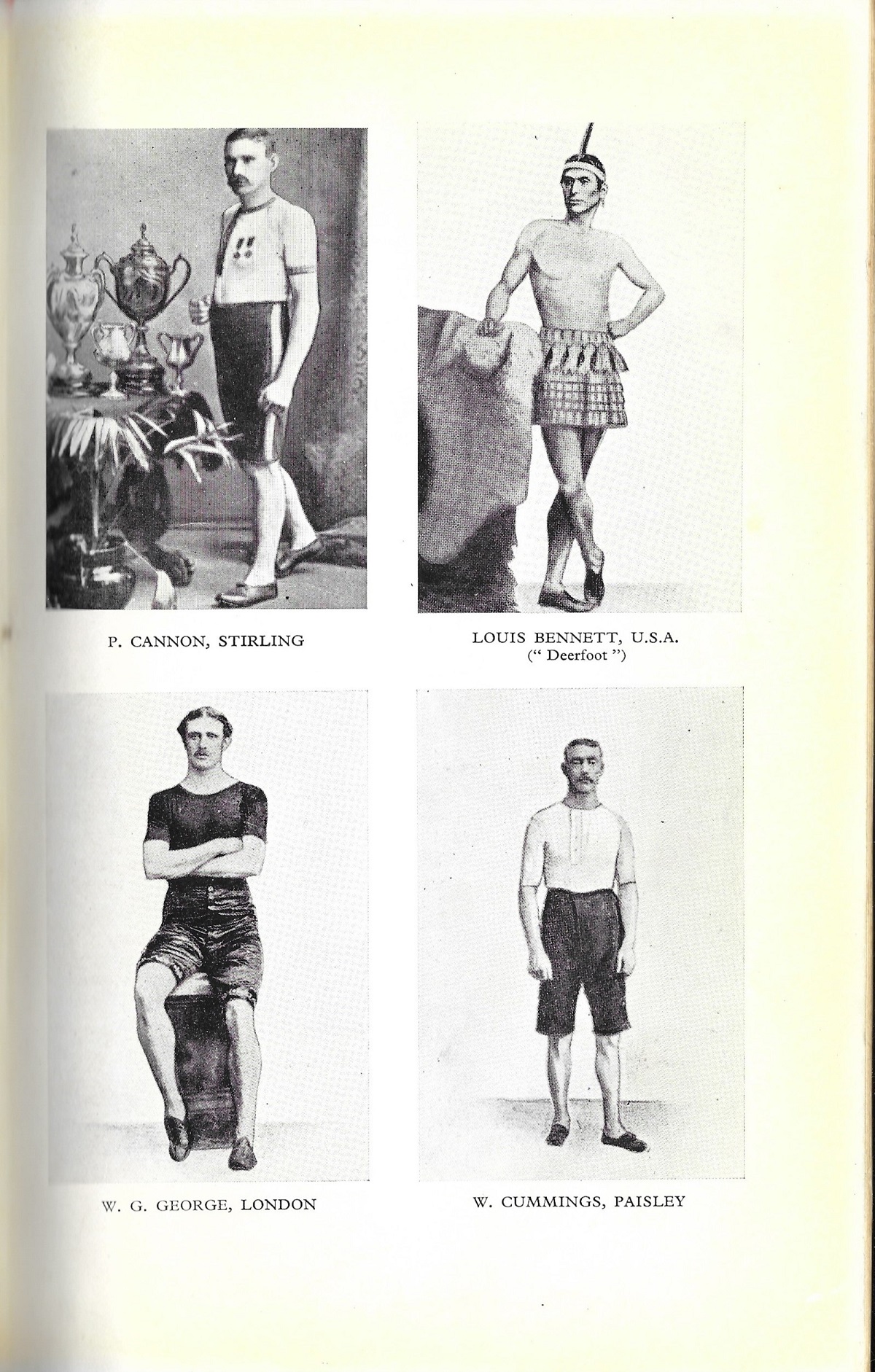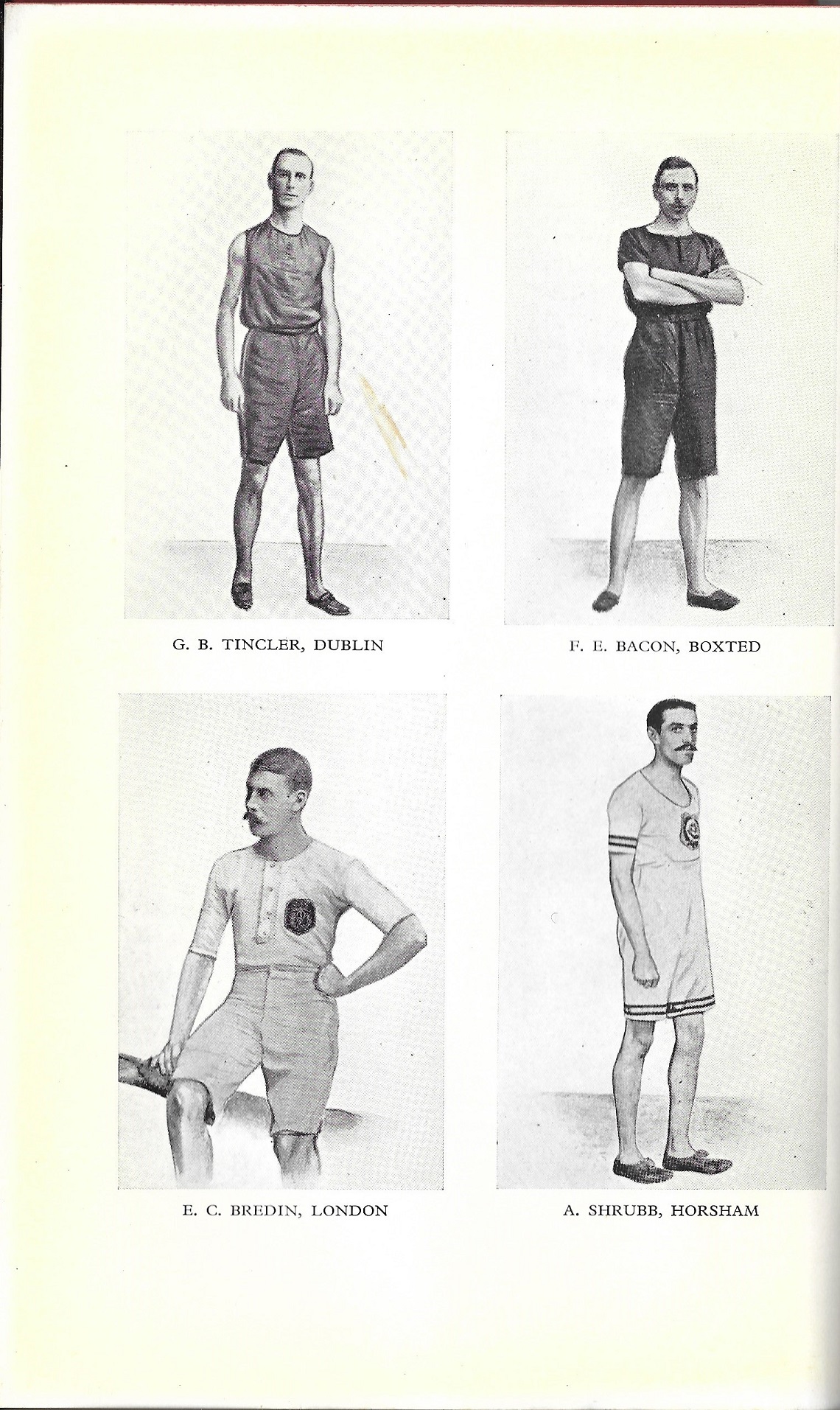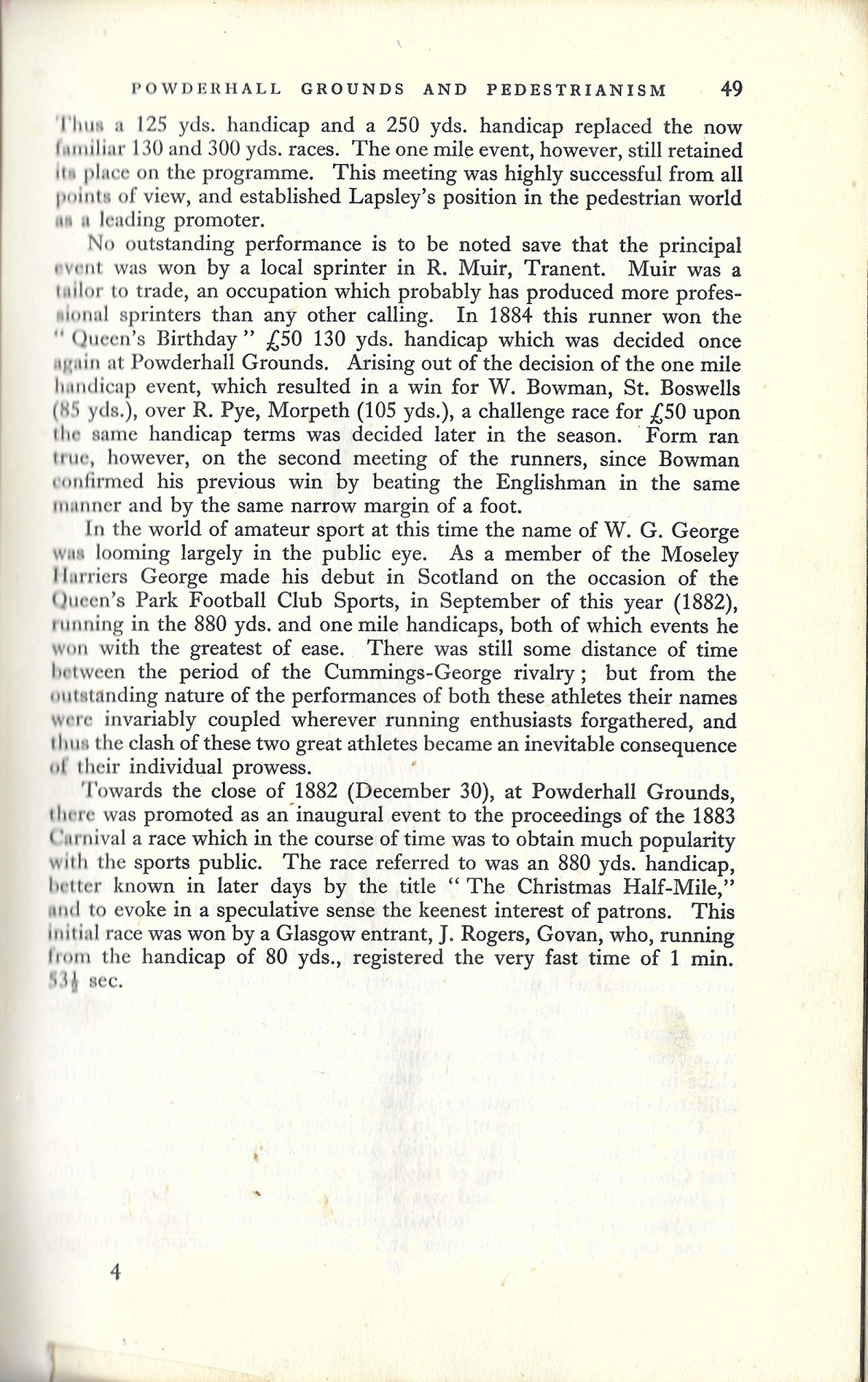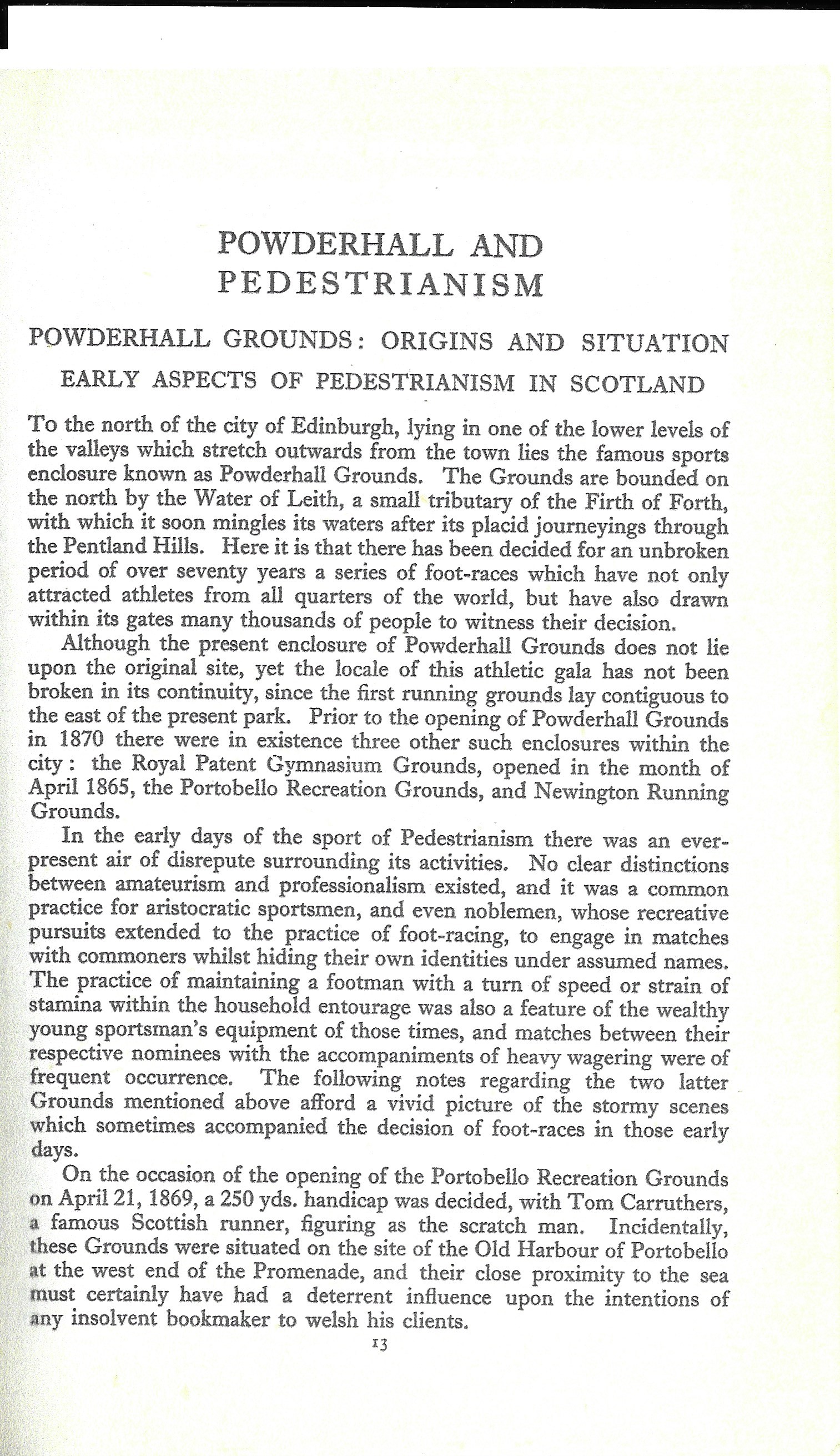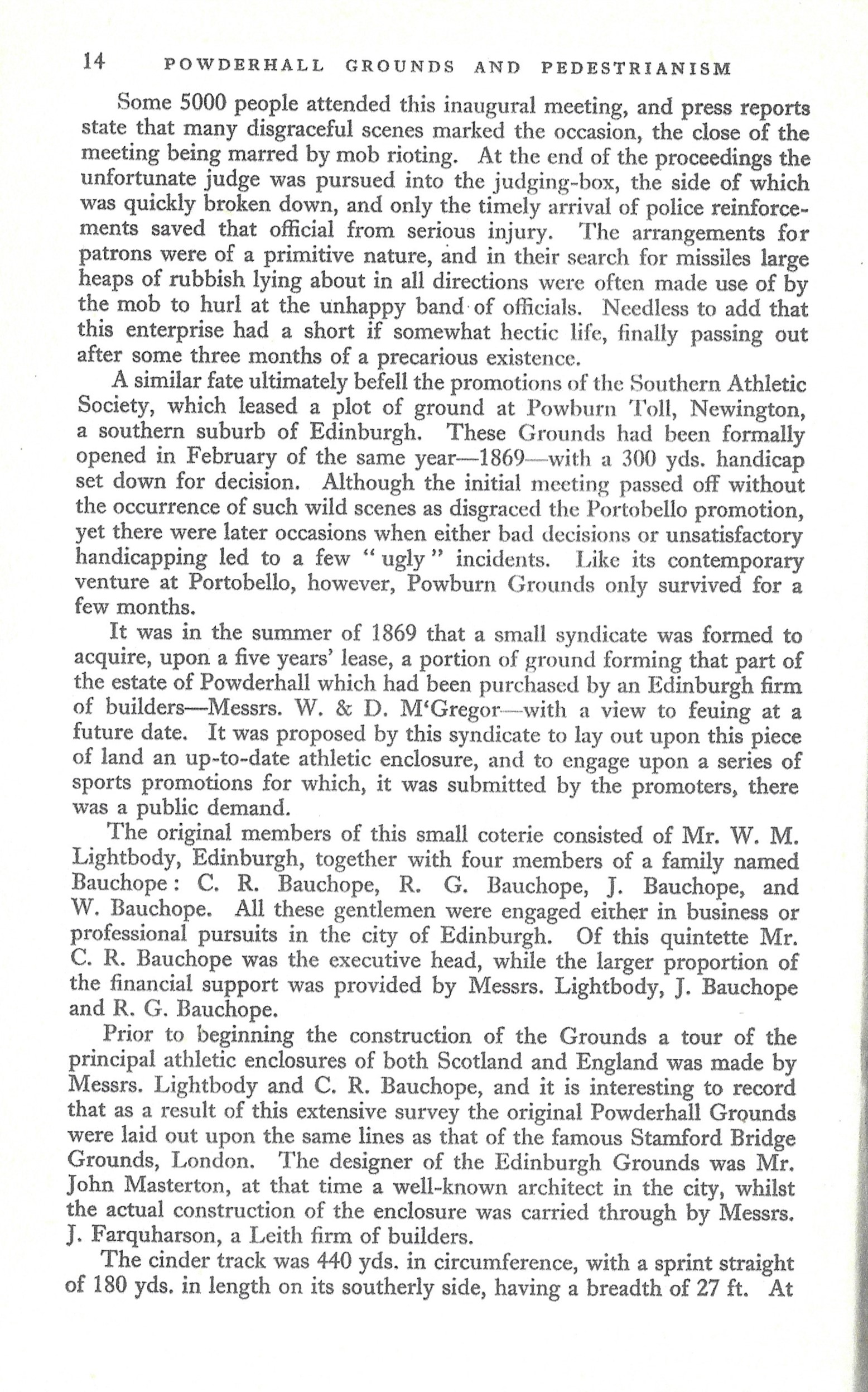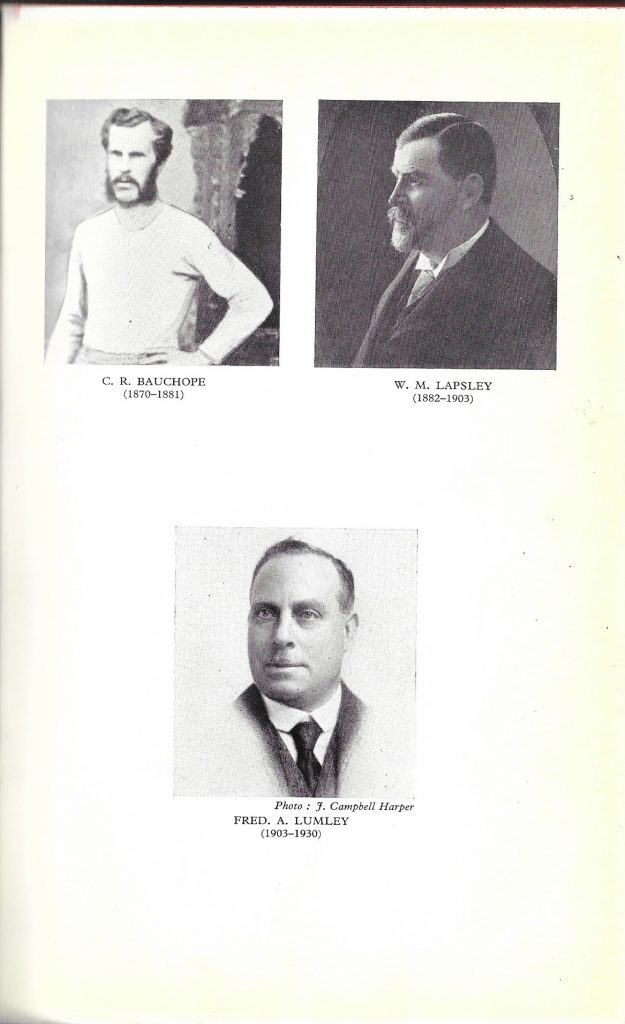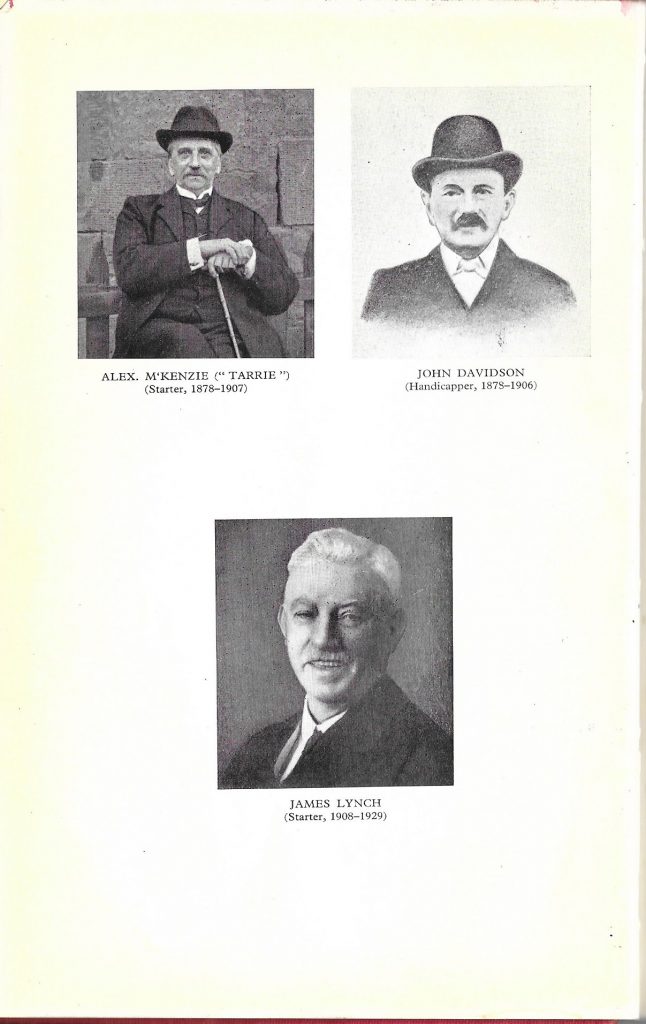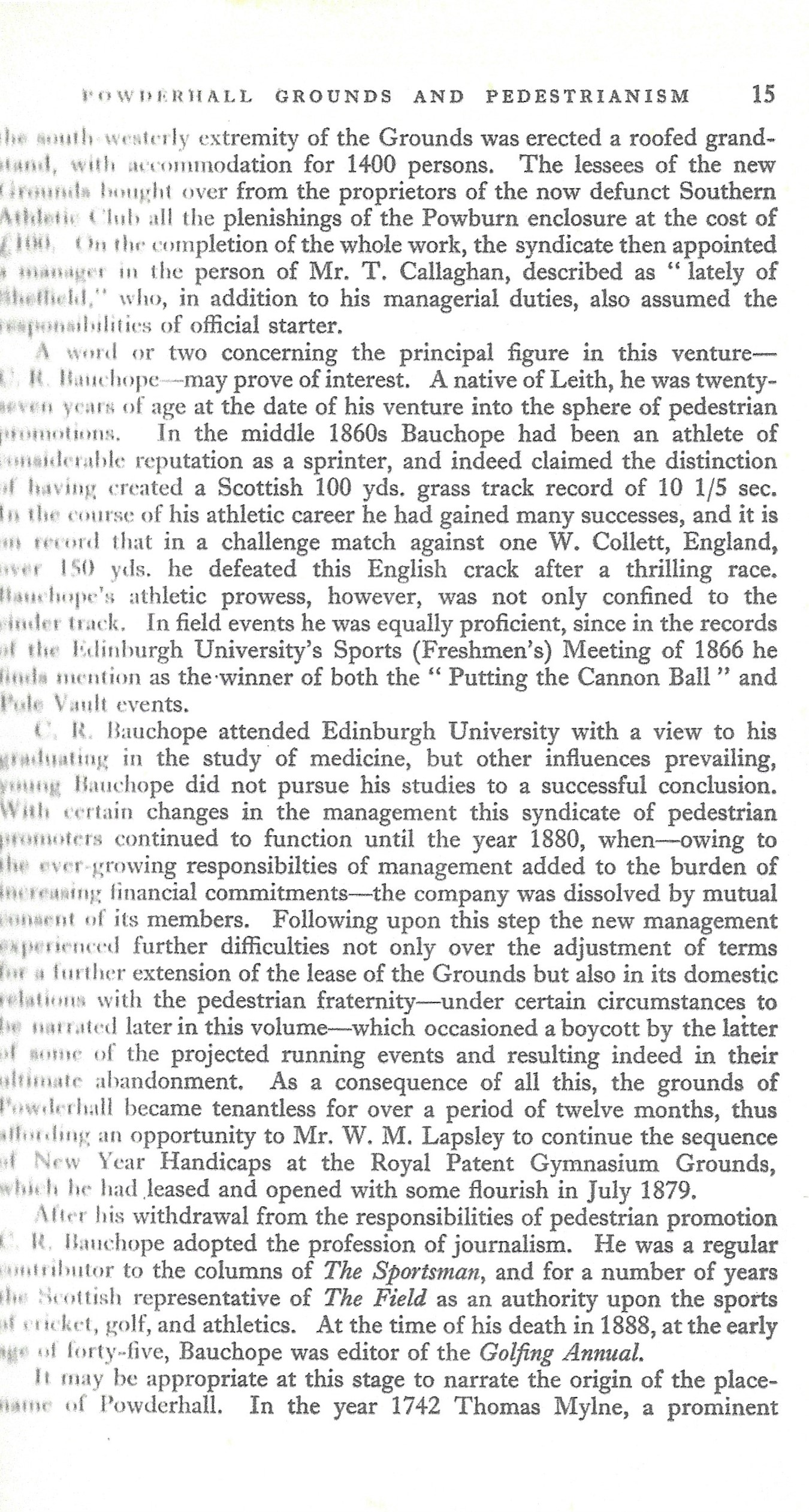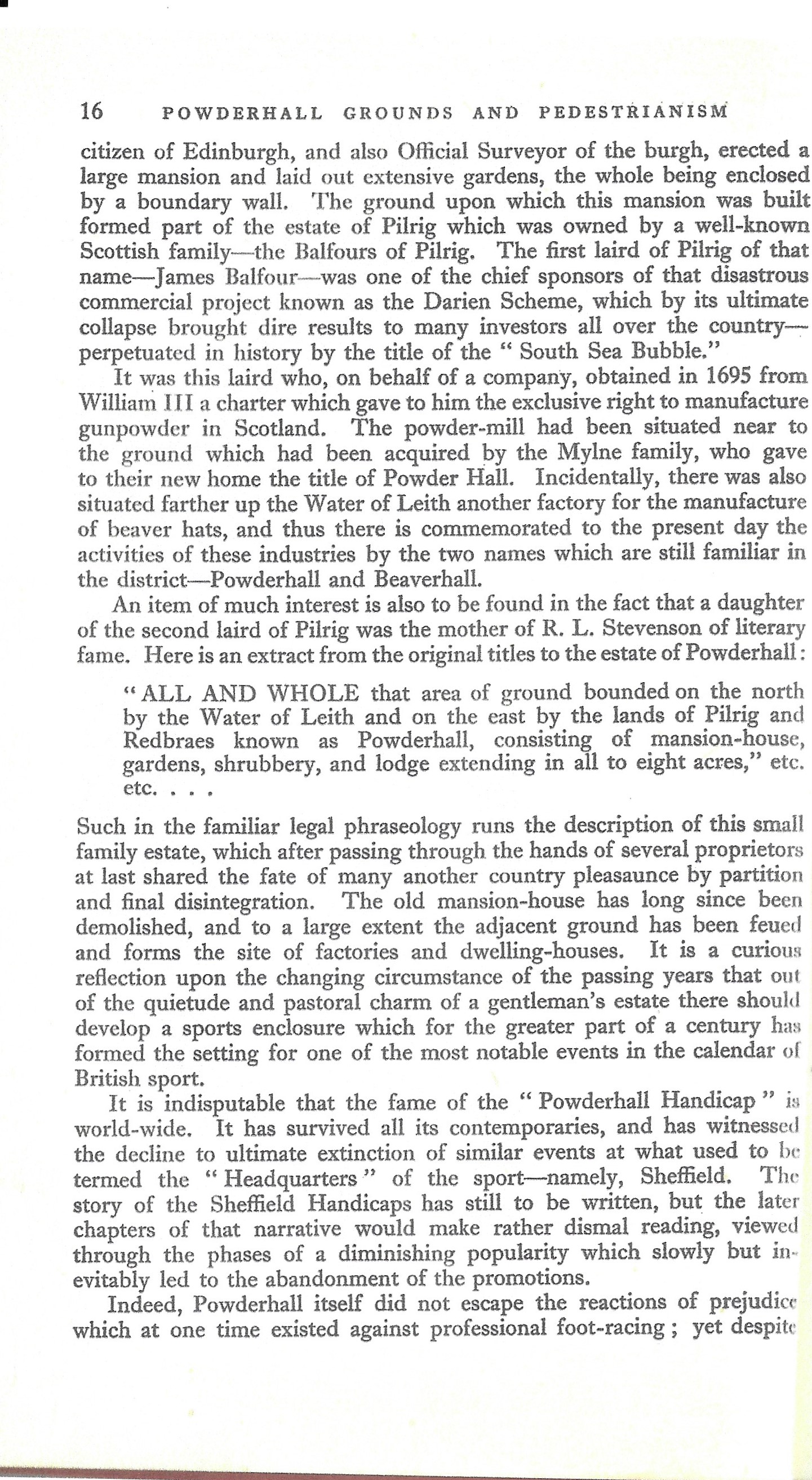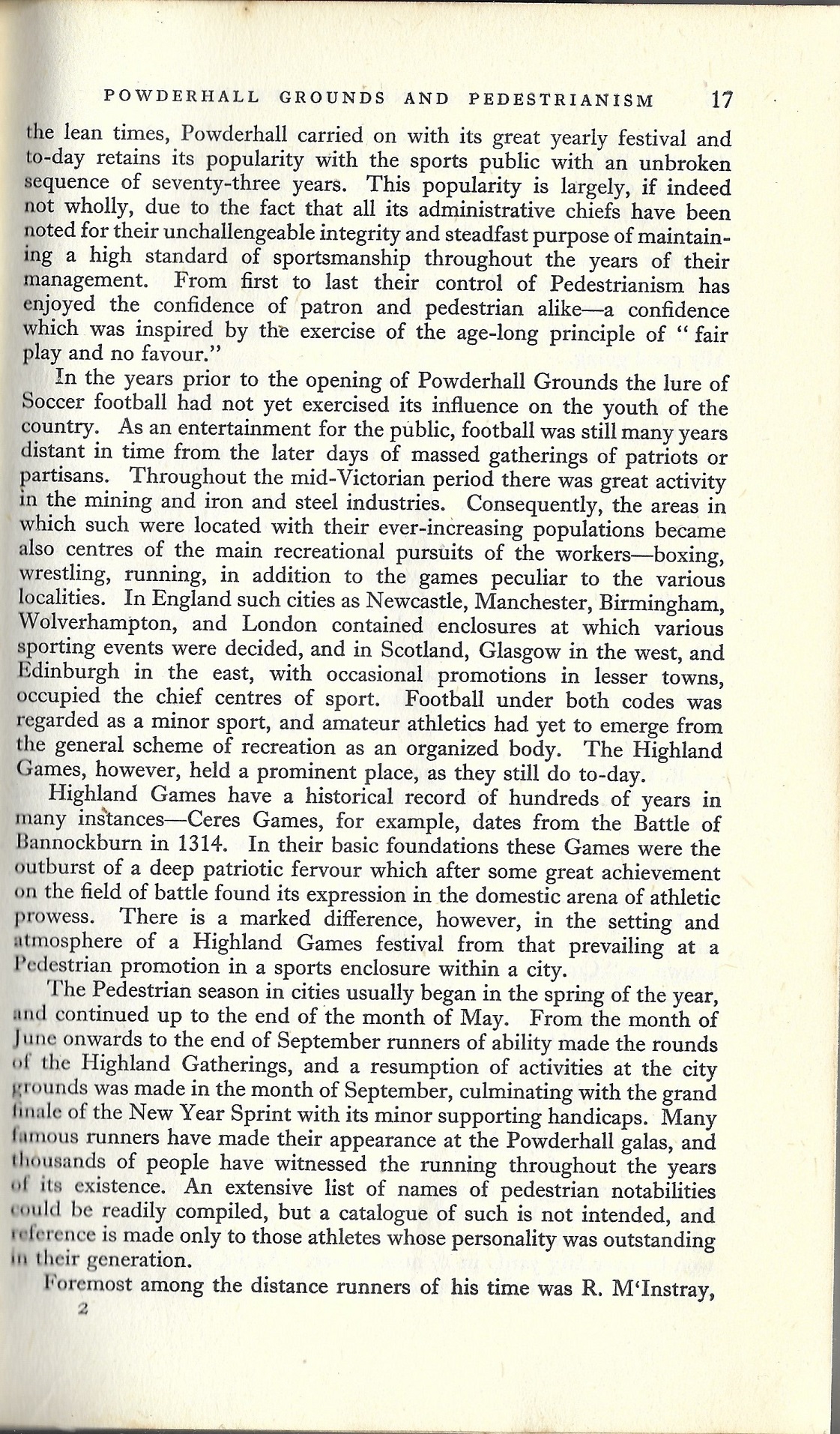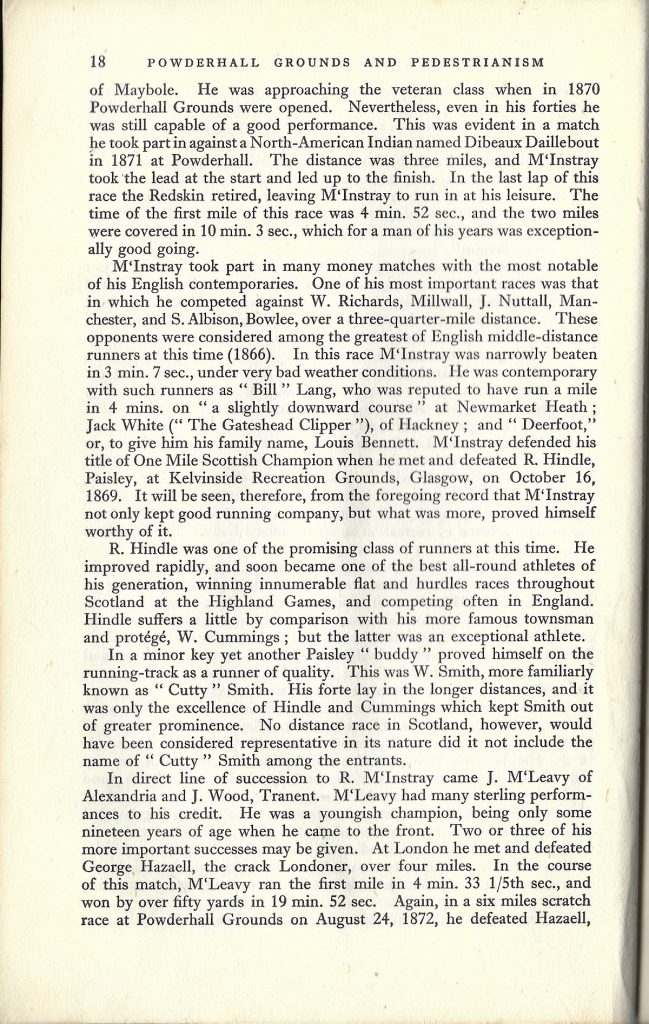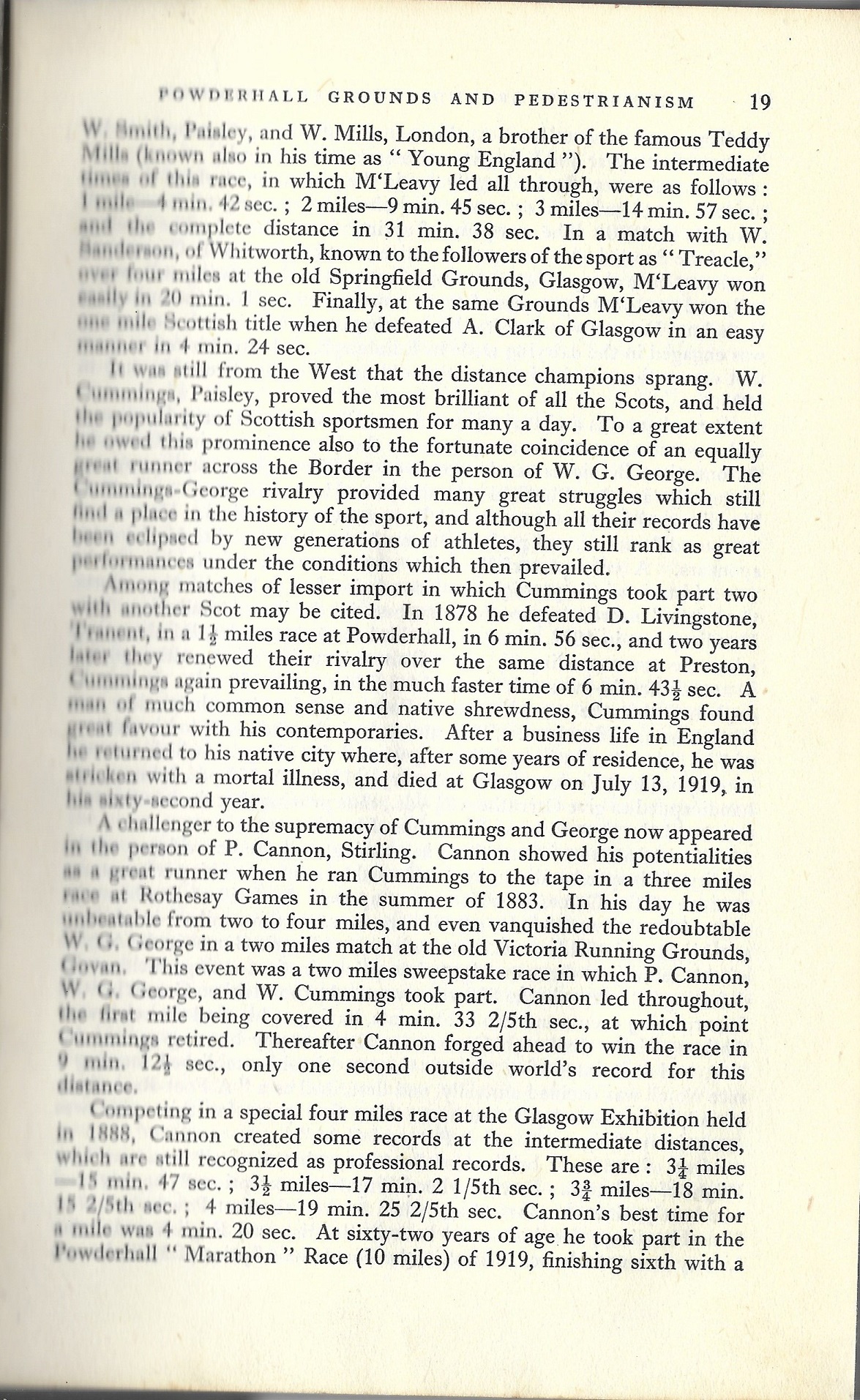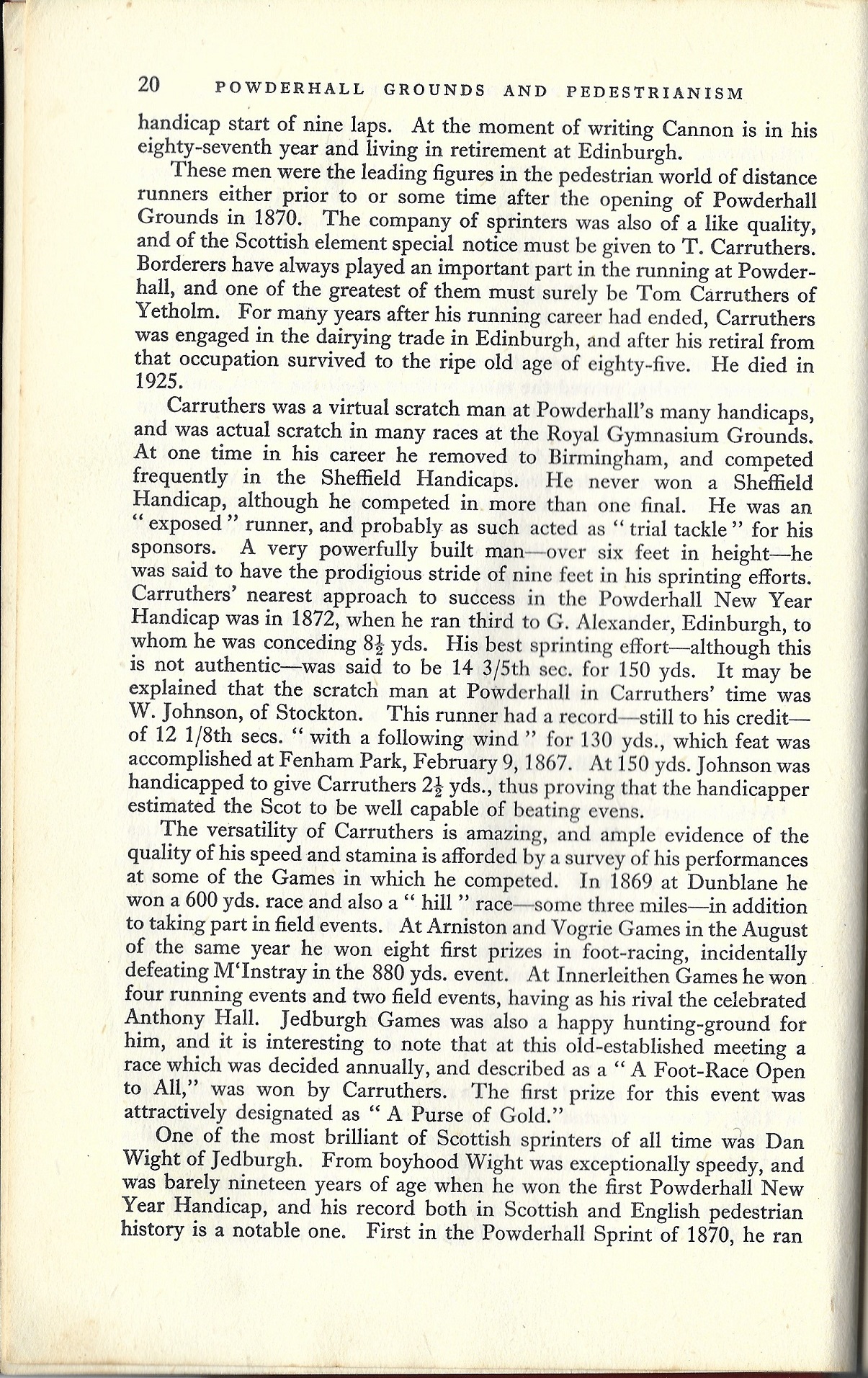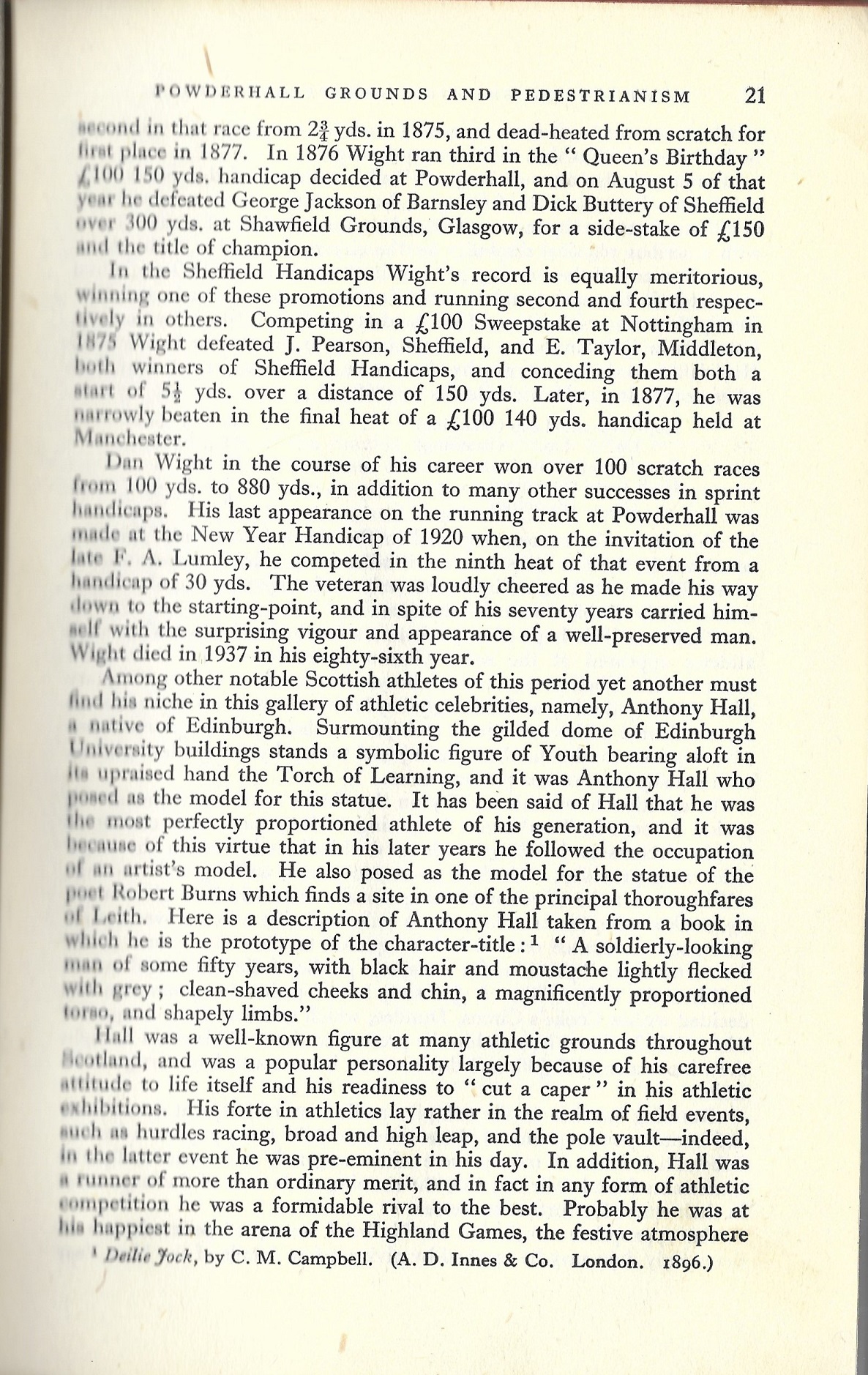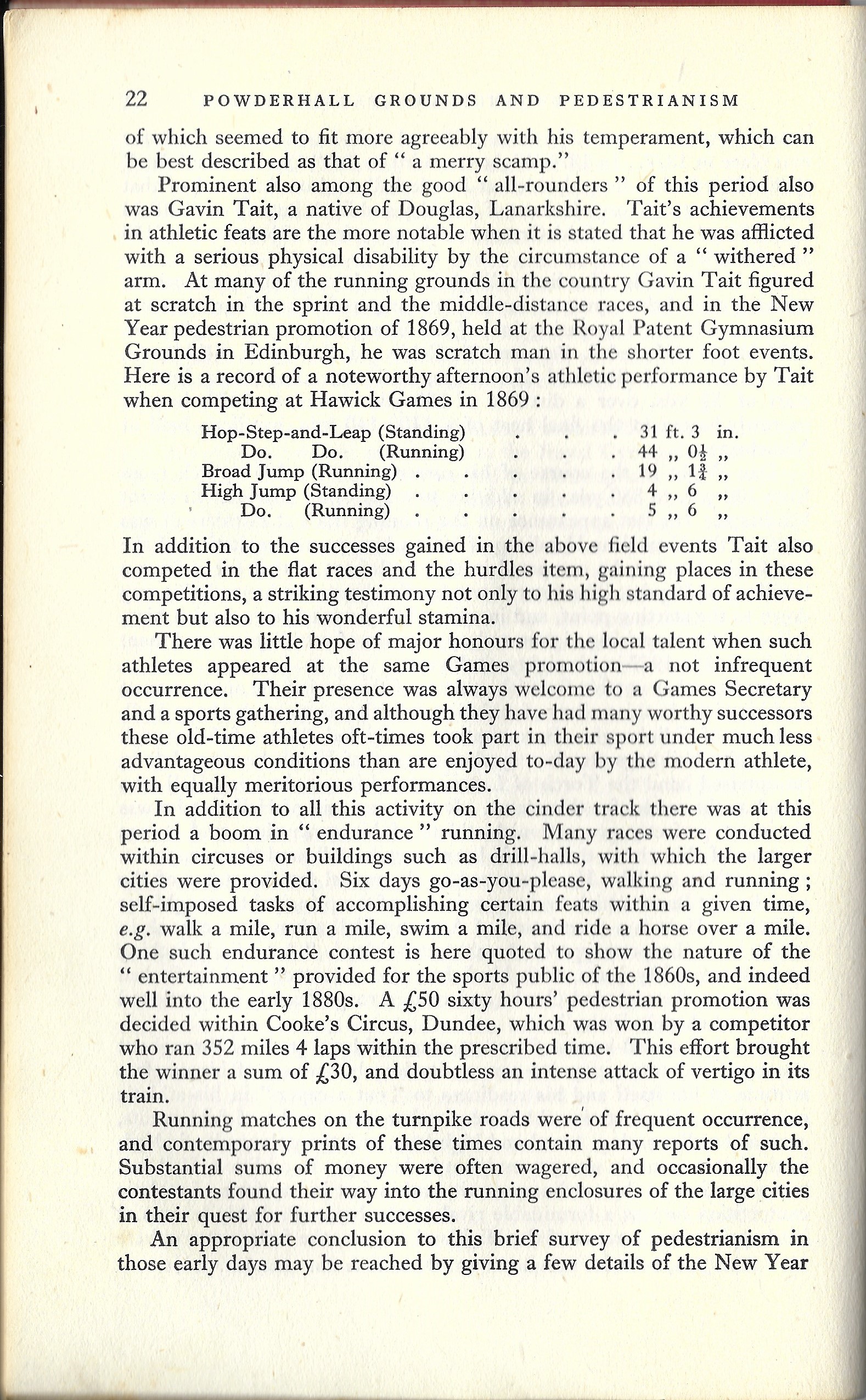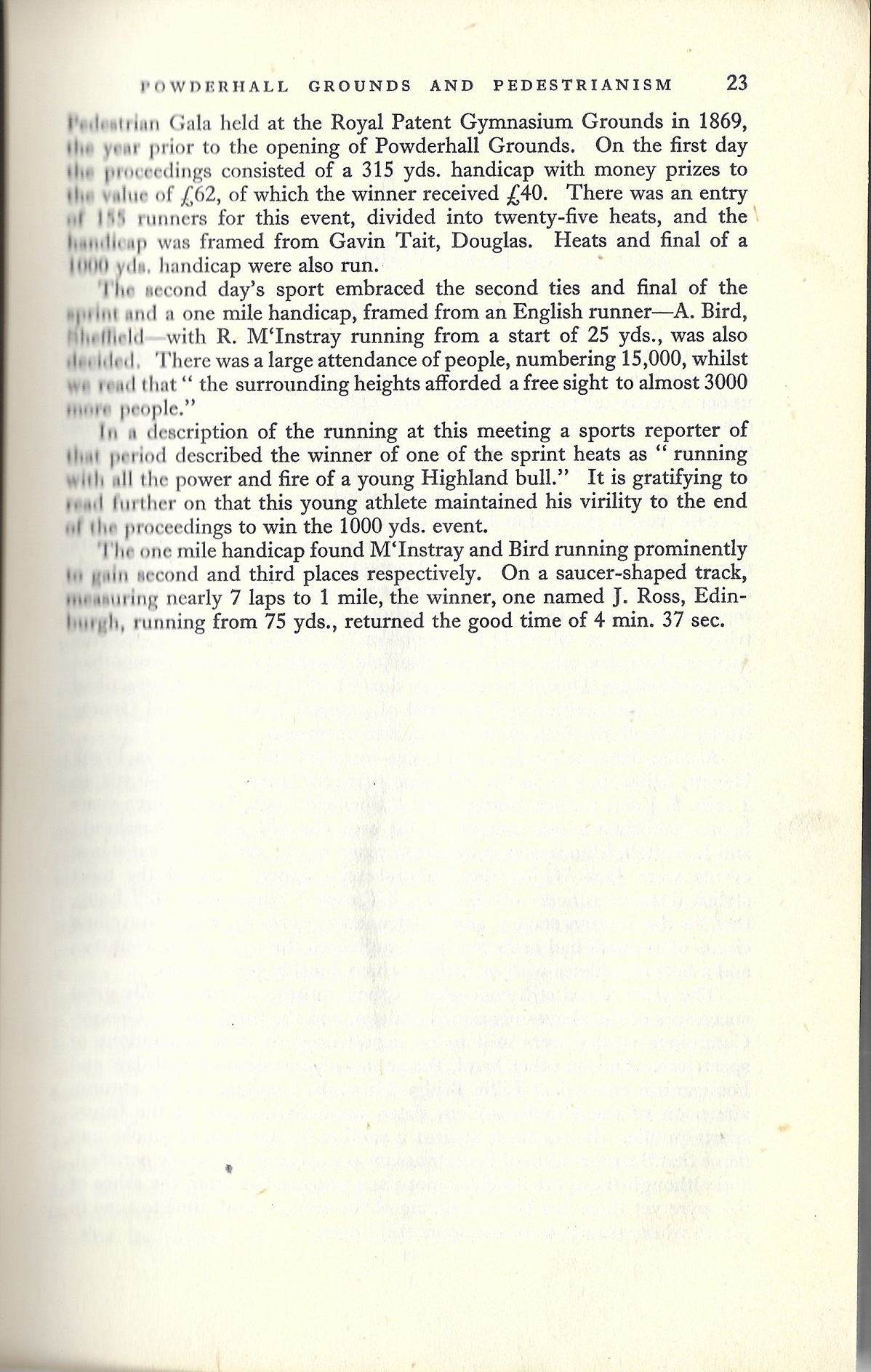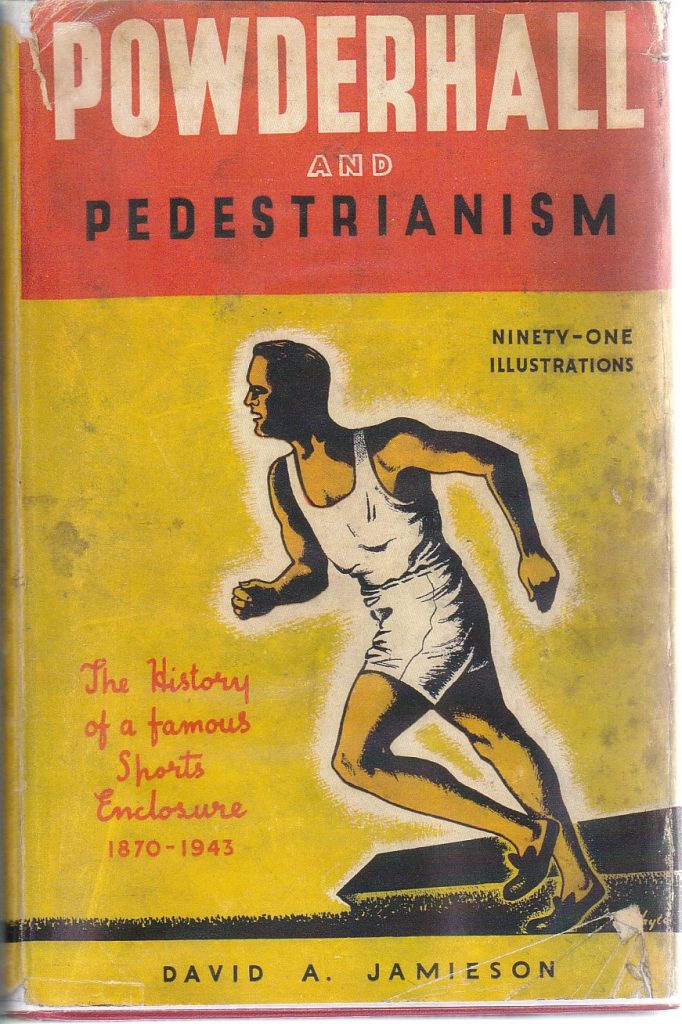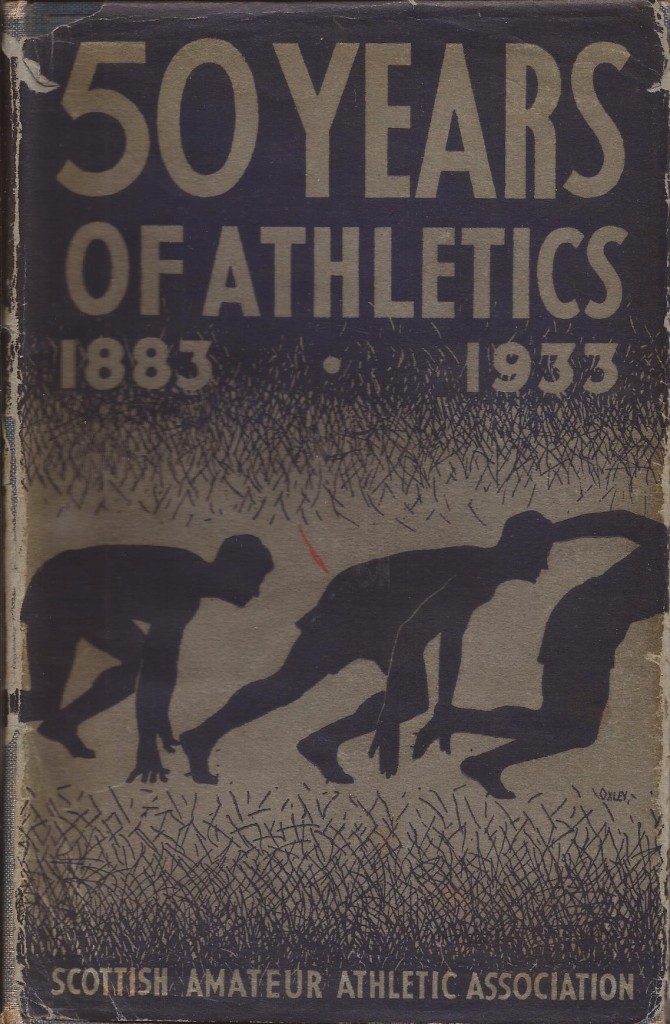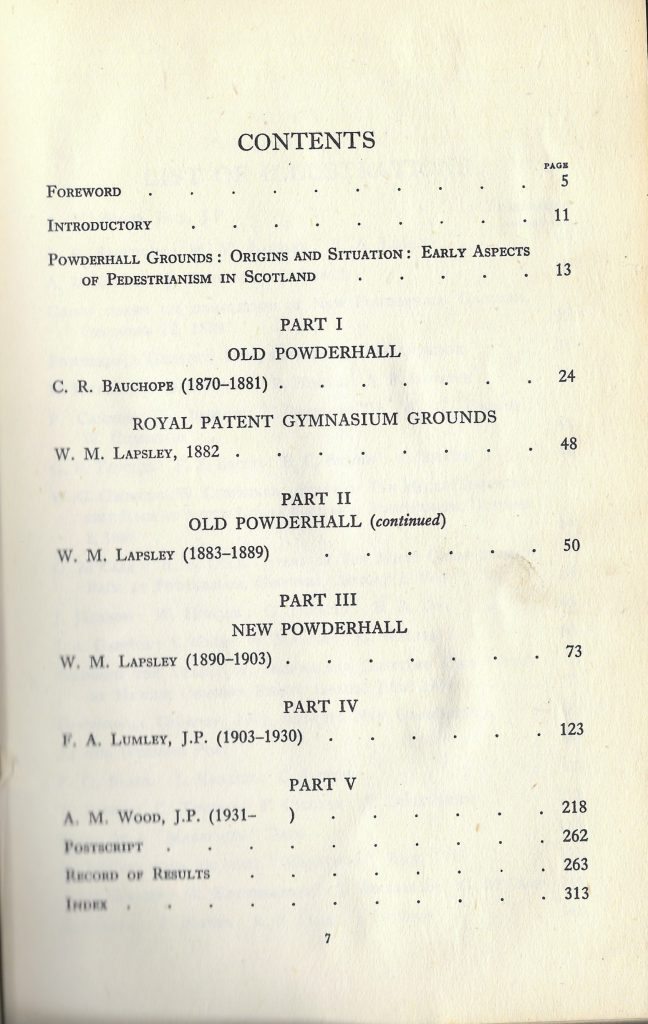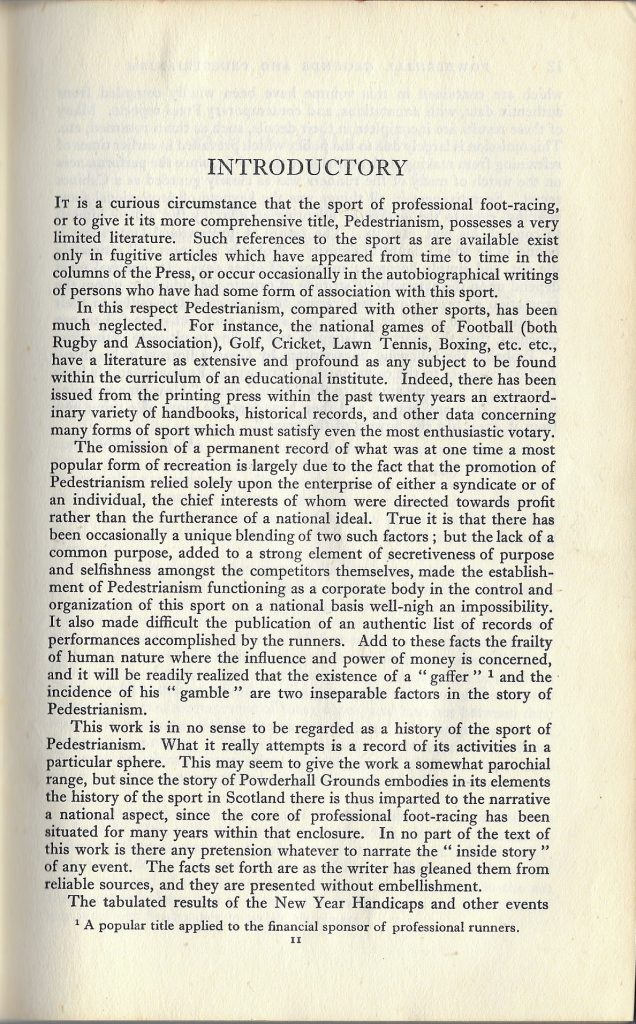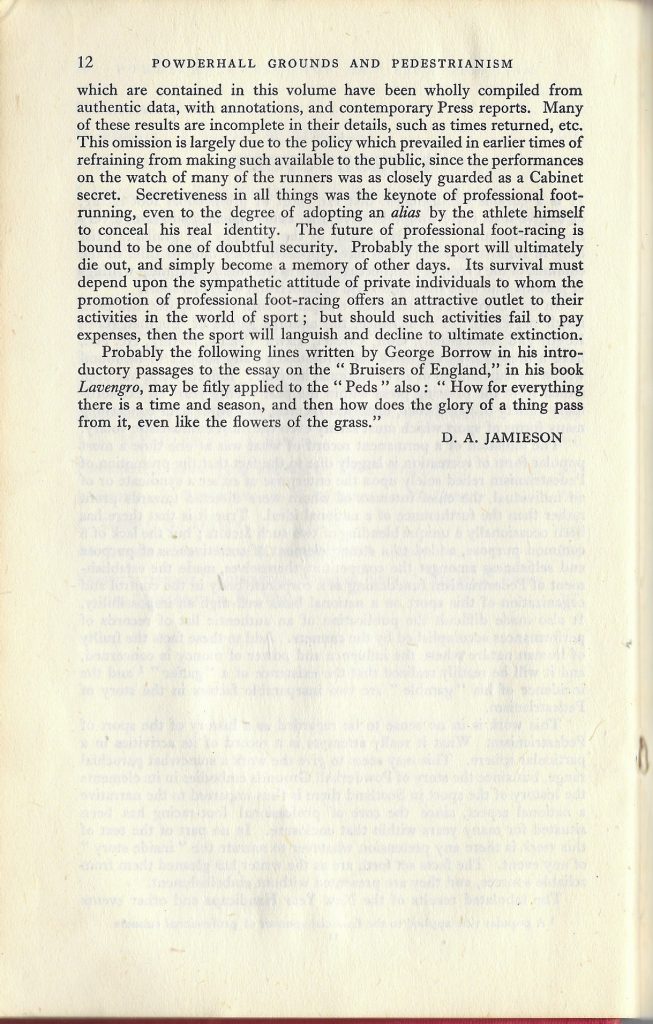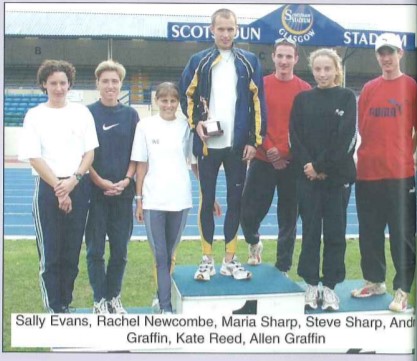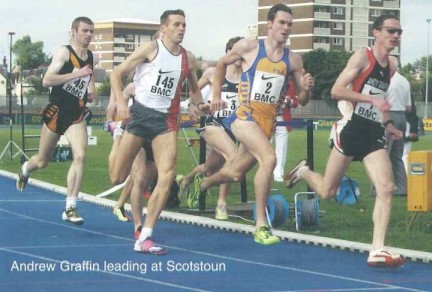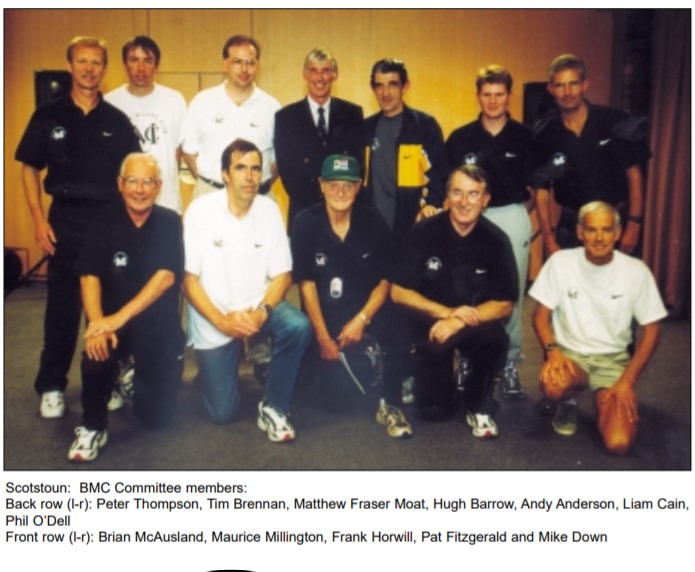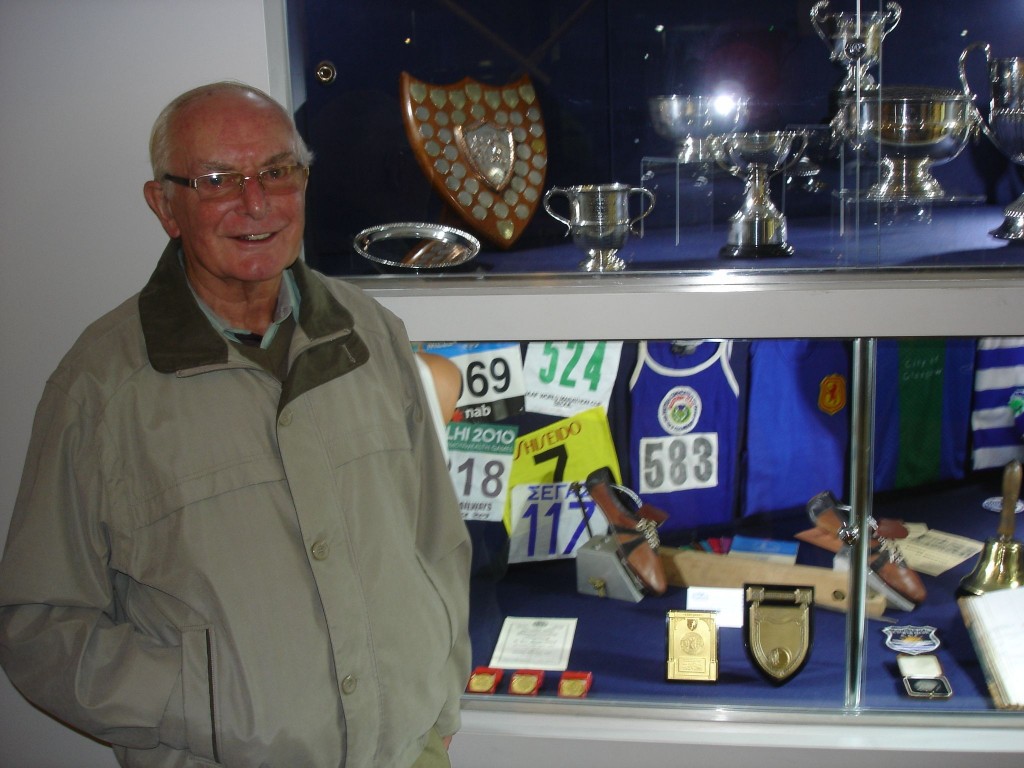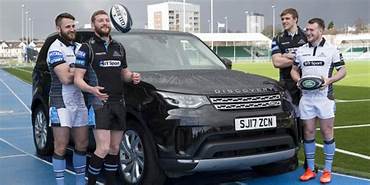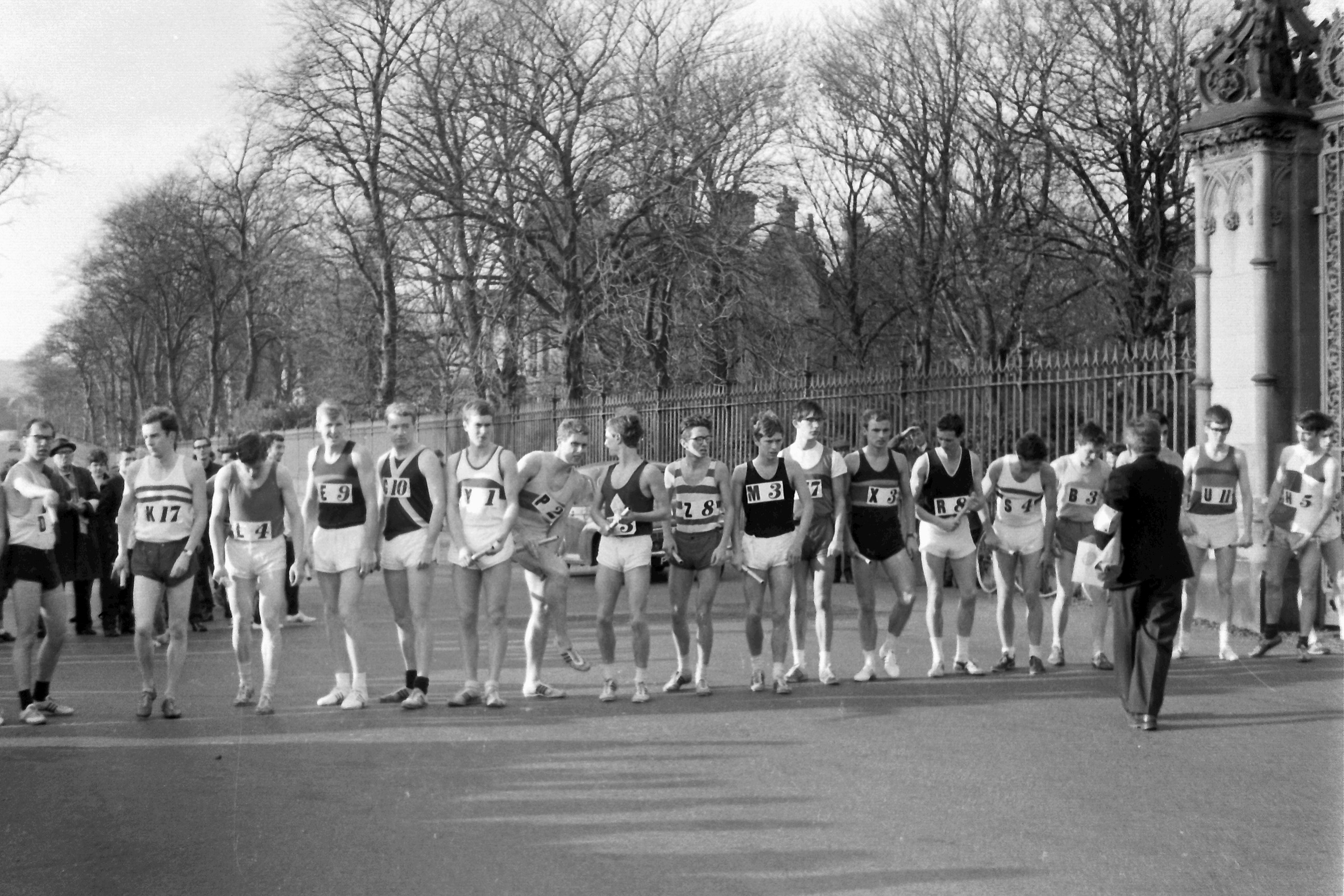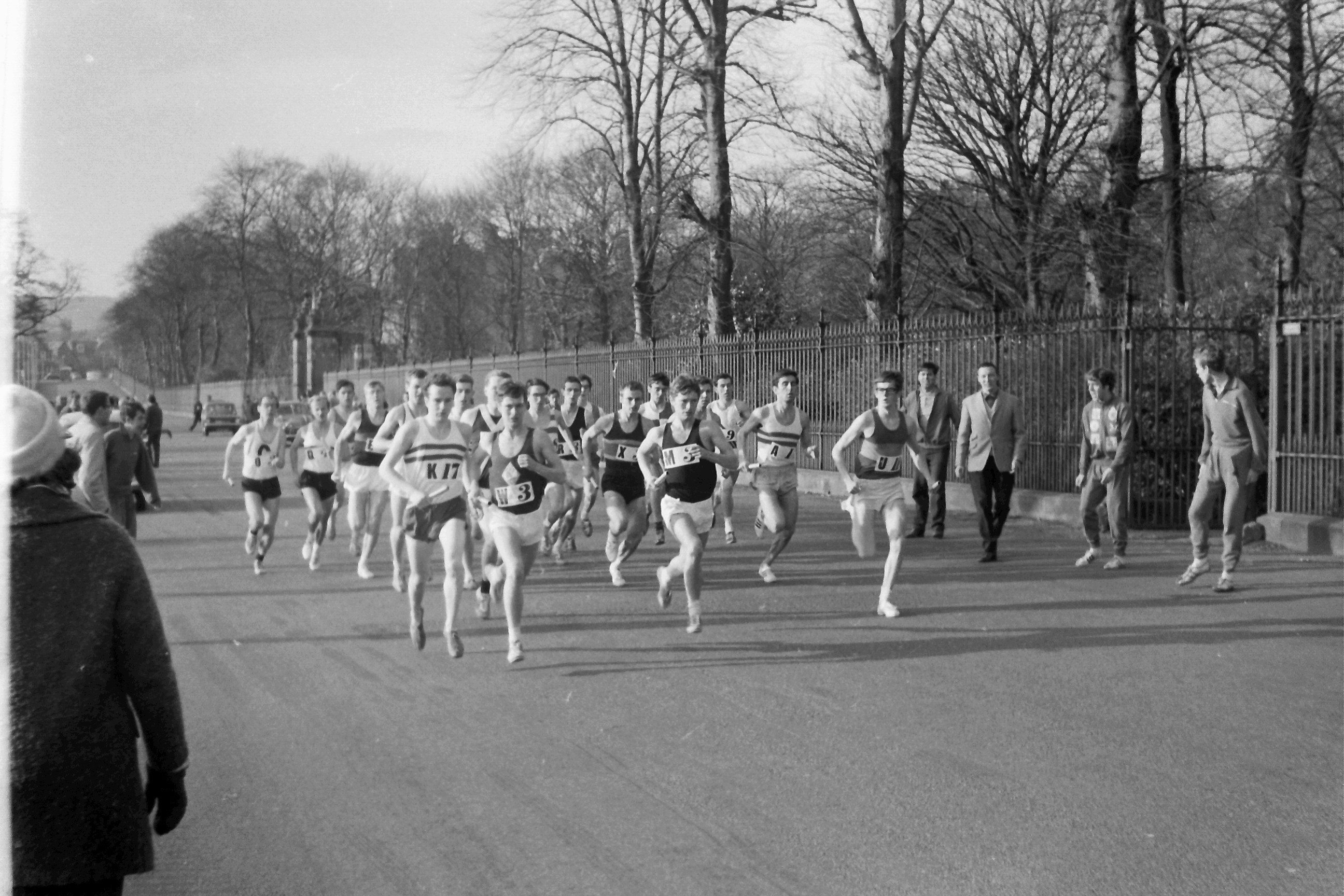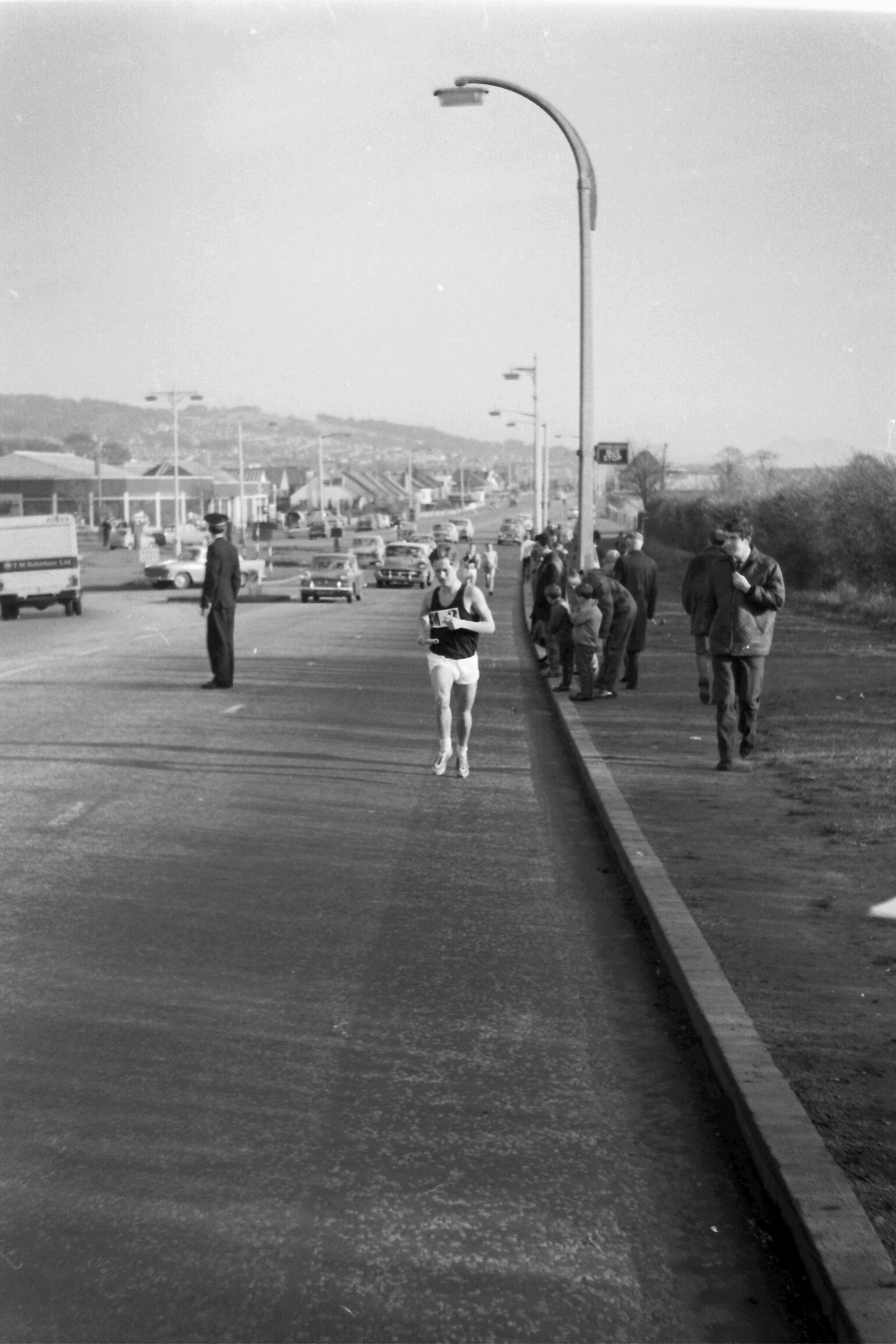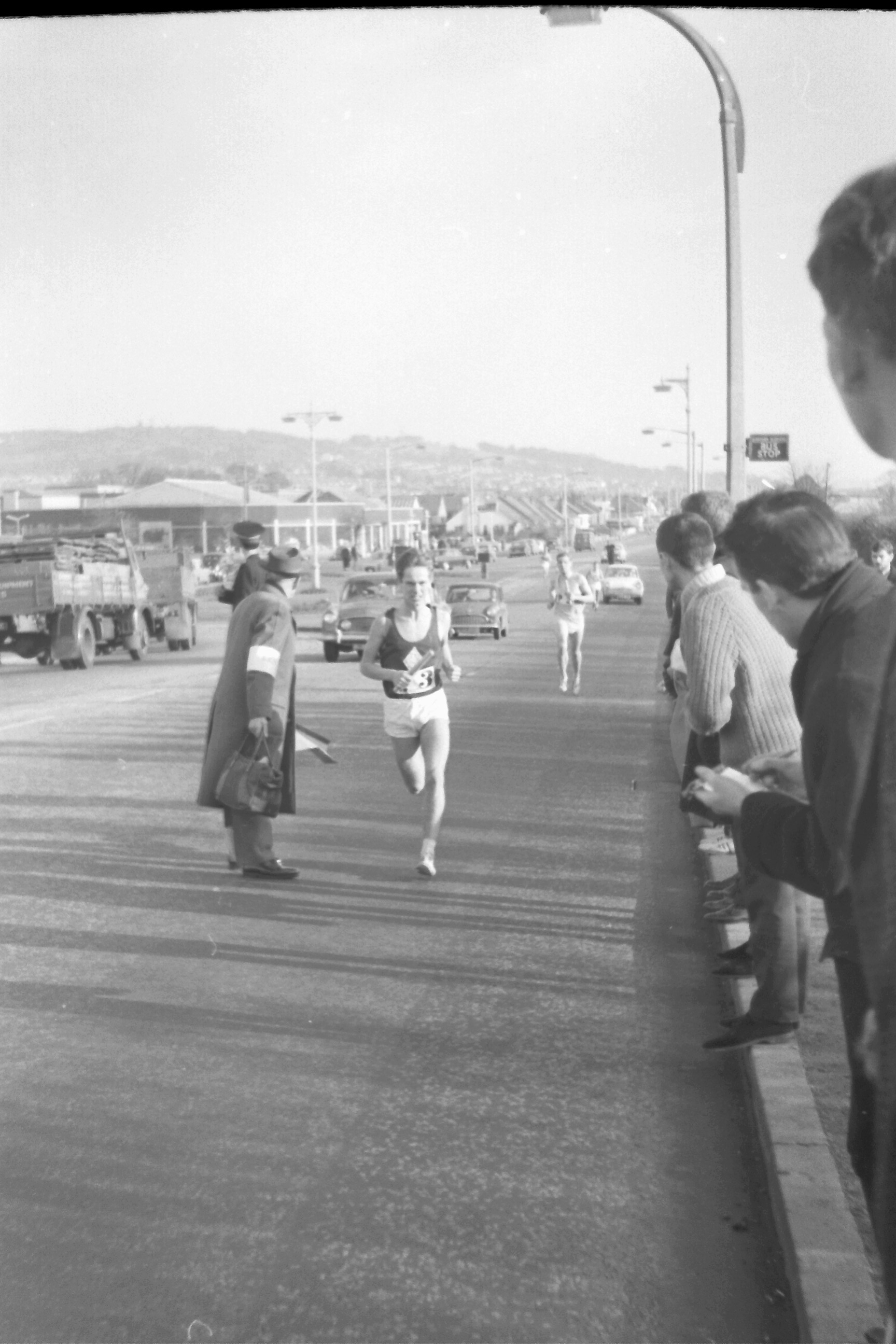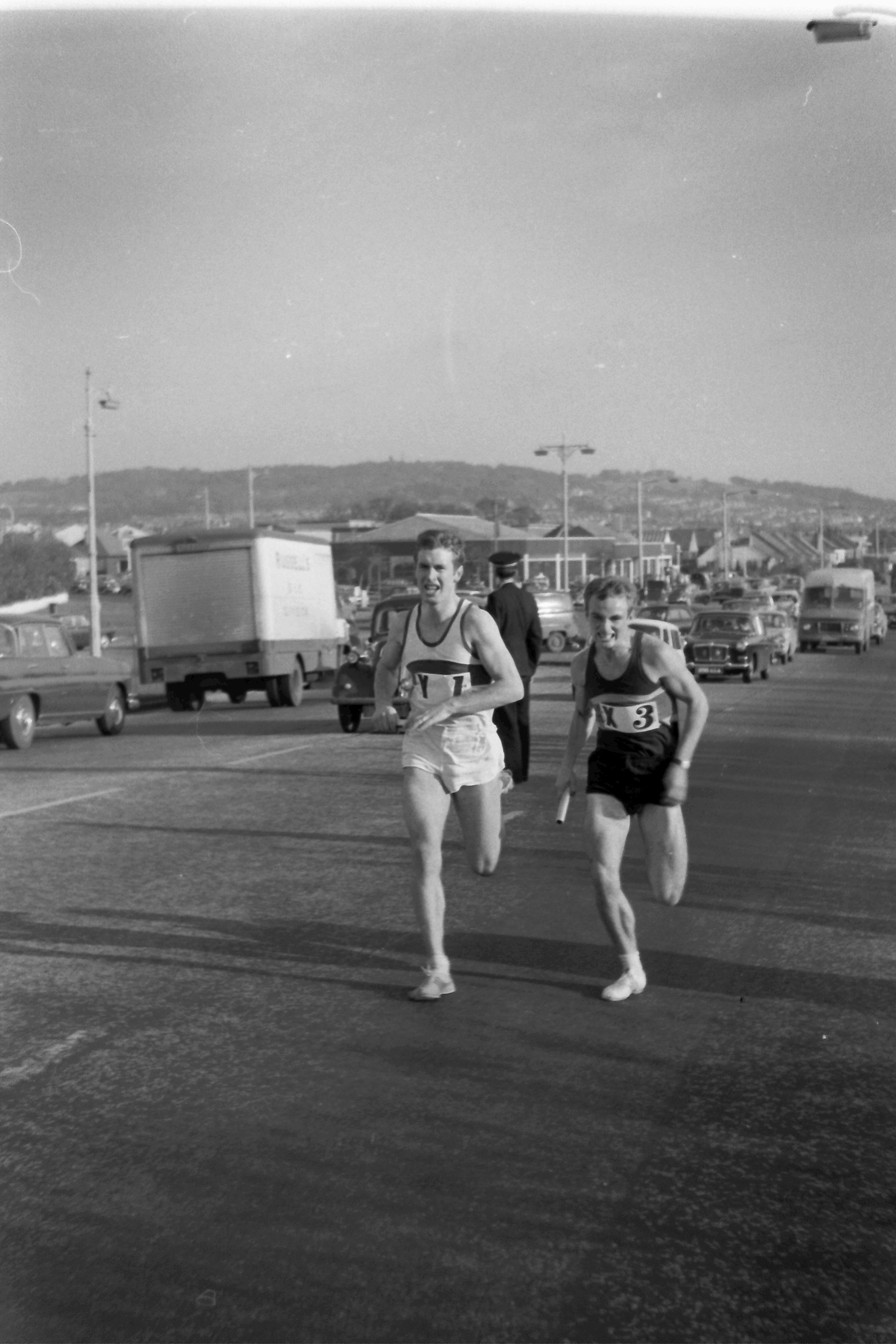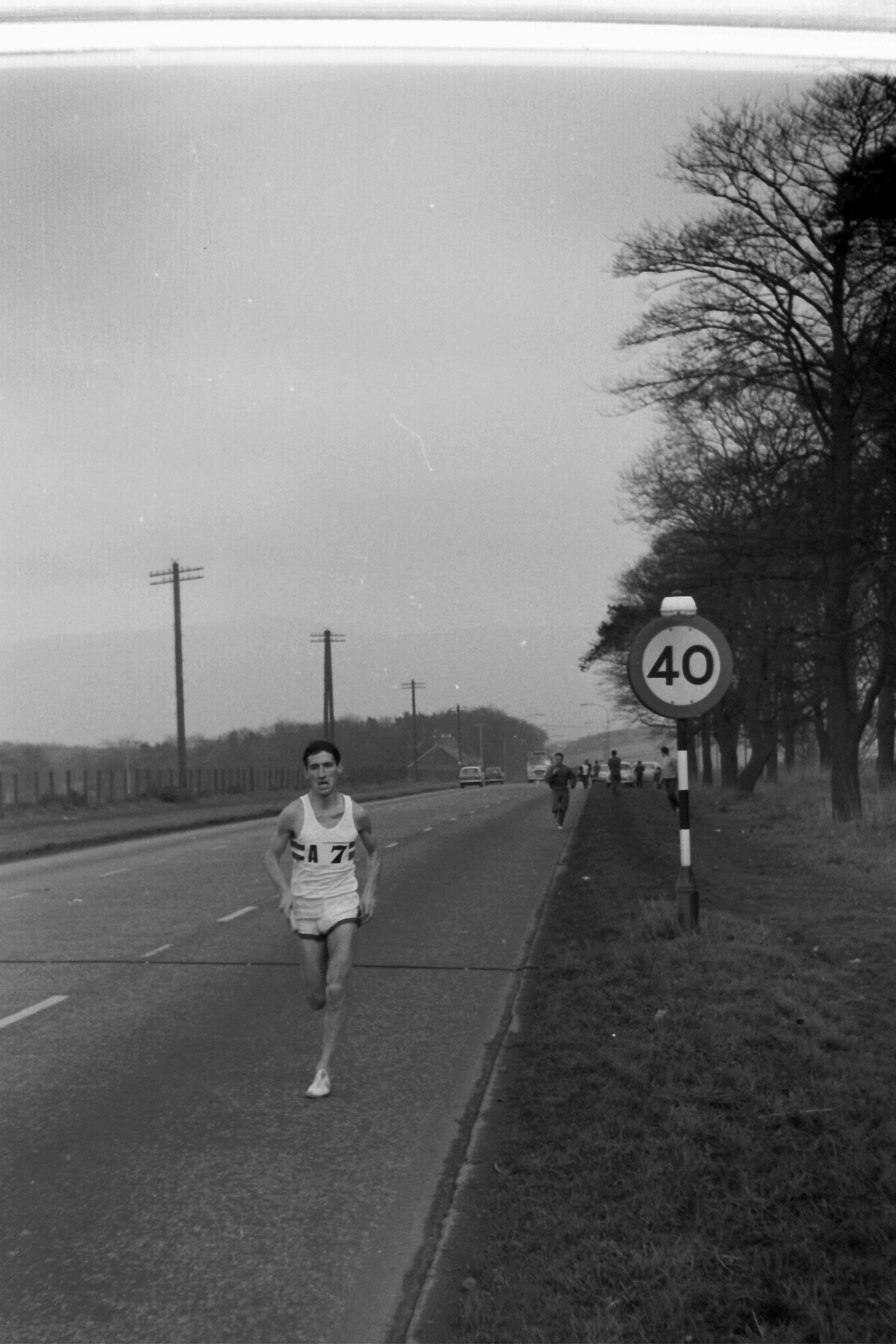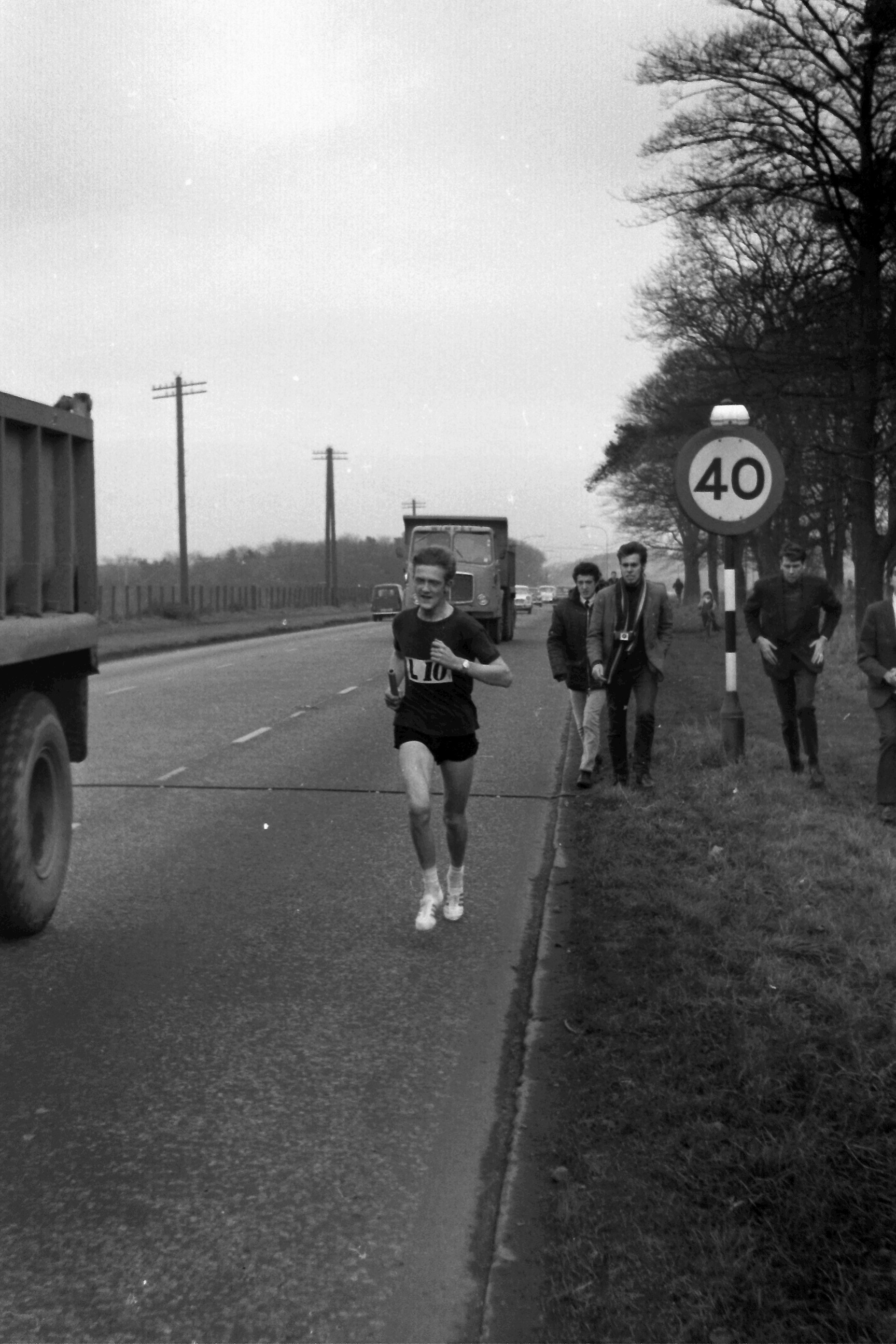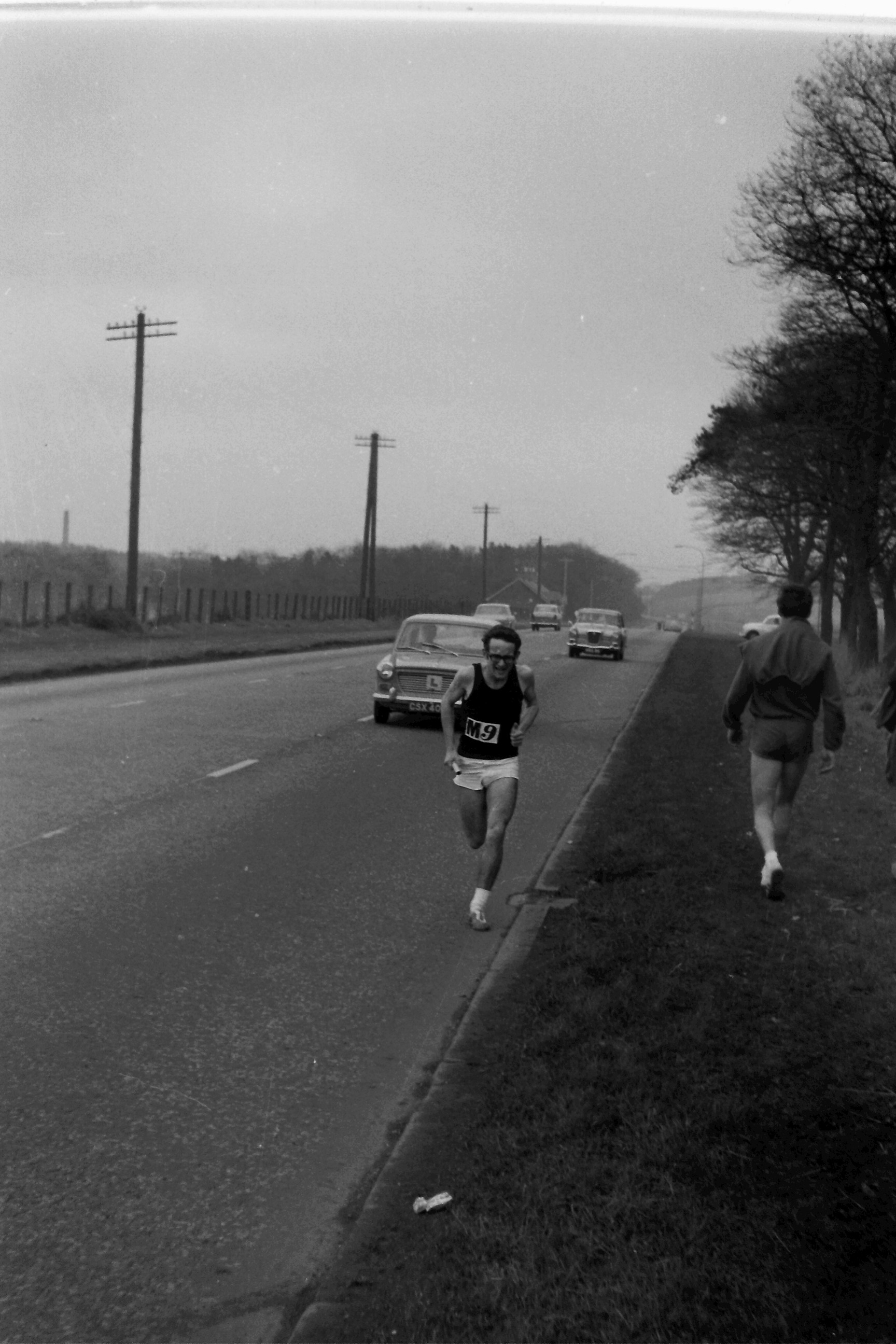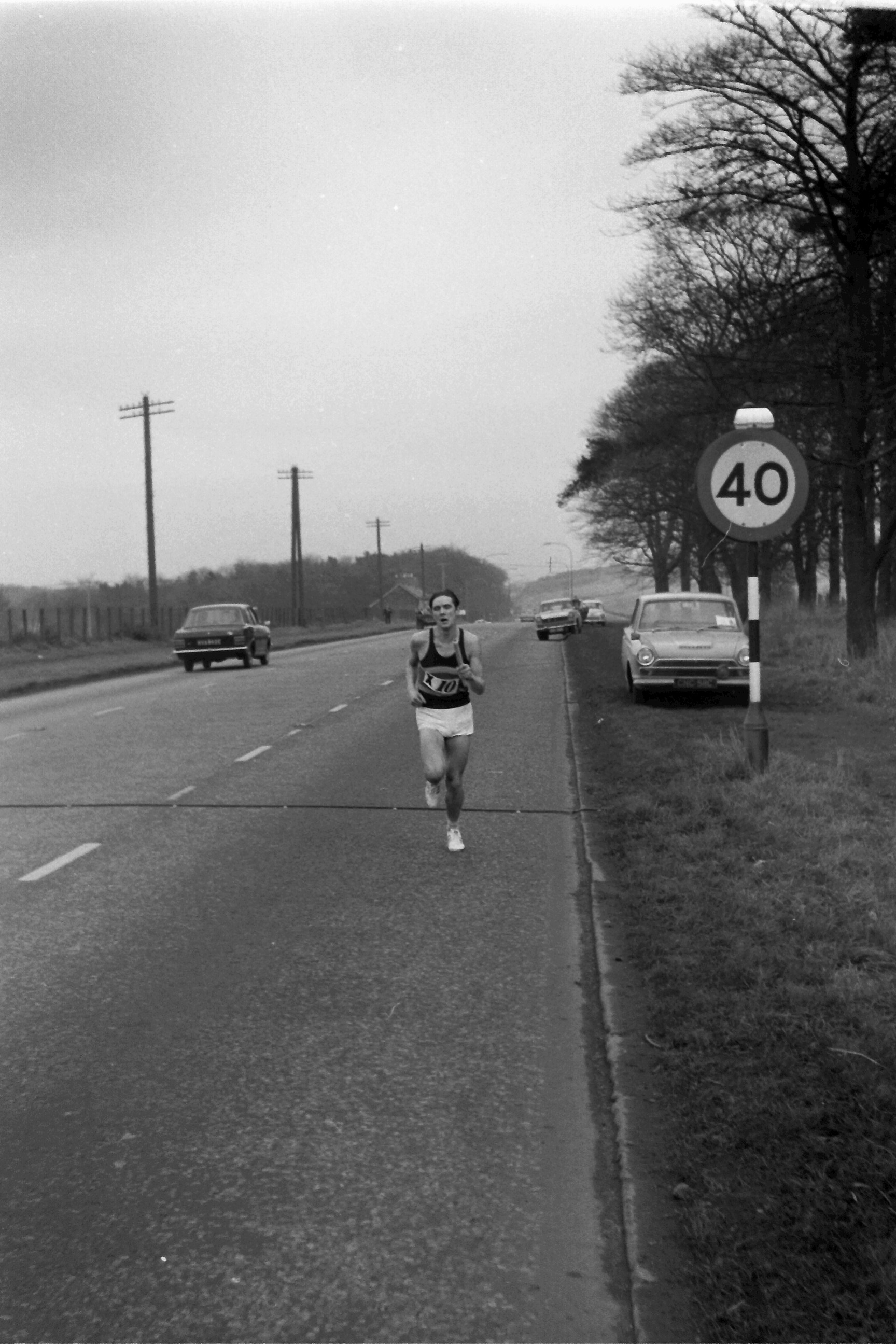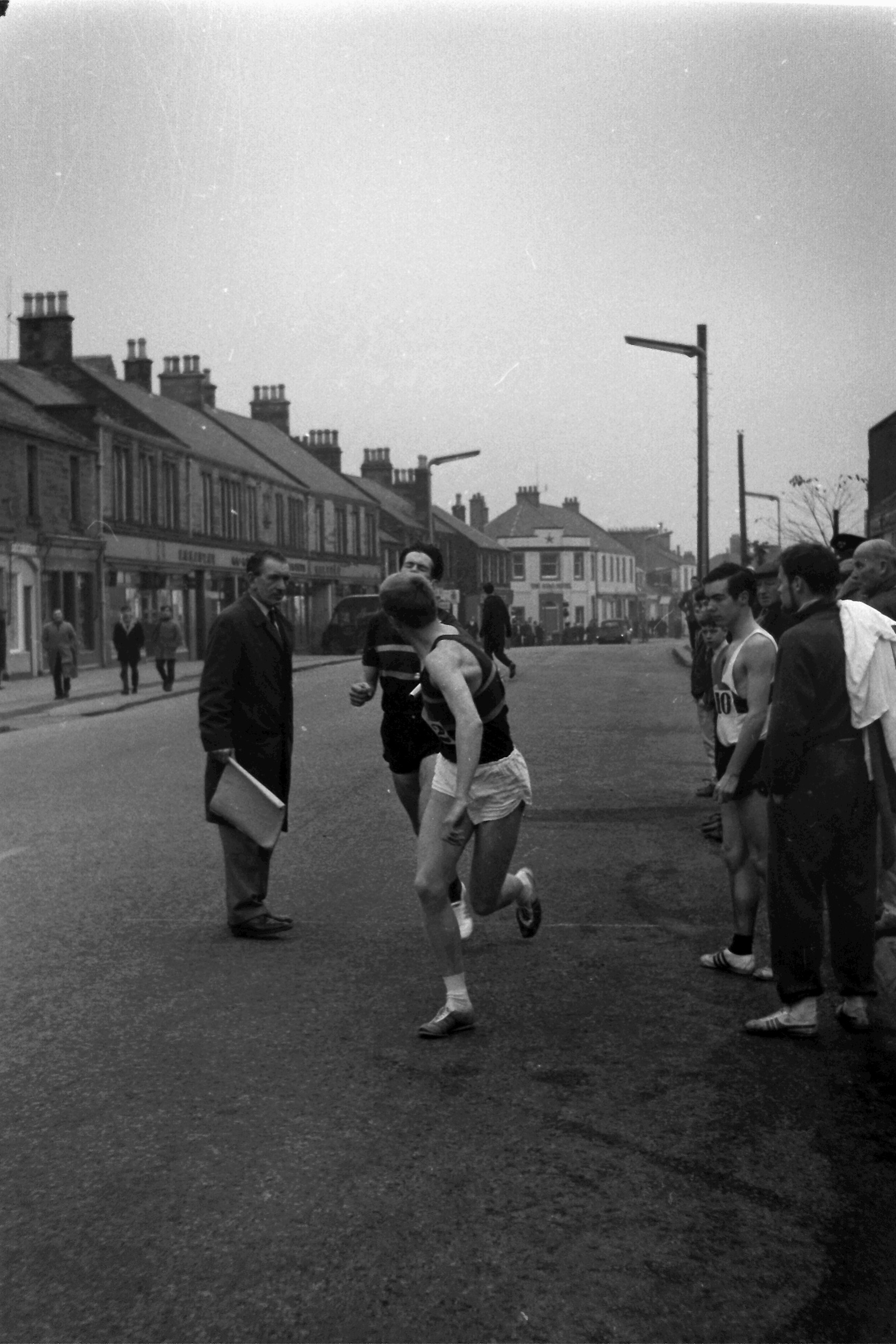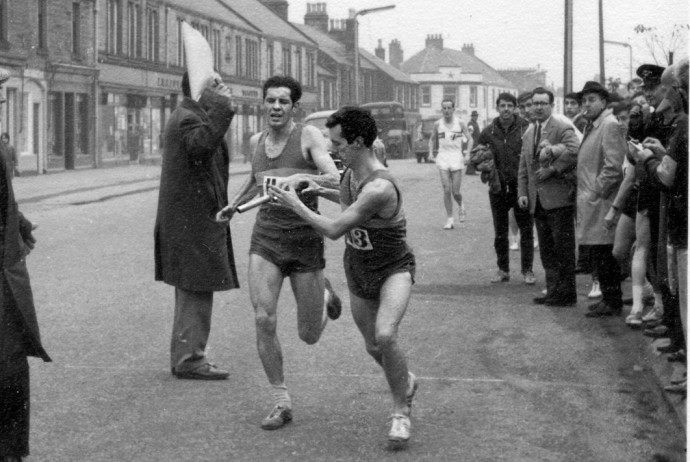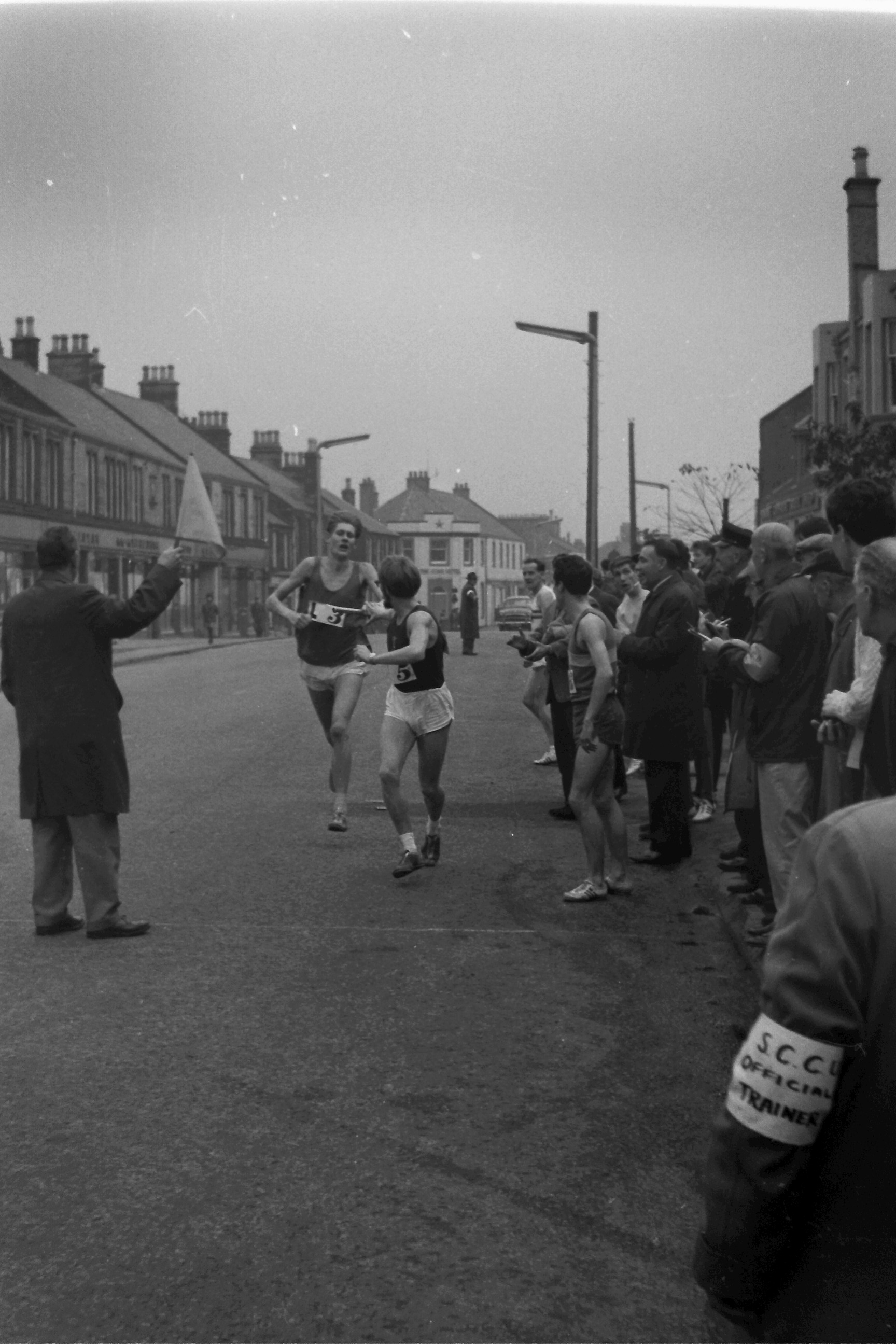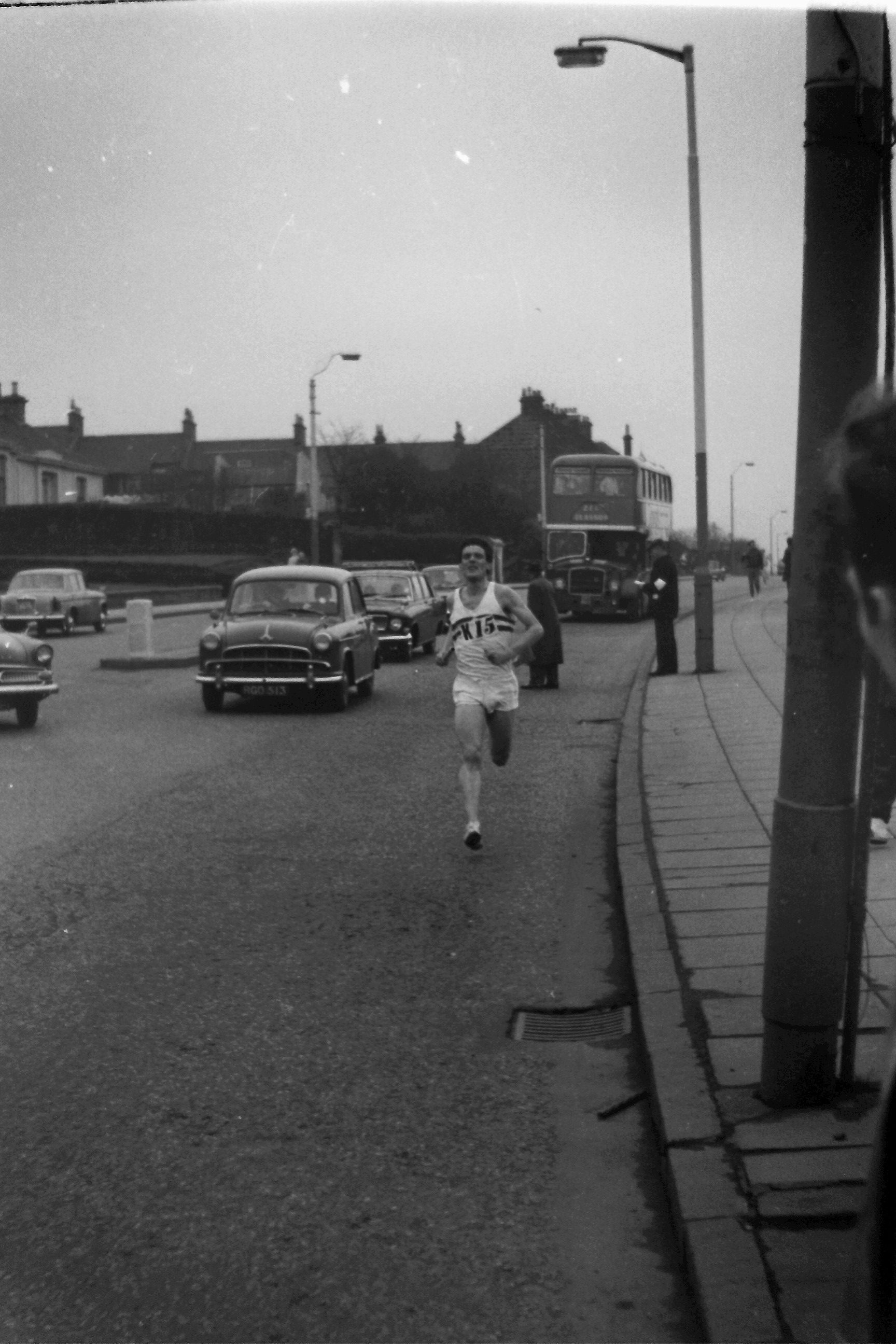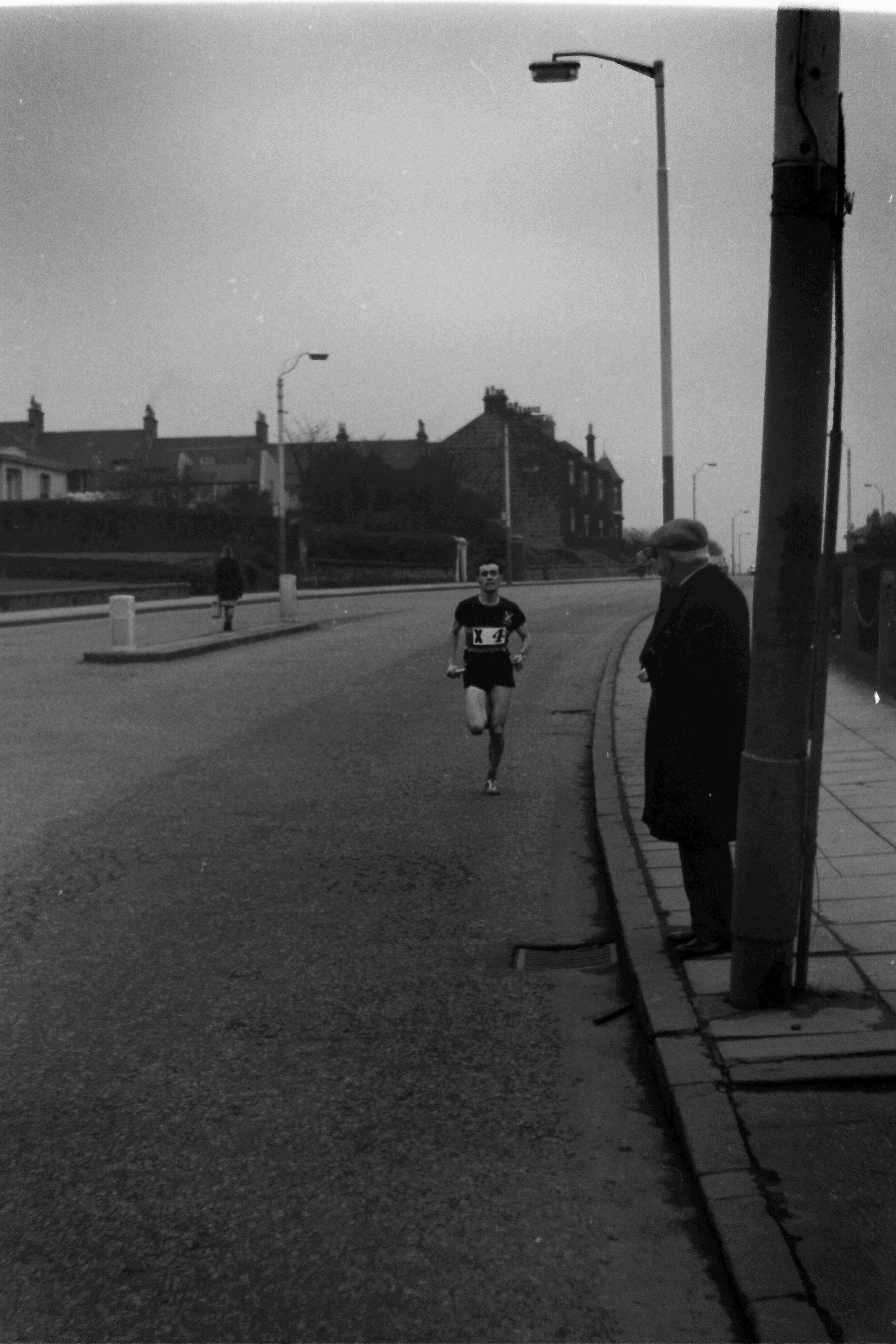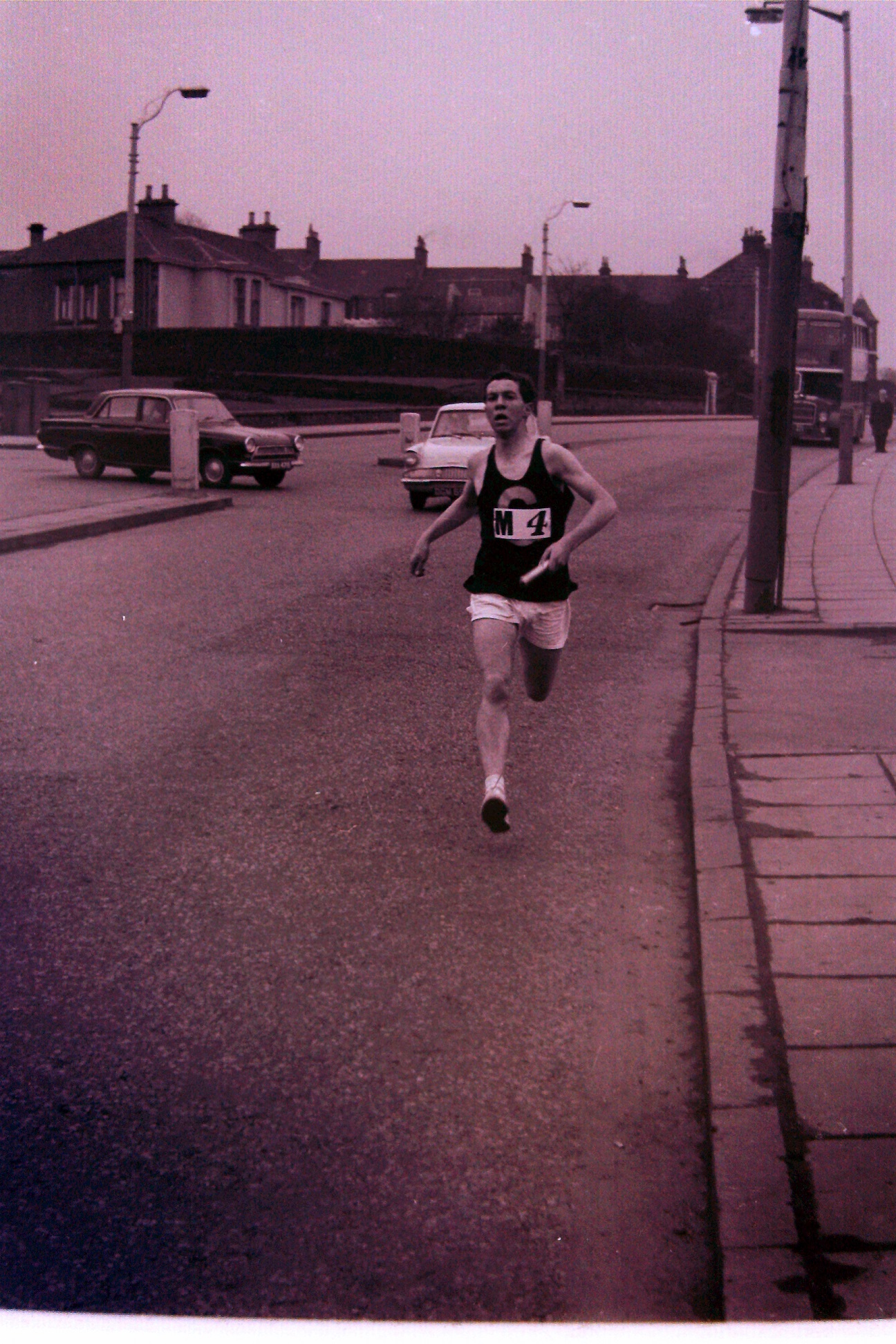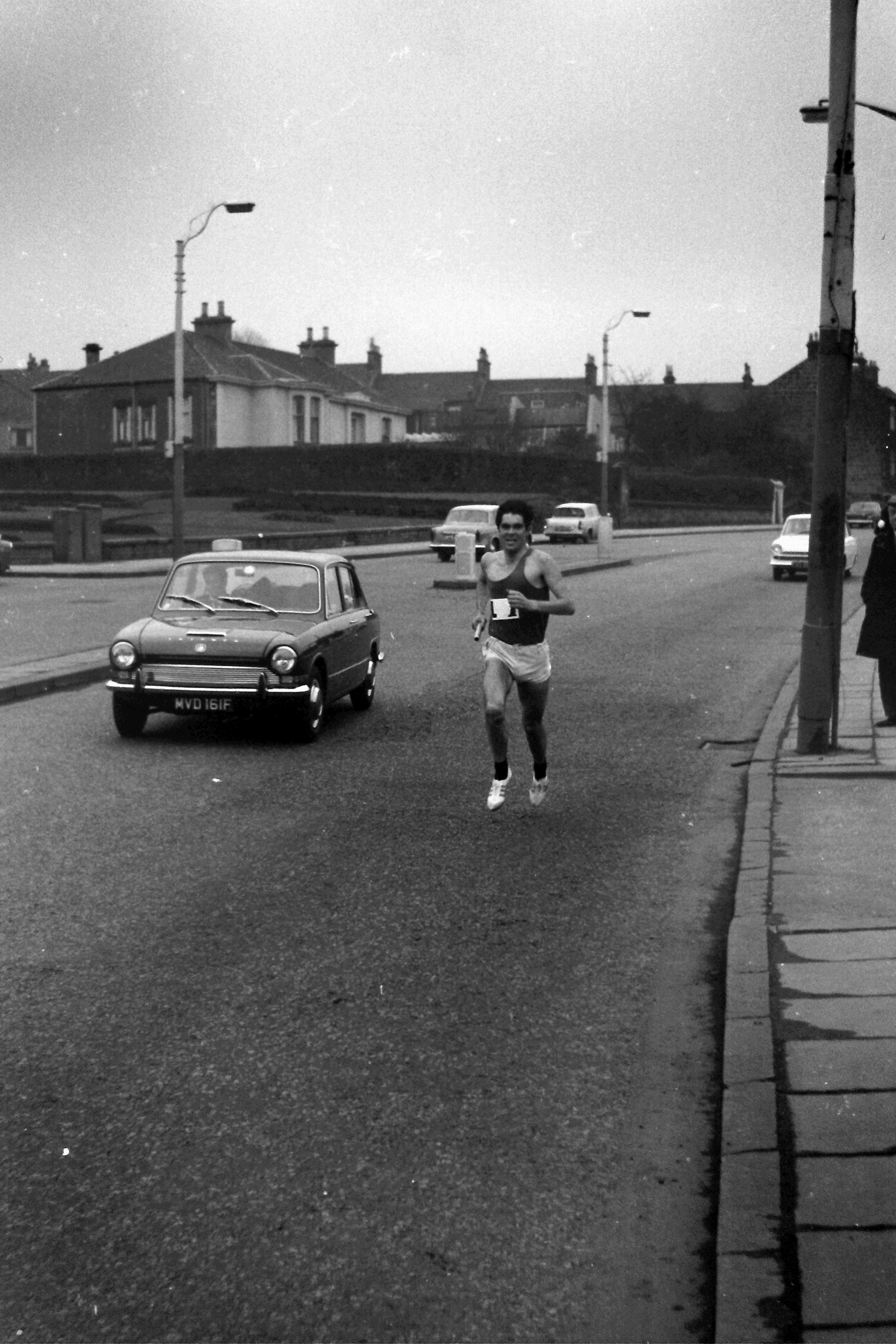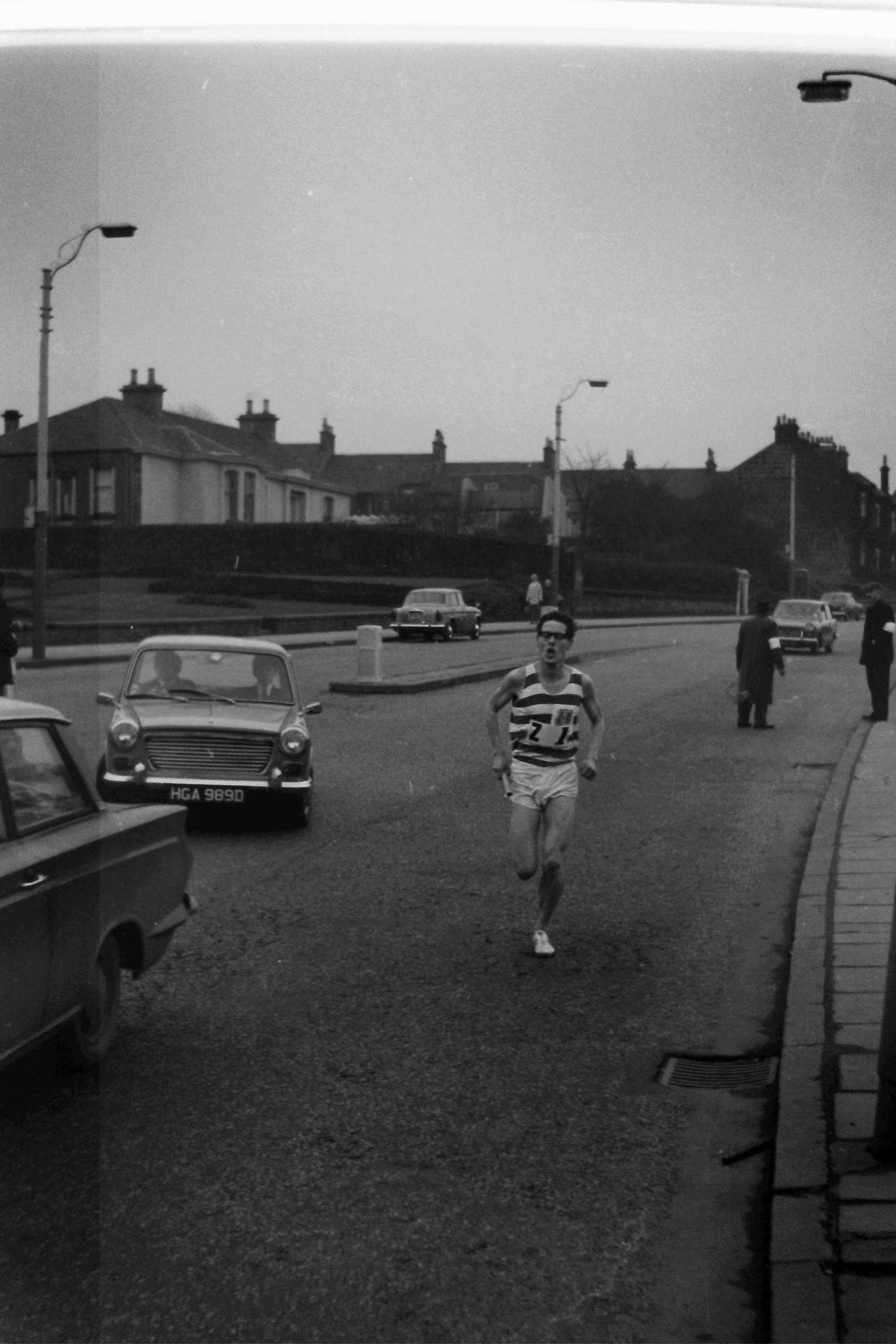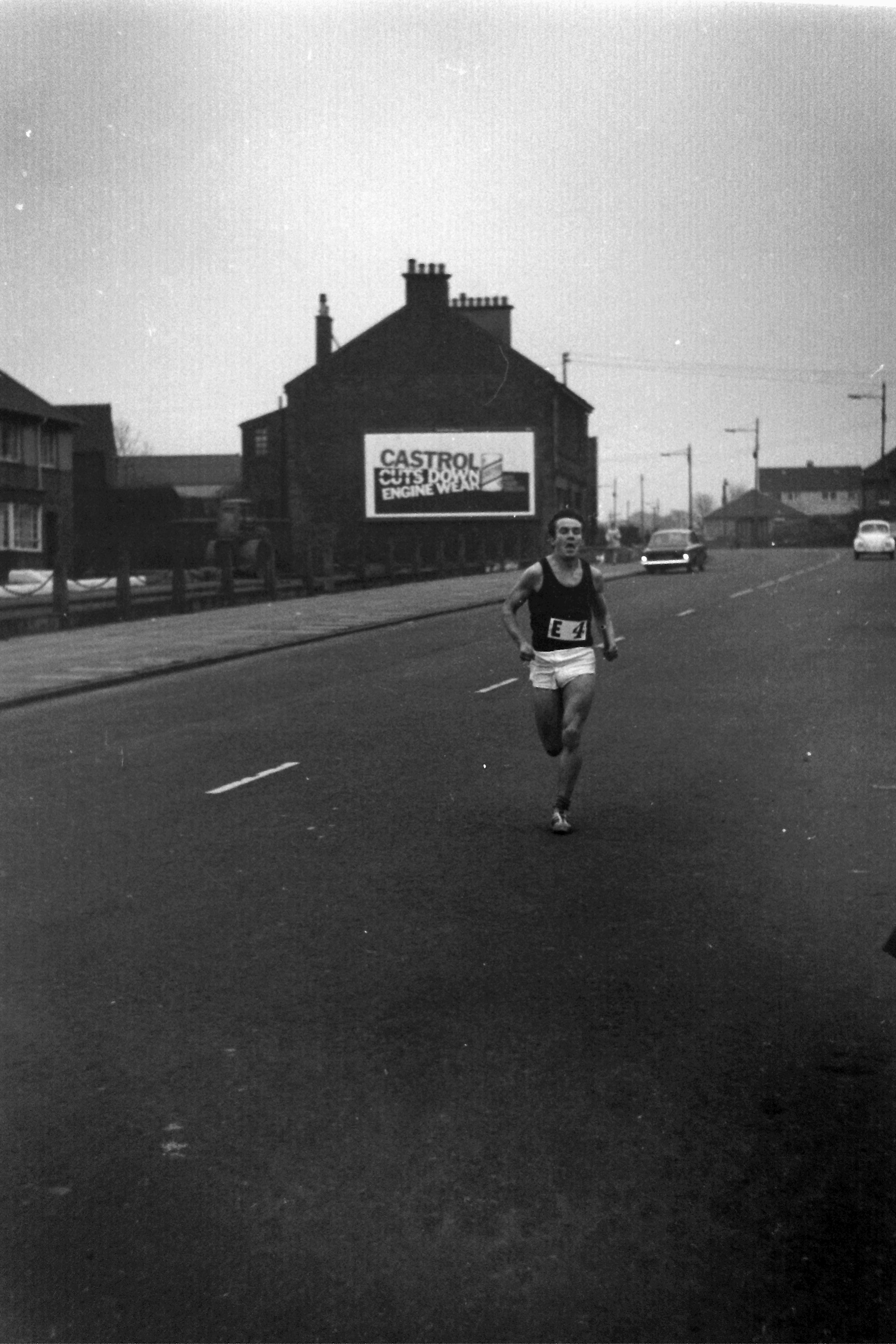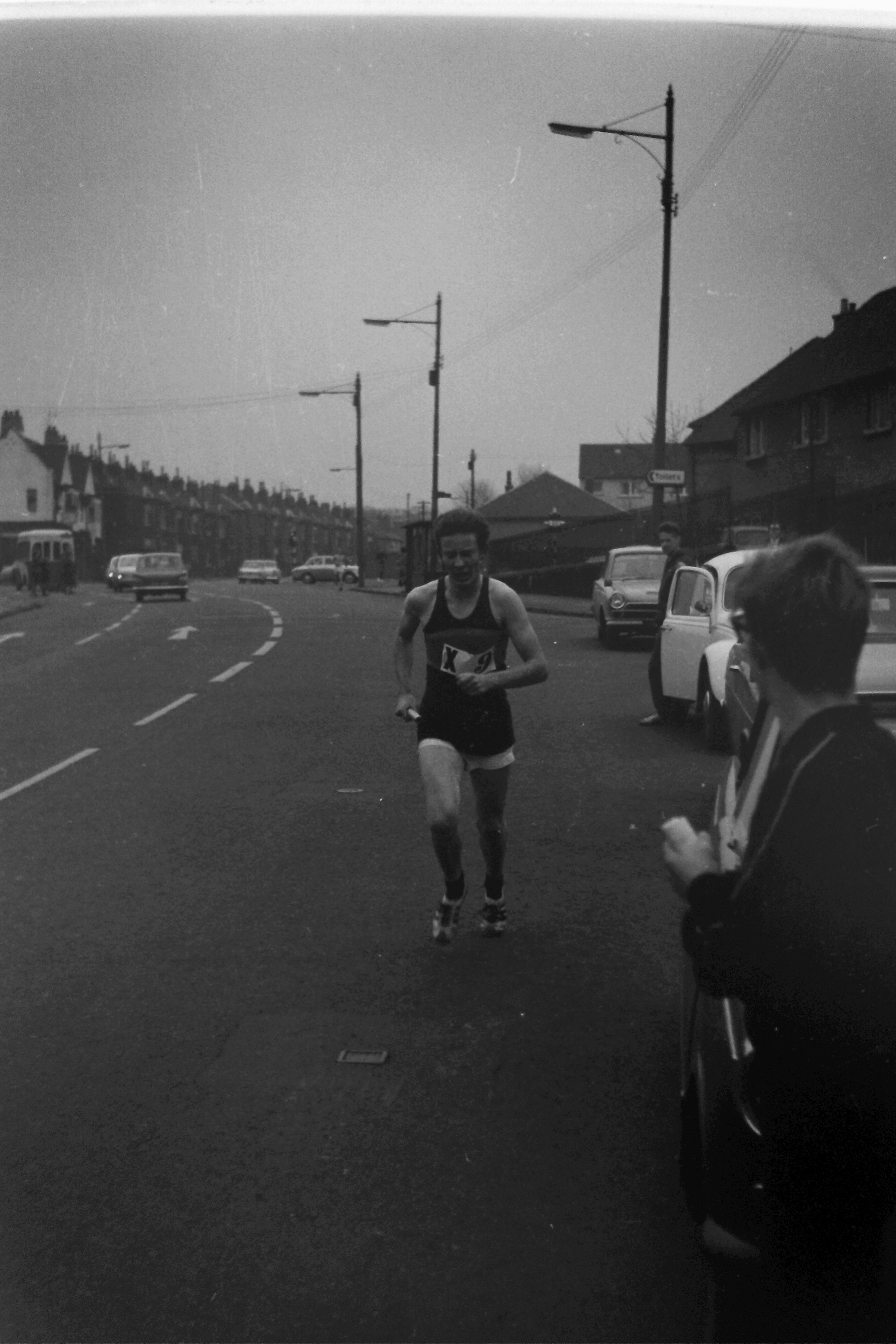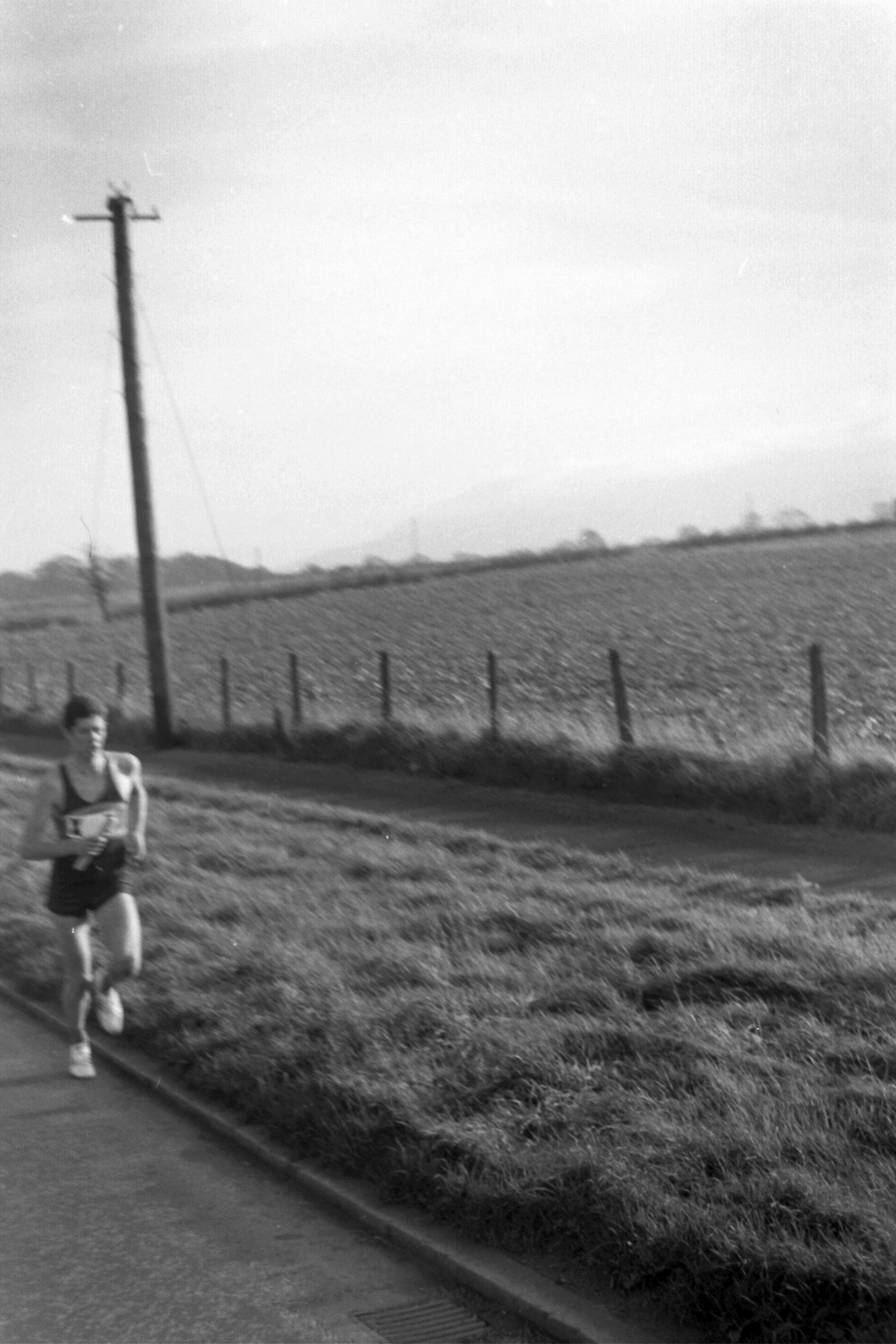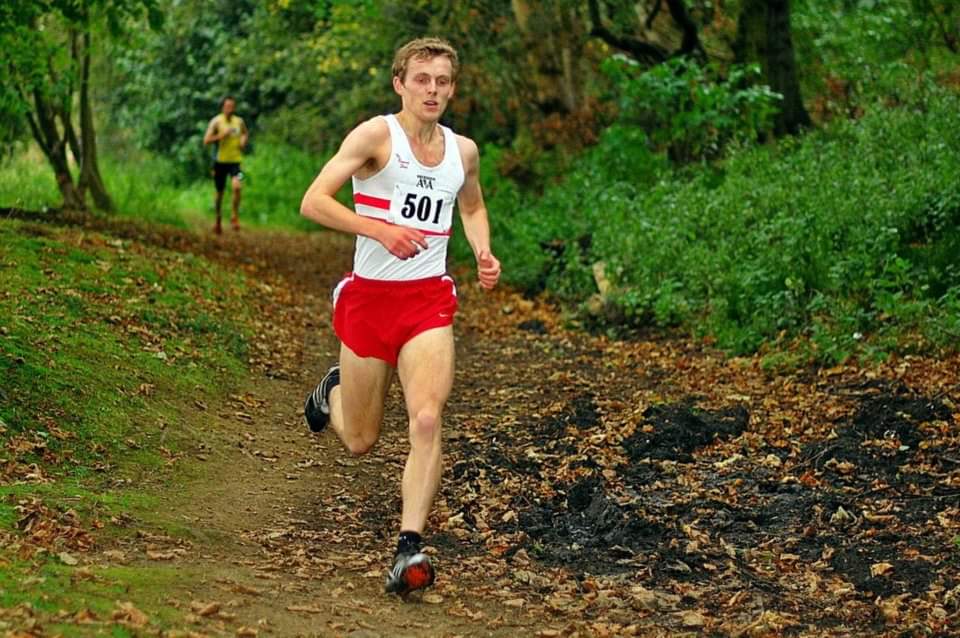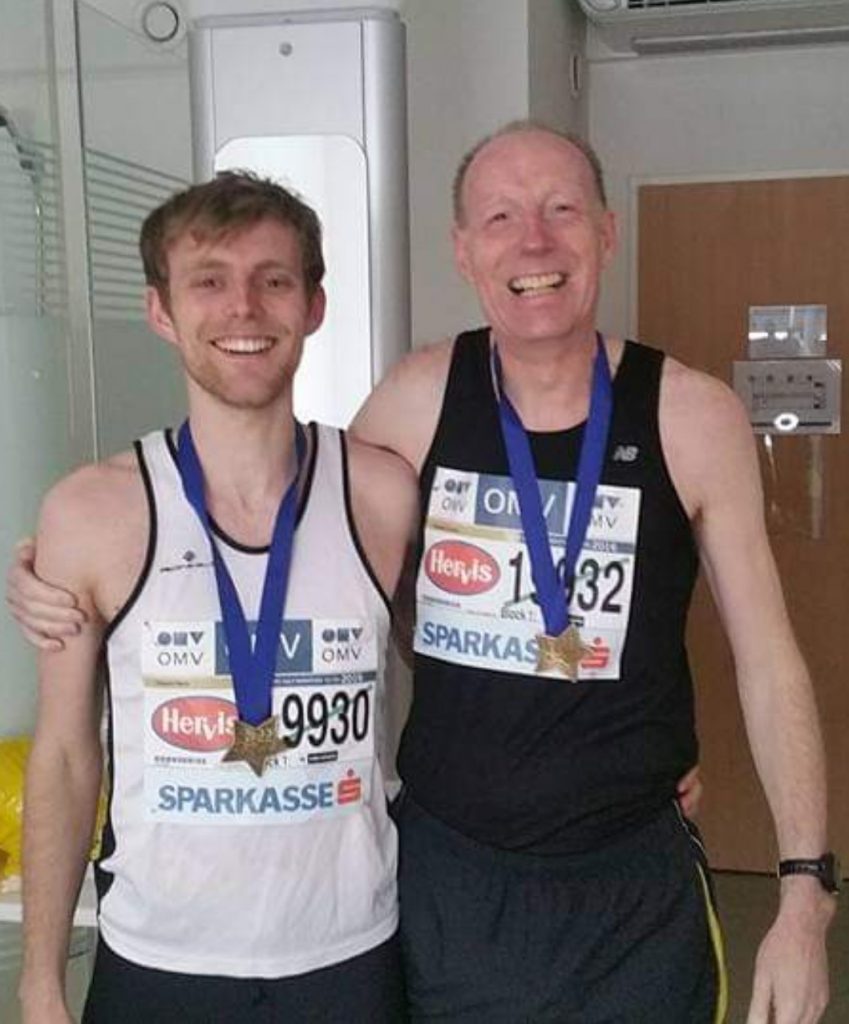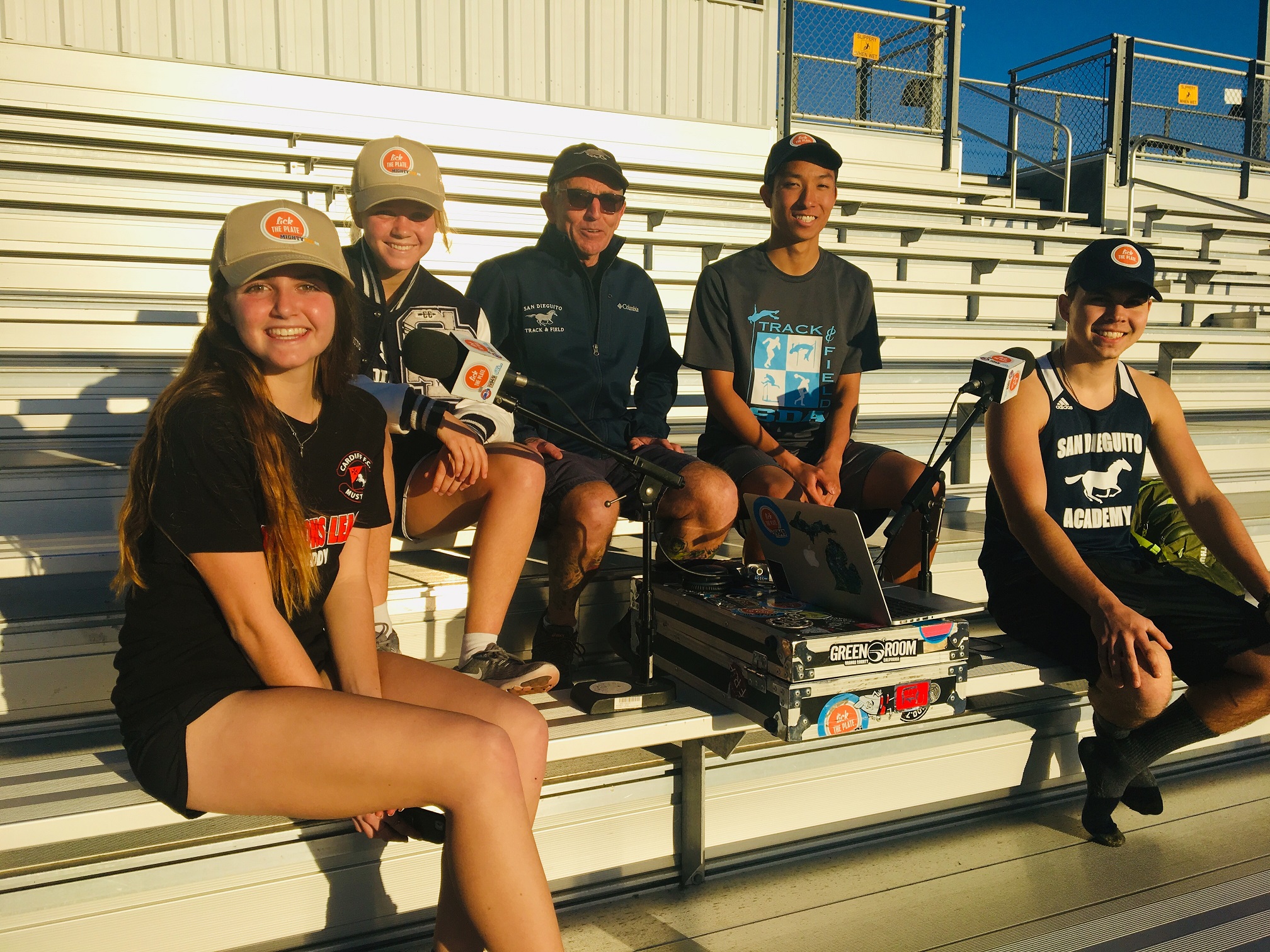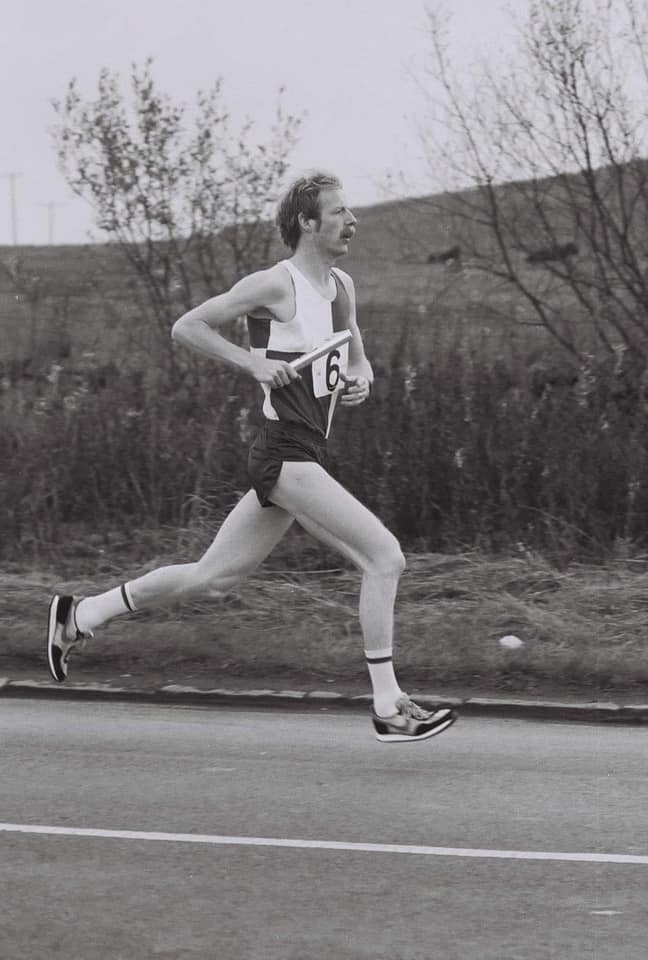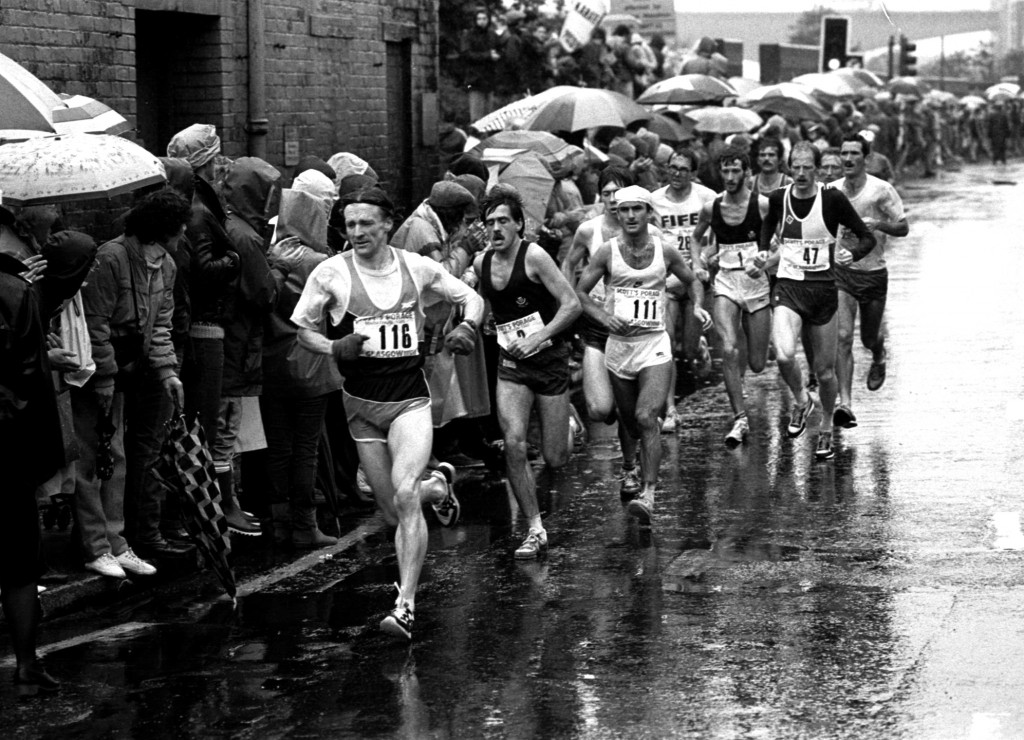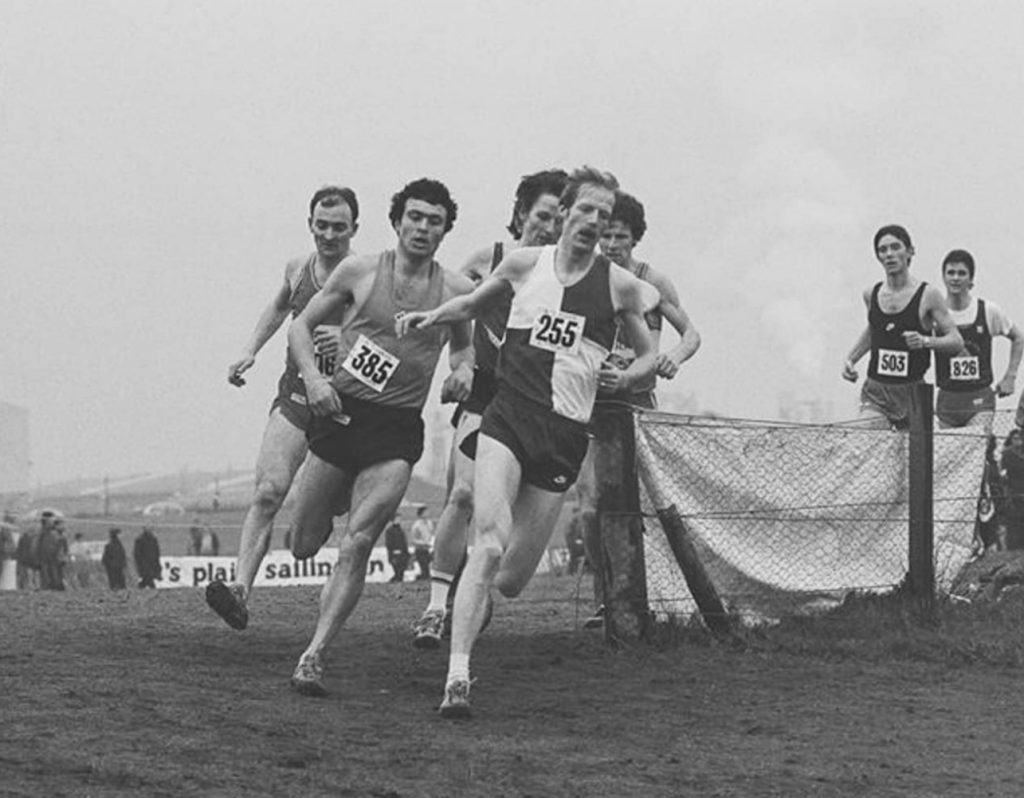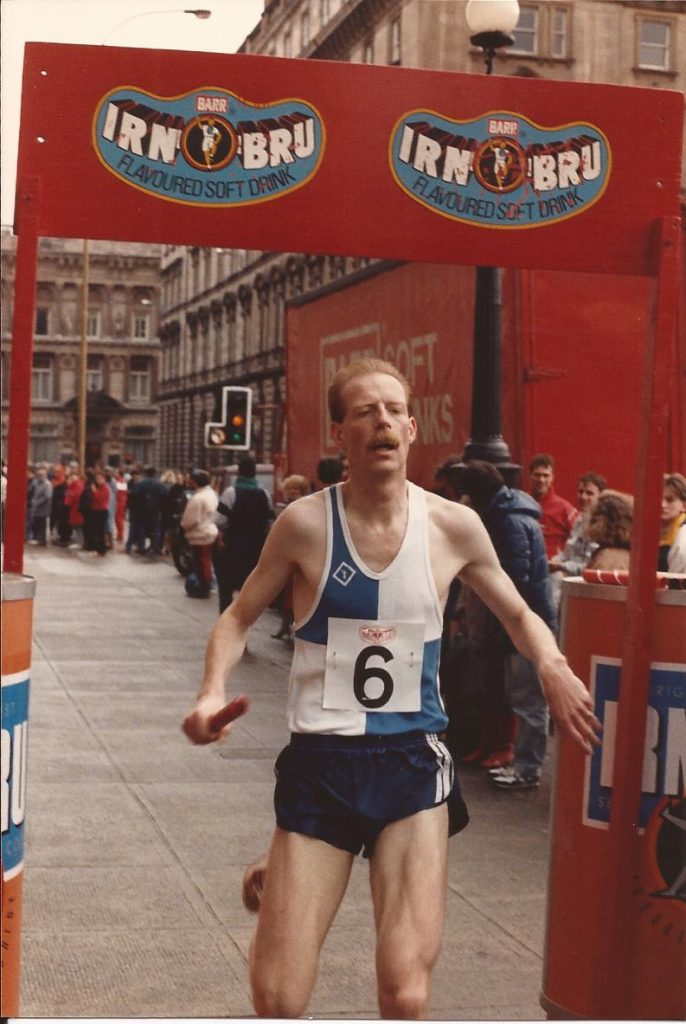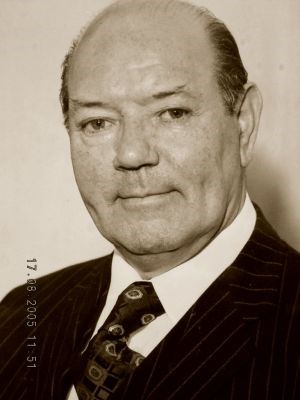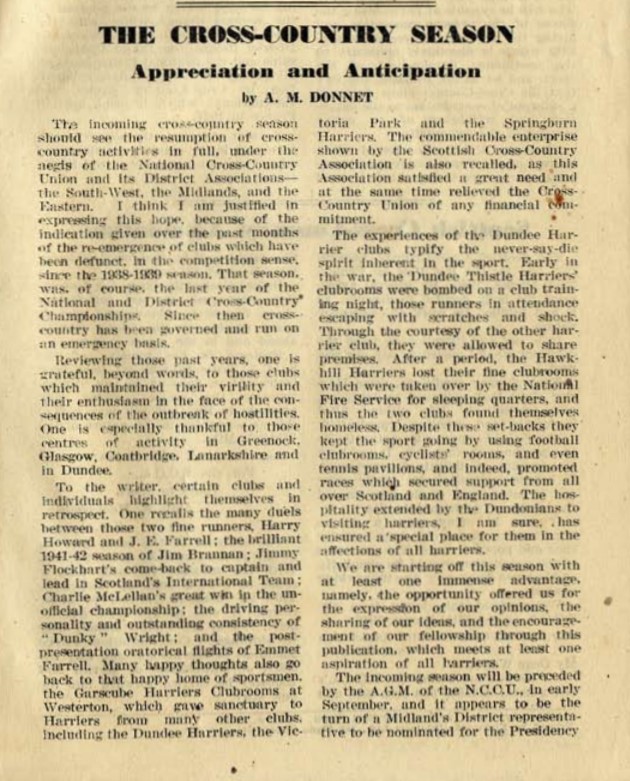Jim Brennan leading Pat Maclagan up the hill at the Sports Centre, Bellahouston Park in 1968
Bellahoustson Park is a favourite haunt of Glasgow families. Apart from acres of well kept grass with good smooth tarred paths it has such attractions as a ski slope, the ‘House of an Art Lover’, the sports for excellence centre, and the Glasgow School of Sport plus the sports centre. For the complete list of attractions you could visit the appropriate Wikipedia page. It has been used for Pipe Band competitions, pop music festivals and when the Pope visited Glasgow, he addressed the crowds in the park. In 1938 the Empire Exhibition was held there and was visited by 13 million people. It was and is also a good venue for cross-country running. Good running surfaces, one him with many approaches giving different gradients, good vantage points and decent changing facilities. It is appropriate that we take a look at just some of the events that have taken place there.
Bellahouston Park was the scene of many an epic cross-country battle. There were club races, county championships, national championships and the world cross-country championship was held there in 1978. There was also the annual meeting in December of every year when the open races for the Helen Corbet and Richmond Trophies were held there. Mainly flat grass with a superb long stretch along beside Mosspark Boulevard the main feature spoken of by cross-country runners is ‘the hill’. Imagine a handkerchief with a pencil pushed up from underneath in the middle. That’s Bellahouston – all trails lead to ‘the hill’ unless you just run round the outside of the park. There have been three lap courses in the park with the hill being tackled twice or three times a lap – ferocious. There was also good changing facilitiues in the centre but, when these became quite expensive, then there was equally good changing in the nearby Cardonald College and on one occasion a nearby secondary school was used.
The major championships every winter are the National Championships closely followed by the District Championships. The Midland District Championships were held at Bellahouston for the first time on 21st January, 1967, won by Ian McCafferty from Lachie Stewart and Alex Brown. There was also a Youths race won by J Cook, Garscube, and Boys Race won by J Gibson, Shettleston, and a Junior Boys race won by J Gallagher of Clydesdale. But for an indication of the quality of the field, have a look at the Athletics Weekly report below.
It wasn’t the only big event held in the Park in 1967 – on 4th March the SWCCU held their national championships there. Reigning champion Leslie Watson retained her title beating Dale Greig by only about 50 ards with Cathie Kelly of Maryhill third. Maryhill won the team race from Dunfermline CPE and Western LAC. There were also races for Intermediates (won by Margaret McSherry), Juniors ( J Johnstone of Teviotdale) and Junior Girls ( J Devine of Fauldhouse).
The Districts were held at the Park a year later, 20th January, 1968, and the senior race was won by Pat Maclagan from Jim Brennan, Alex Brown, John Myatt, Andy Brown and Harry Gorman. The winning team was Shettleston, with Victoria Park AAC and Springburn Harriers second and third. The duel between Maclagan and Brennan was ferocious throughout – have a look at the photograph at the top of the page and the concentration on the two faces. Complete results from the AW are below again.
Of course the ‘Big One’ was always the National Championships and after many years at Hamilton, it was looking for a new venue. In 1969 it was at Duddingston Golf Course, in 1970 at Ayr Racecourse and in 1971 it came to Bellahouston. The date was 20th February, and the race was won by Jim Alder from Alistair Blamire and Dick Wedlock and the team race was won by Shettleston from Edinburgh Southern Harriers and Edinburgh AC. Scottish cross-country running was really on a high at the time and even a cursory glance at the results below will confirm that.
The National would not return to Bellahouston until 1978 but the winter season always started with the short relays – County, then District and then the National. All were held at Bellahouston at one time or another. Three years after the National Championships, the inaugural National Relay Championships were held on 23rd November, 1974, when 56 complete teams and 13 incomplete teams turned up to contest the championships. The winners were Clyde Valley AAC from Edinburgh AC and Edinburgh Southern Harriers. It was a really dramatic relay as the report below shows.
The following year, the venue was chosen for the District Relays which were held on 1st November, 1975, and they were won by Shettleston Harriers from Clyde Valley and Victoria Park.
The 1970’s was the decade when all roads seemed to lead to Bellahouston. For instance on 18th January, 1976, the first really ambitious international race organised by Glasgow’s Sports Promotion Council. The trail was a mile loop which was covered six times by the Senior Men. Some of the best of Scots runners did not turn out – Ian Stewart was one of them – but there were nevertheless athletes such as Brendan Foster, Tony Simmons, Allister Hutton, Davie Logue and Nat Muir out there doing battle. There were four Scottish teams of four men each in the race. The result was a win for Brendan Foster from Tony Simmons by 24 seconds with Allister Hutton a further 21 seconds behind him. Davie Logue was fourth and Nat Muir fifth. The team race was won by England (13 points) from Scotland (14) and N Ireland (30 points). There was also a club race incorporated into the event and there were some red faces among the selectors when a man that they hadn’t selected beat every runner in the B, C and D teams representing Scotland that day. Phil Dolan of Clydesdale Harriers was 16th in the race and his performance was duly noted by the selectors for future reference. In the club races for youths and Boys, the winners were Brian McSloy and Graham Williamson.
The biggest race ever held in Bellahouston Park however was the World Cross-Country Championships which was held there in 1978.
1978 was the big year for men’s and women’s cross-country running simply because the world championships were going to be held there at the end of March. Both SCCU and SWCCU had their championships there – separately of course because that was the way things were still being done. The women were first and on a good day for cross country running held their event in February. The Athletics Weekly report is below.
It was also a rather fraught year for Scottish men’s cross-country running. The athletes were of a class seldom if ever seen in the country before or since, the national was held there before a bigger crowd than usual and the international world cross-country championships were held in Bellahouston Park. The problem was that the Union had already accepted and then turned down the offer from Coatbridge for them to hold the event. Originally accepted and discussed well before the event and Glasgow was the proposed venue. However Coatbridge had been successfully holding District and National Championships for some years and their offer to stage the event was much better than Glasgow’s which was simply to cover the costs. The result was that the event was awarded to the Lanarkshire town whose offer was accepted in writing by the SCCU. They then changed their mind and it went to Bellahouston. The whole story is told here and should be read.
The National was held on 4th March 1978 in Bellahouston Park over the usual hilly course on an unpleasant afternoon of mixed weather. It was a good race with a really good field – with the world championships due to take place in a mere three weeks time, the contenders were all ready for action. Look at the quality of the top 30 runners:
For P McGregor read D Macgregor. Edinburgh AC won the team race with 102 points from ESH on 110 with Shettleston third. Bellahouston Harriers were seventh team to finish. Jim Morton had been the national team manager since 1968 and had held frequent get-togethers of potential team members at Bellahouston over the past two years and the Scots all knew the Park well.
The team was selected and the international was held at the end of the month, on 25th March, on a day of almost non-stop rain. The course was well churned up by the Junior race and by the many spectators who followed their favourites around the course. The Glasgow public as well as the real cross-country aficionados turned out in numbers to support the race which had many of the world’s best men in action. The top twenty of the 168 runners are below.
In the team race, France won from the United States and England with Scotland 9th out of 20 teams. Bellahouston Harrier Frank Clement was 67th. Of the other home countries, Ireland was sixth, Wales 11th and Northern Ireland 16th. In the Junior Men’s race, Said Aouita was 34th – he didn’t like the rain – in a race won by Mick Morton of England. The Scottish team (I Brown, I Campbell, A Douglas, N Jones) finished 9th of the sixteen complete teams to finish.
The women’s race had 99 runners of whom 2 did not finish. The Scottish team (J Shepherd, M Coomber, F McQueen, J Higgins) was 16th out of 18. The top ten were as follows.
The top Scot was Judith Shepherd in 22nd place and Margaret Coomber was 69th. This was undoubtedly the high spot of Bellahouston Park as a cross country venue – Olympians past, present and future galore, world record holders from the past and yet to be in every race and an appreciative crowd who watched to the end on a most unpleasant day.
It was back to ‘auld claes and parritch’ after that one but the domestic quality was still high. The women had separate championships at this time and the SWCCU followed the men to Bellahouston Park when they held their own cross-country relay championships there on 7th March 1982. The winning team was Edinburgh AC (M Gray, A Johnstone, Y Murray) by 51 seconds from Glasgow AC with Kilbarchan third and Pitreavie 4th. Glasgow’s team of A McDougall, S Trotter and I Reilly won the Juniors race from Victoria Park and in the Girls race Victoria Park defeated Edinburgh AC and Glasgow. There was also an Under 11’s race which was won by Colzium from Clyde Valley.
The Men’s National Relays were back at Bellahouston again in October 1988. Greenock Glenpark Harriers were the champions this time. The team, pictured above, had already won the McAndrew Road Relay, the Renfrewshire County championship and the West District Championships. None of these had been easy races to win but nor was it easy to get in to the Glenpark first team at this point with the club operating at a high level in depth. Result below.
It was four years before the District Championships returned to Bellahouston and on 18th January 1992 there were big fields in all age group races, eg 295 Senior Men finished. Results for the top places in the Senior Men’s race are below.
Into the 21st Century and almost immediately it became a venue for a National Championship. From 2001 to 2015 inclusive it was where the new National Short Course Cross Country Championships were held. It had only been held twice before that – both years in the nearby Pollock Estate. The championship was held in January through to 2011 when the date was changed and the event was held in November. There were races for Under 15, Under 17, Under 20 and Senior age groups and for both men and women. The national veterans short course championship was also incorporated into the event. Individual results for the Bellahouston Park Years are as follows.
These were the big events that took place in the park but there were many ‘bread and butter’ races held there. For many years the races for the Helen Corbett Trophy (Youths) and the Richmond Trophy (Senior Boys) were held in nearby Nether Pollock. They were quality races and attracted not only big fields but the top quality young runners in the country with names like Frank Clement, Dave McMeekin and Hugh Barrow all appearing on the trophies. You only need to look at the prize lists on the two forms here to see that. The notion of the winner holding the trophy for a year but also getting a replica of the trophy to keep was a nice one – with a gold medal for second place it had to be attractive. It is often said that it’s the second place award that determines the quality of the field and in that case, gold helps! In time the races moved to the Park where they grew to include a senior men’s race.
There were many other races held there. For instance Bellahouston Harriers held their 6 mile road race there.
Currently, the very popular Jimmy Irvine 10K Road Race is held there Park every November. Jim was a respected athlete in his own right at a time when standards of Scottish distance running were high. He ran for decades in the colours of Bellahouston Harriers. The race itself, very well supported by members of both local clubs (Bellahouston Harriers and Bellahouston Road Runners) it is an open road race contested by runners from all over Scotland – and at times from further afield. This is perhaps the major race regularly run in the Park at present: a tribute to one of Bellahouston’s finest.
